キアソファリンクス・フォアイ "モリロ" 第8世代
Cyathopharynx foae "Moliro" Generation 8
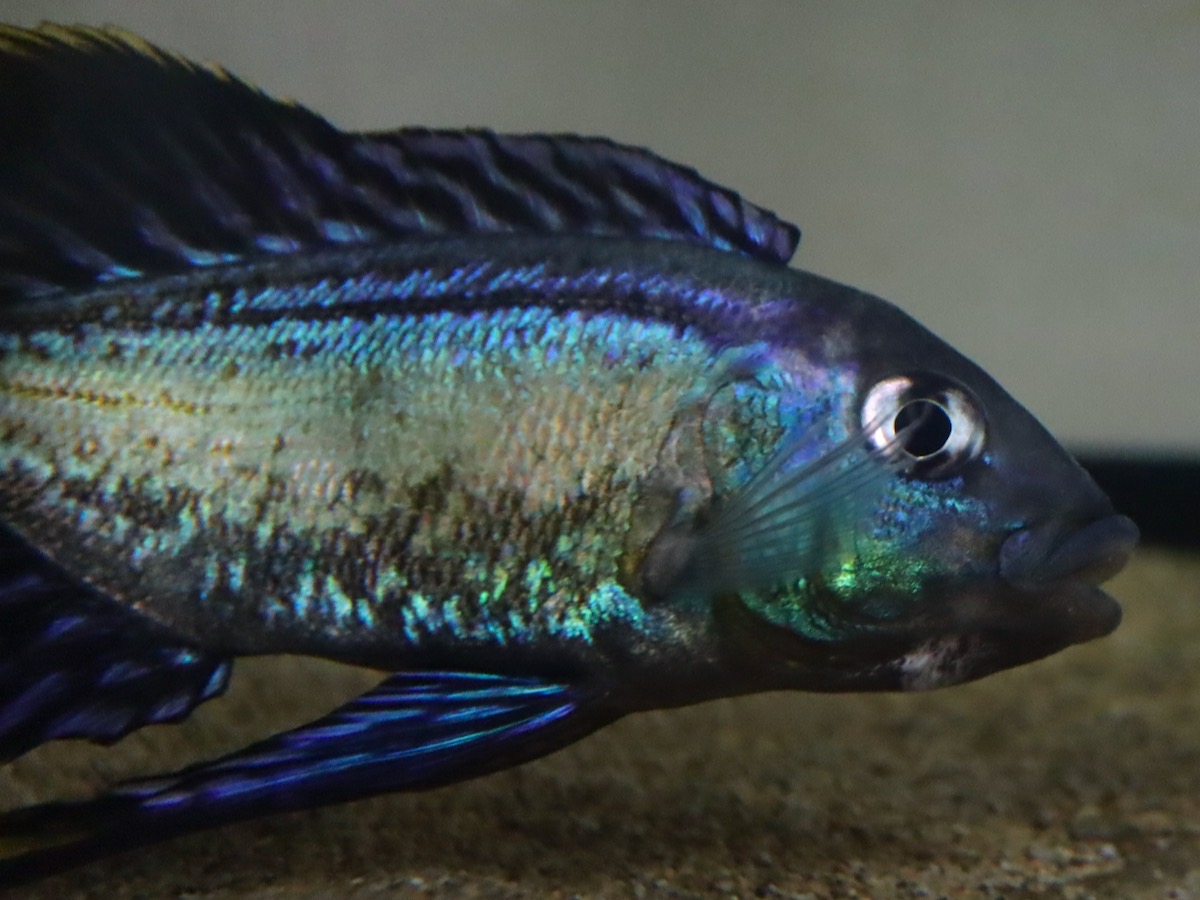
(このページは新しい画像が下にあります。 Recent Bottom)
第8世代(generation 8: G8 いわゆるF8に相当)が産まれました。(2018年7月)
The 8th generation (G8, equivalent to so called F8) of Cyathopharynx foae "Moliro". Born in Jul. 2018.

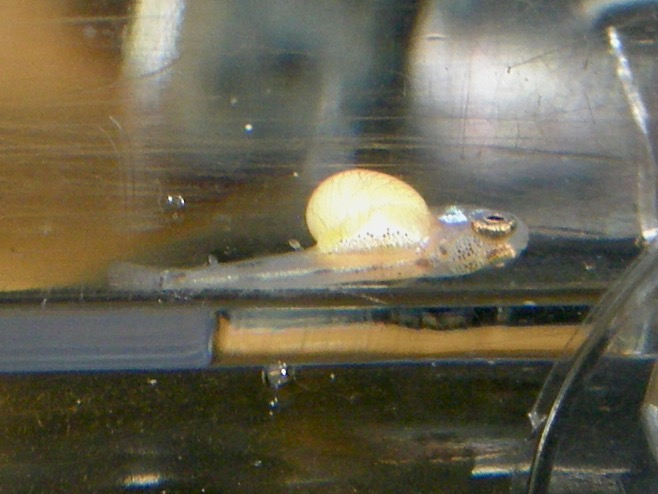
2016年3月に生まれた親世代(G7)は、2017年5月から産卵を始め同シーズン中に7回産卵しましたが、親魚としての成熟度や水槽の空きスペースを考えて、すぐには採仔せず、2018年春から繁殖させようとしました。しかし、30回以上食卵を繰り返し、思ったようには行きません。大体は、産卵時に咥えられた卵が4日目に減り、5日目になくなってしまいます。卵が食べられたことはフンを見れば分かります。そんな中、1匹のメスが6日目以降も少数の卵を咥え続けたのでこれを隔離しました。8日目に全て吐き出されてしまい(画像左)、ほとんどの卵は発生が進んでいませんでしたが、1個(1匹)のみ胚が見られ、これを産卵箱に回収しました。右の画像がその「八日目の胚」です。これを生後0日とします。
前世代(G7)のときも同様でしたが、最終的に採仔できたときには、産卵時にオスが造るクレーターの形が整っていました。このような状況から、繁殖行動時の受精に問題があると考えています。発生が進まないと食卵するのではないでしょうか。
Similar to the previous generation, in this generation of breeding also, eggs were often eaten on fourth or fifth days after spawning. After more than 30 times eating eggs in the fish group, one female spat out eggs after eight days of the spawning. Only one of the spat eggs had an embryo.
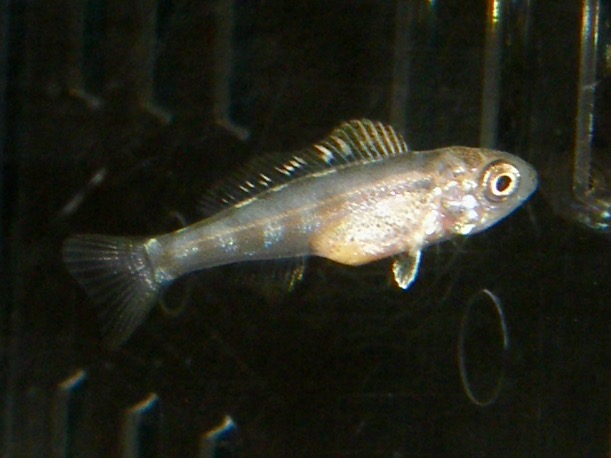
吐き出し後6日目。
Six days after the birth (Fourteen days after the spawning).
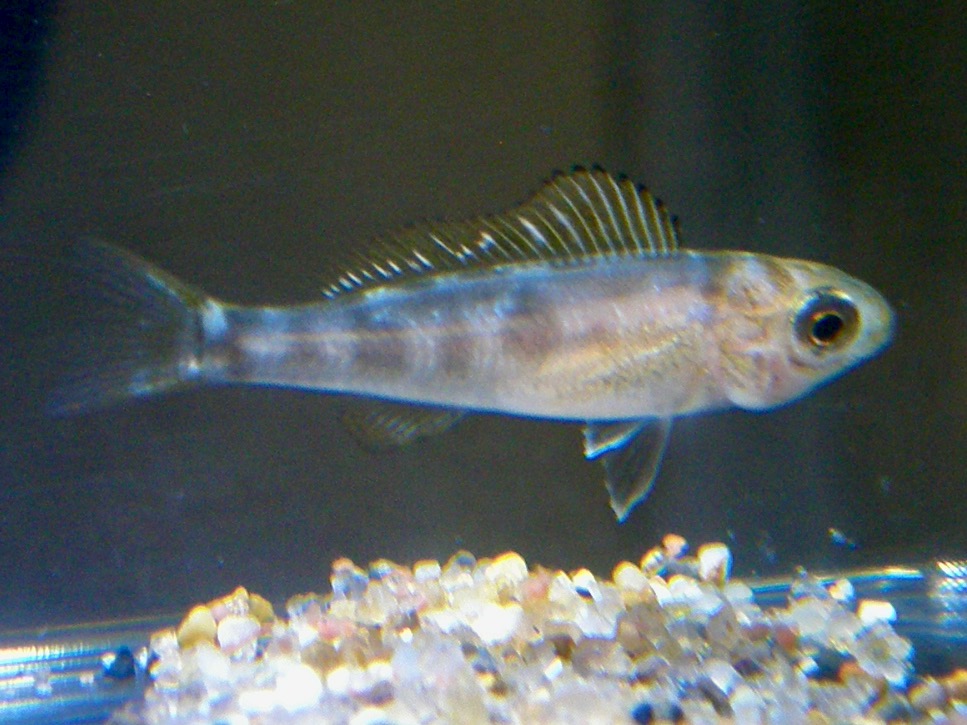
13日目。13th day.
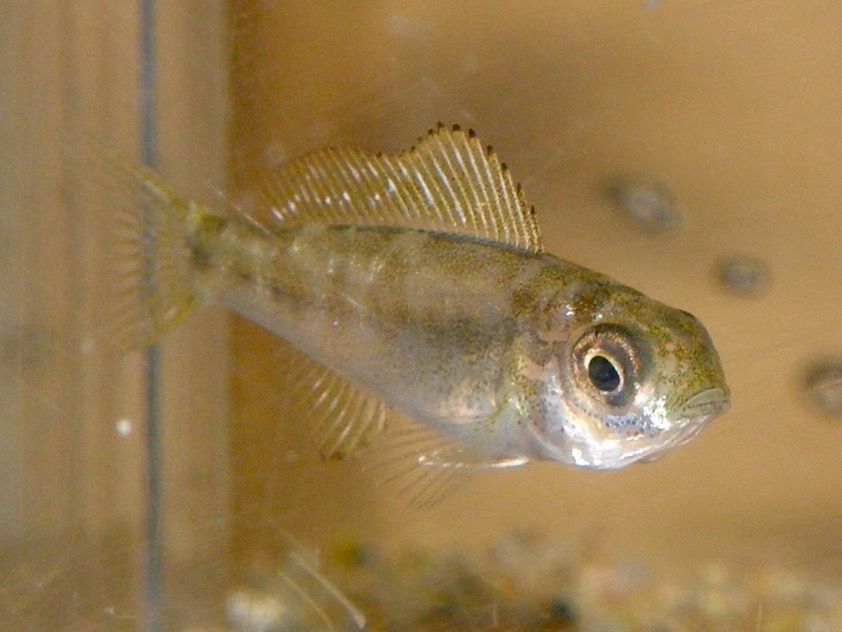
20日目。20th day.

27日目。27th day.

上とは別のメス親が産卵後6日目まで咥えていましたが、驚いて卵(胚)を吐き出してしまいました。今回は全て発生が進んでいました。画像は吐き出された翌日(1日目とします)のものです。
Another female spat out eggs when it was frightened as early as six days after the spawning, but this time all the eggs were developing. Photo of the next day.
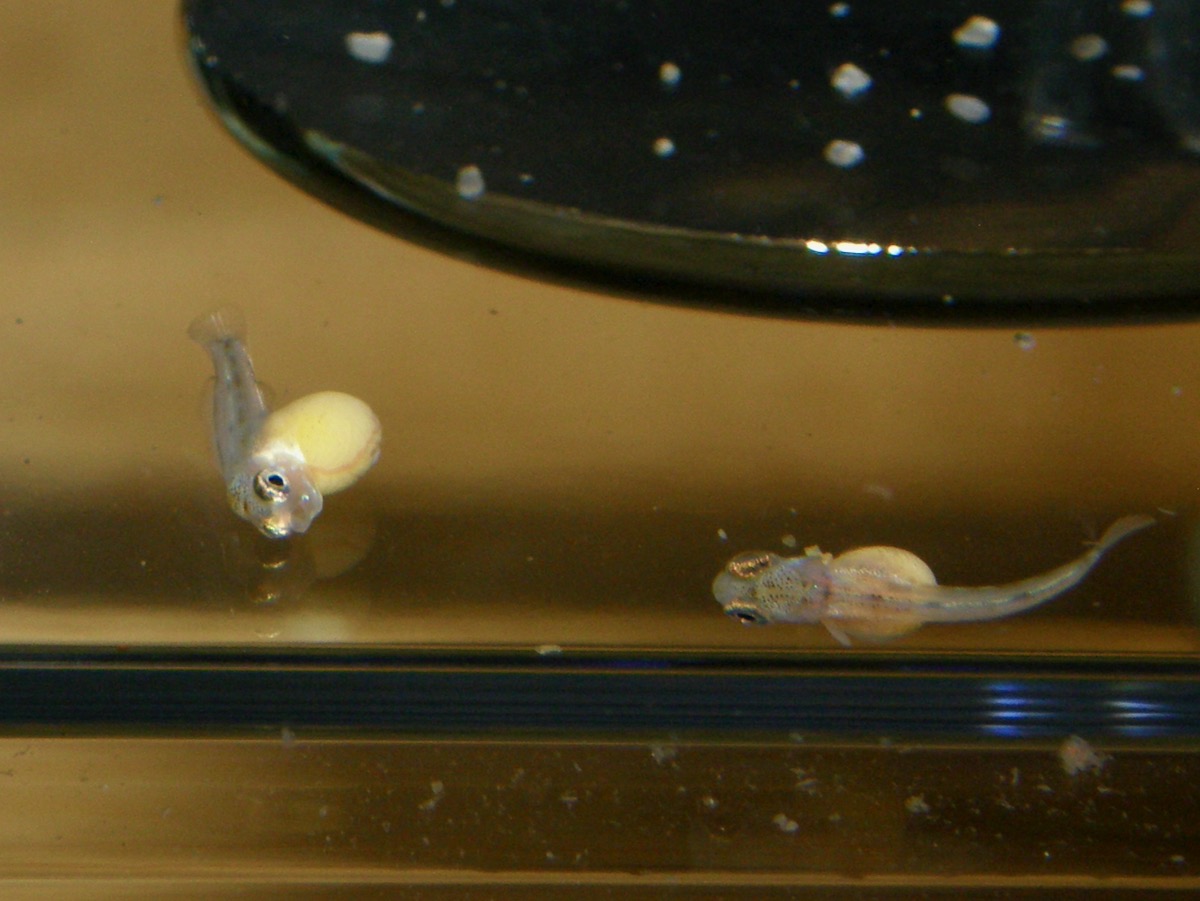
5日目。吐き出されたのが早かったため、ヨークサックはほとんど縮小していません。また、斃死率が高くなっています。
However, it was too early and there was a certain degree of mortality. Embryos of the fifth day.
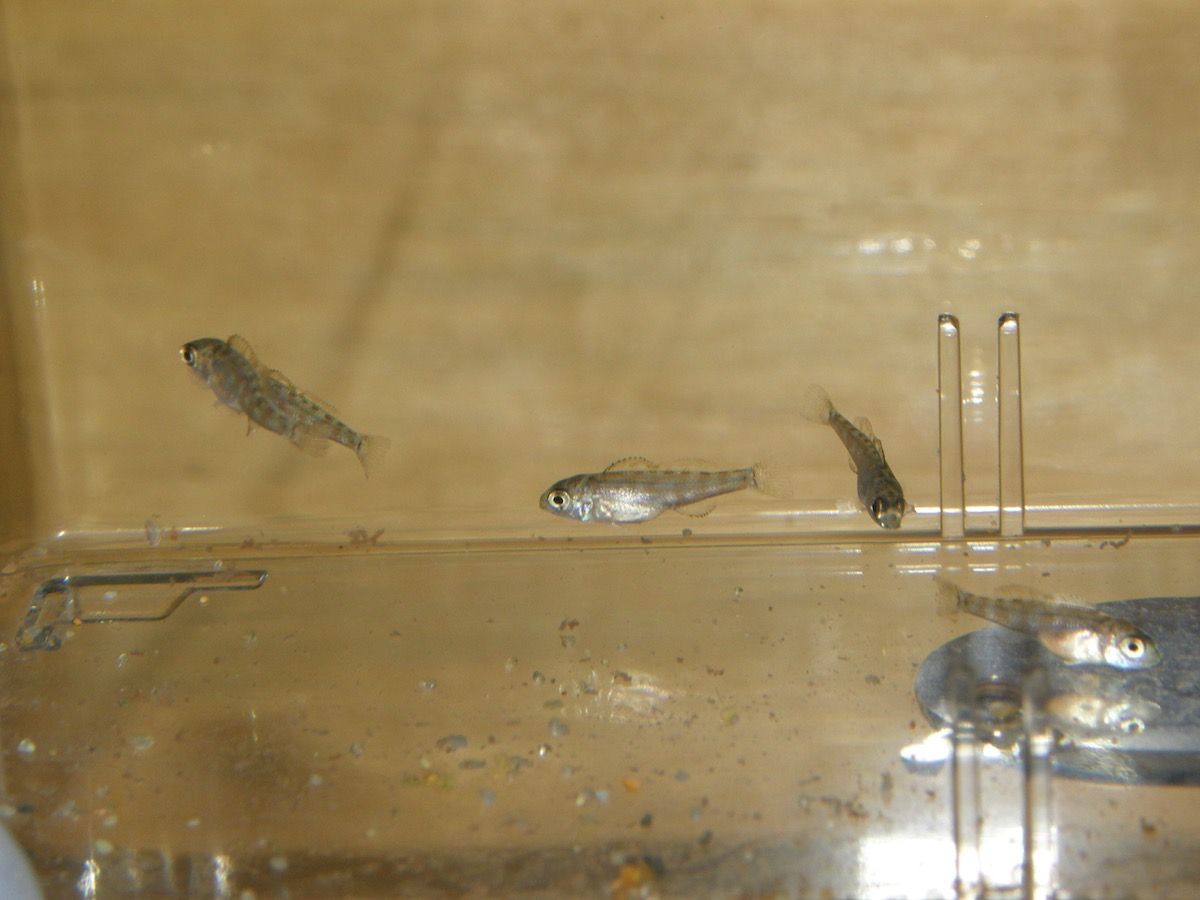
12日目。 Twelfth day.

19日目。冷凍ワムシを食べています。
19th day.
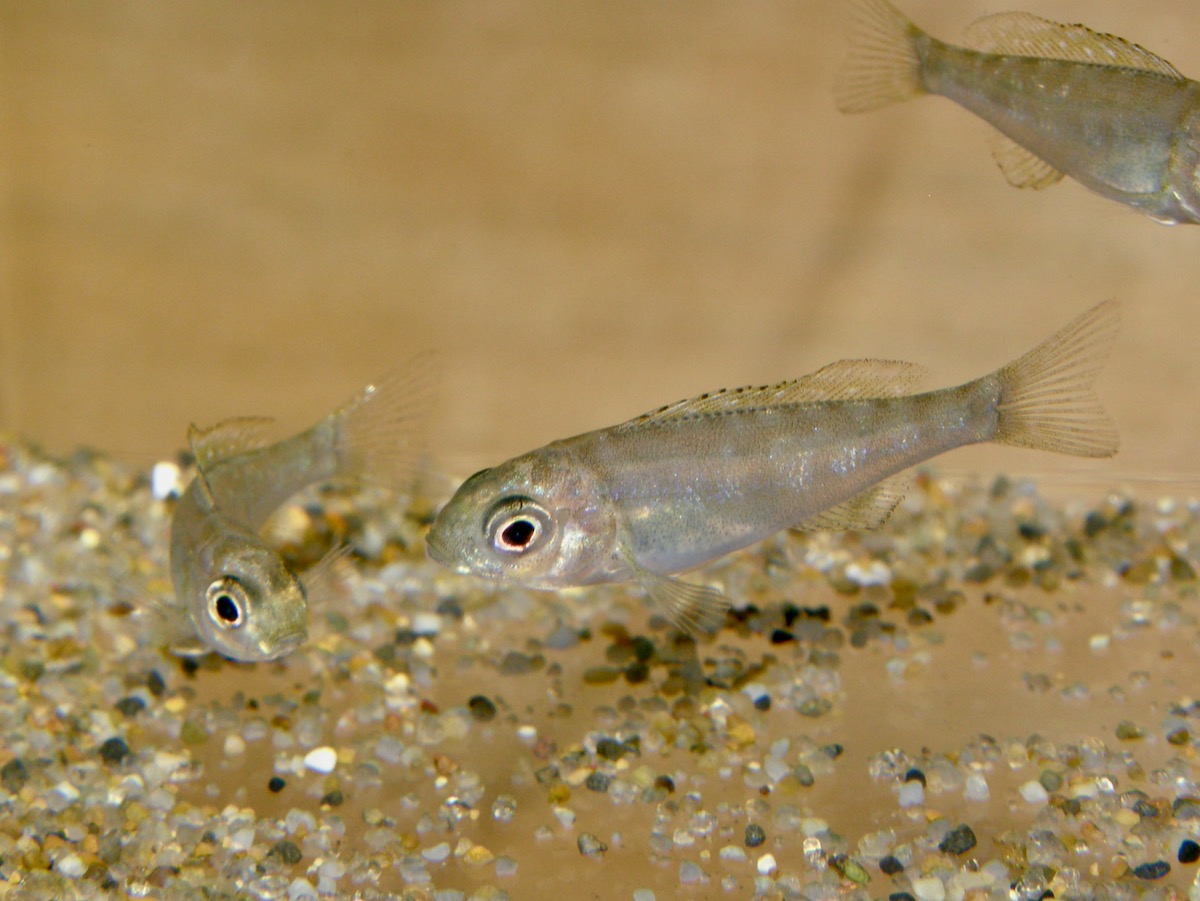
33日目。33rd day.

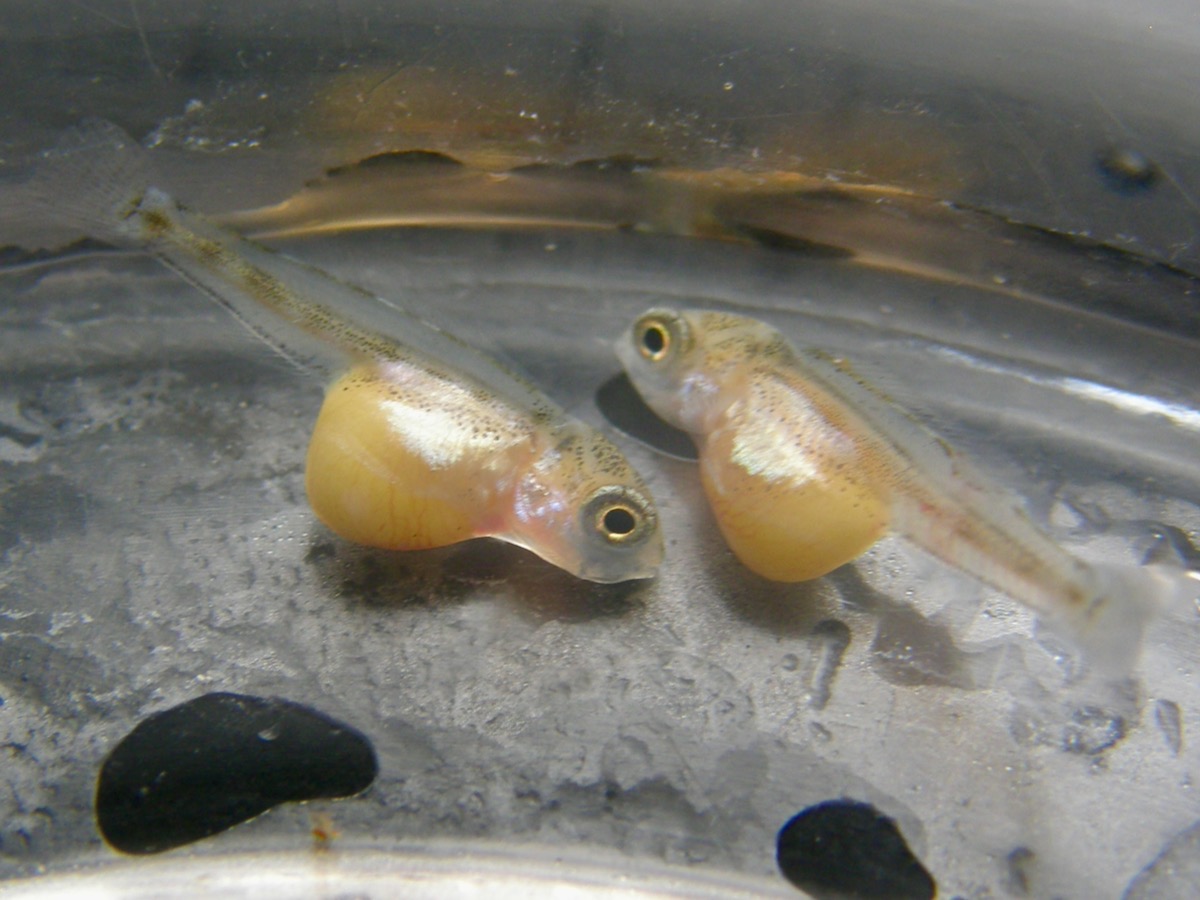
8月に入り、また新たな稚魚が吐き出されてしまいました。今回は産卵後12日目で、かなり発生が進んでいます。既に群れを作る性質が見られますが、自由に泳げるわけではなく、やはり卵を咥えたメス親は隔離しておかないと、この時点で稚魚が他魚に食べられてしまうでしょう。
Early in August, a new clutch of embryos were spat out in twelve days after the spawning. They already tend to flock together, but as they cannot swim freely, the mother fish with eggs in its mouth should be separated from other adults. Otherwise, the embryos will be eaten at this point.
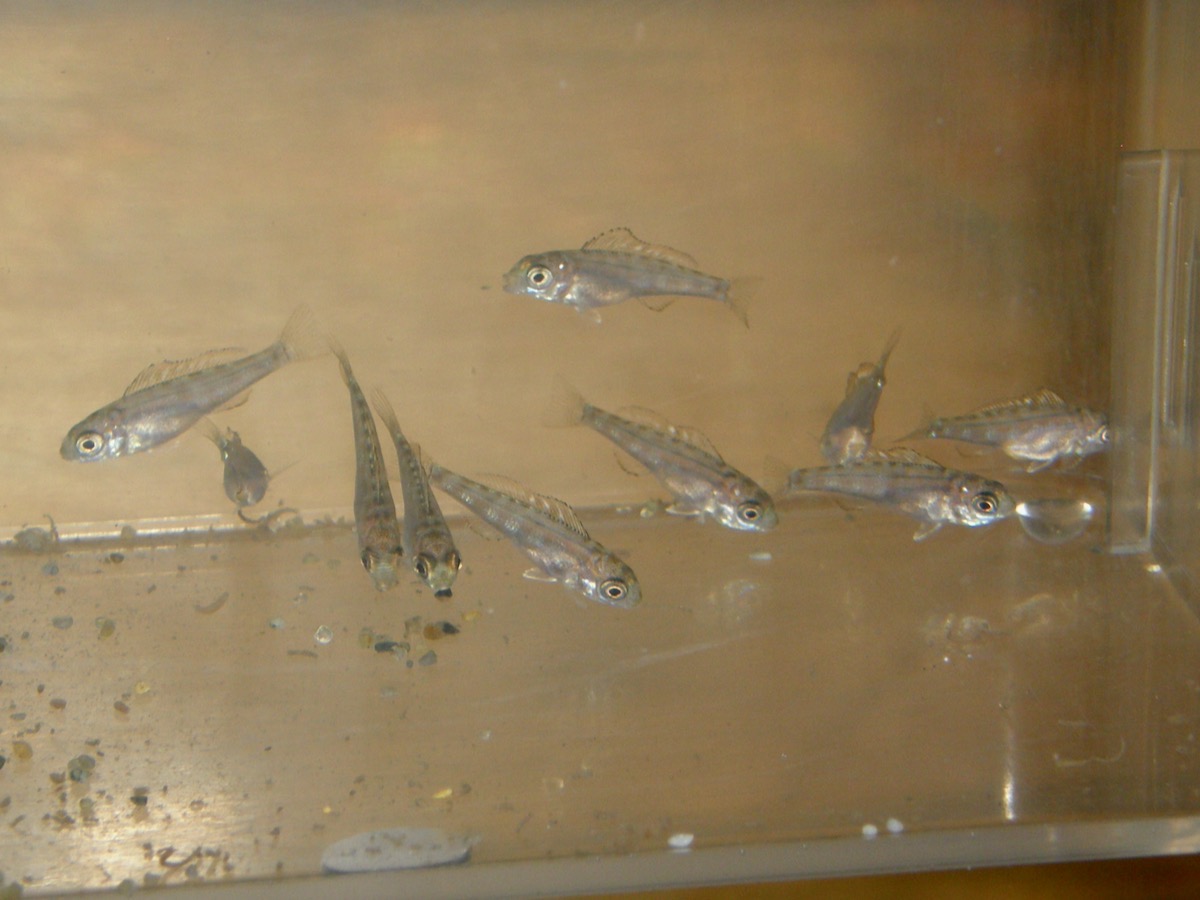
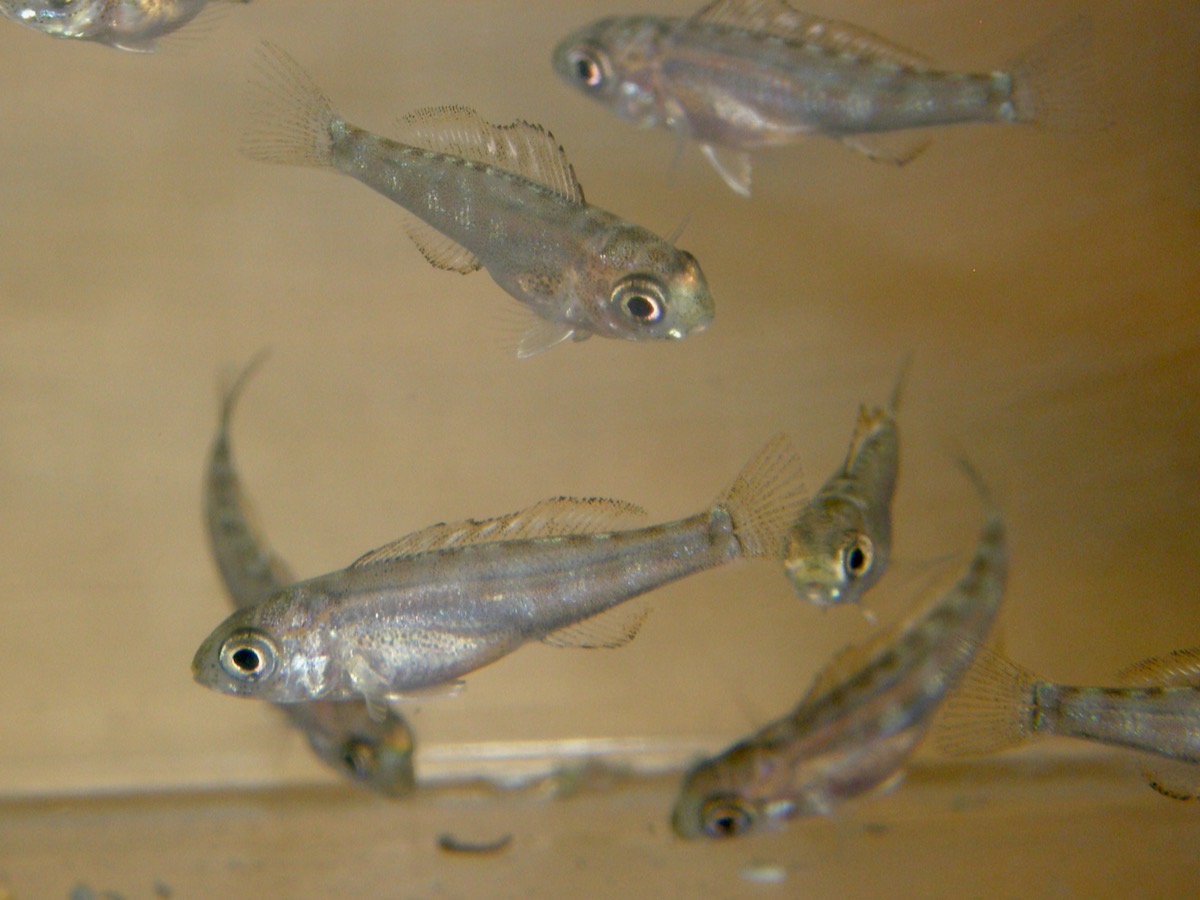
7日後。ヨークサックはほぼなくなっています。
On the seventh day, the yolk sack has almost disappeared.
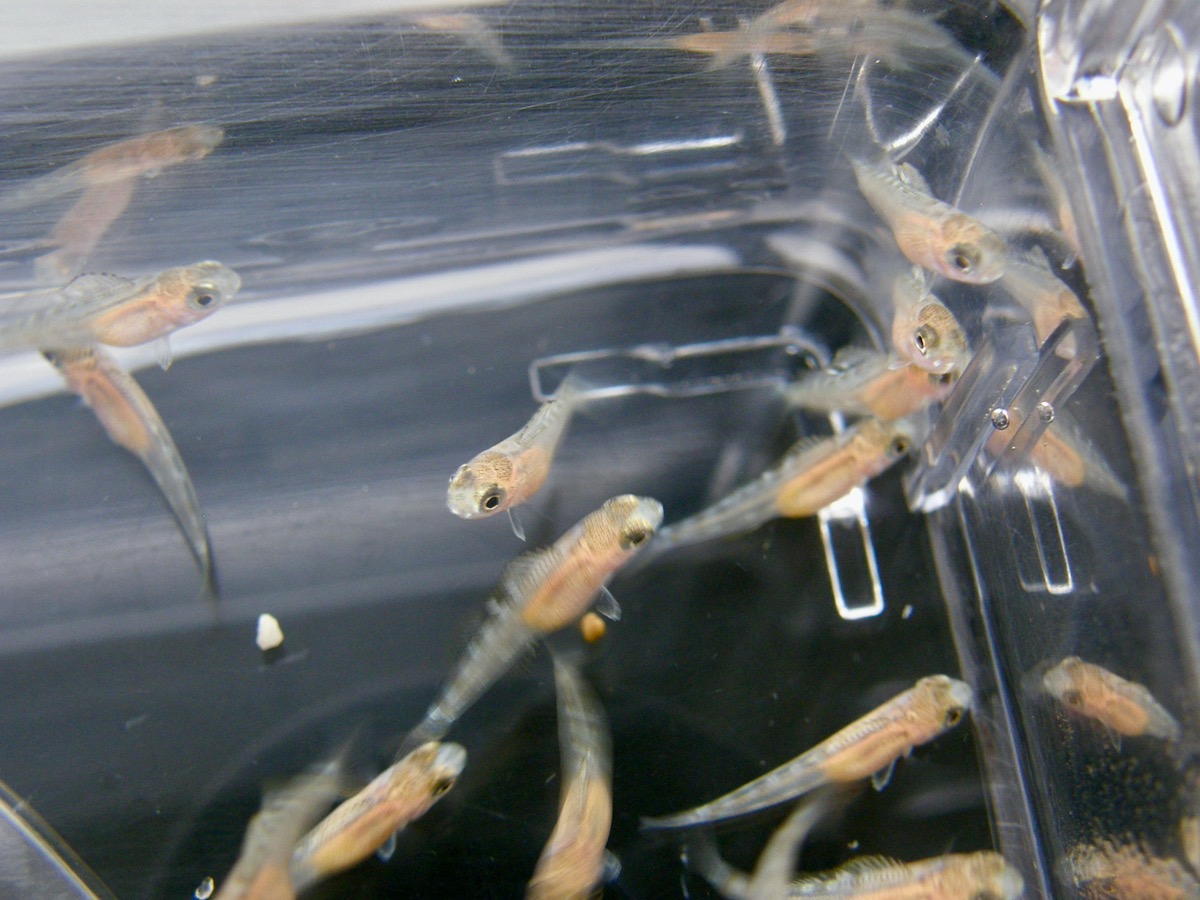
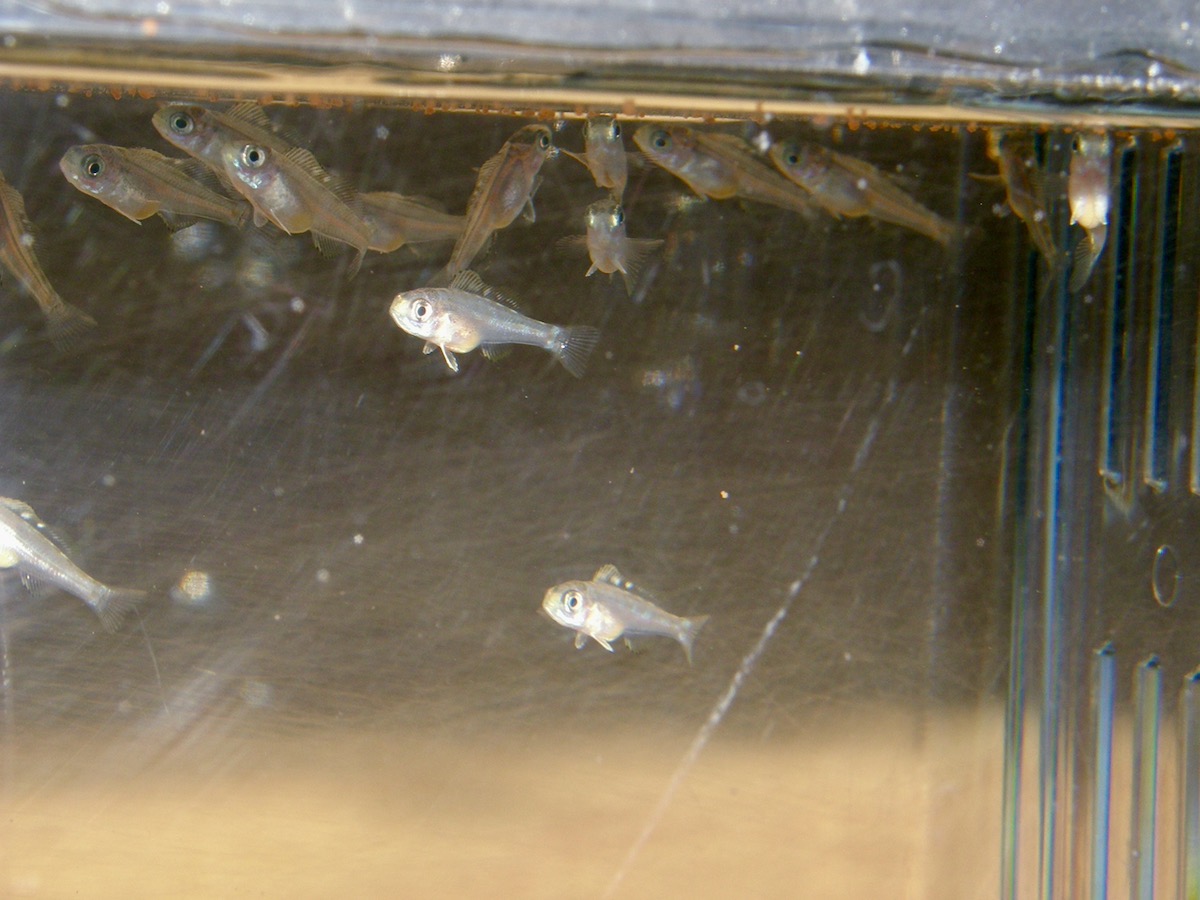
8月中旬、今回は産卵後15日目まで咥えていたので稚魚を吐かせました。十数匹と数も多く、ほぼ正常な繁殖だったようです。魚が繁殖行動に習熟したのでしょうか。
In mid-Aug, this time a female kept keeping eggs/fry for 15 days, and I took them out. More than a dozen of fry came out, and the reproductive behavior mast have been normal. I guess the fish acquired proficiency in the behavior.
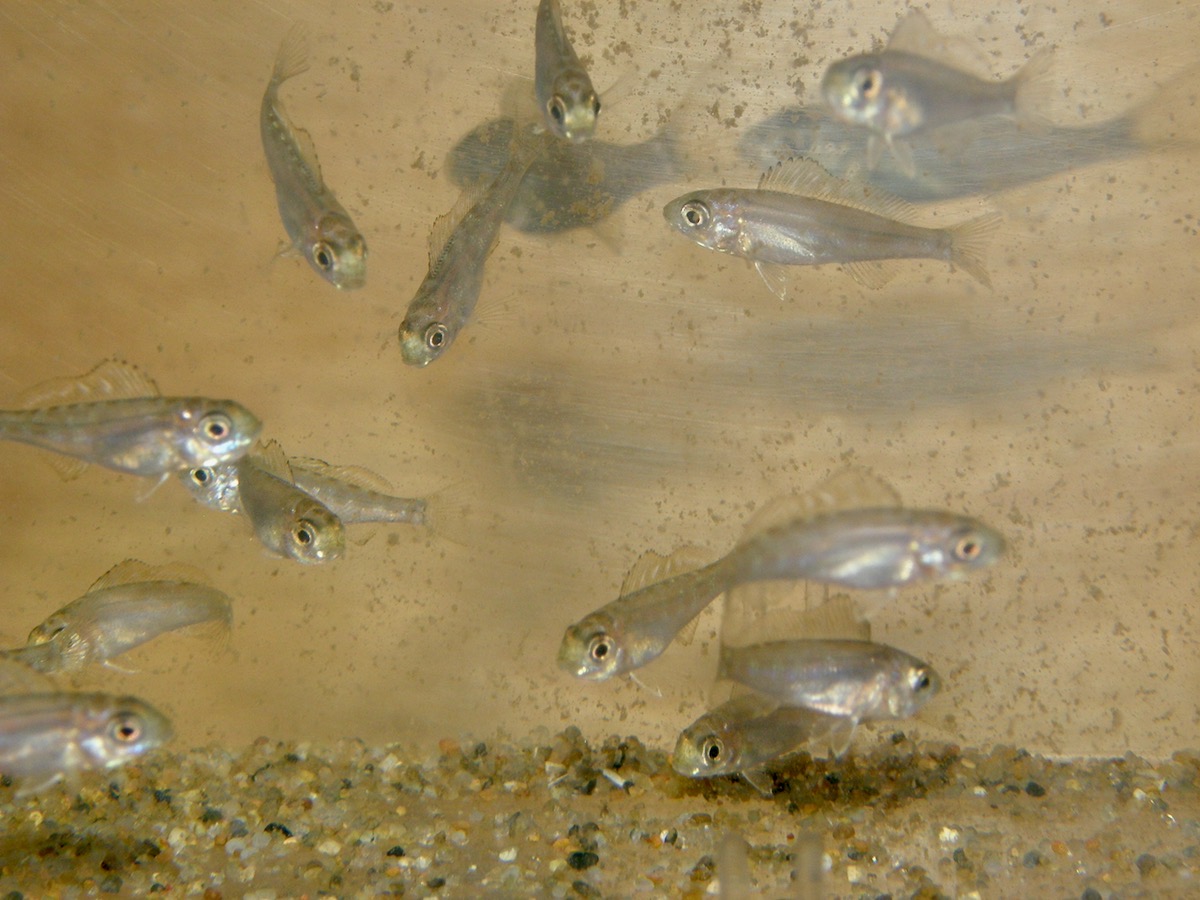
7日後、冷凍ワムシを食べています。
Seven days later, fed with frozen rotifers.
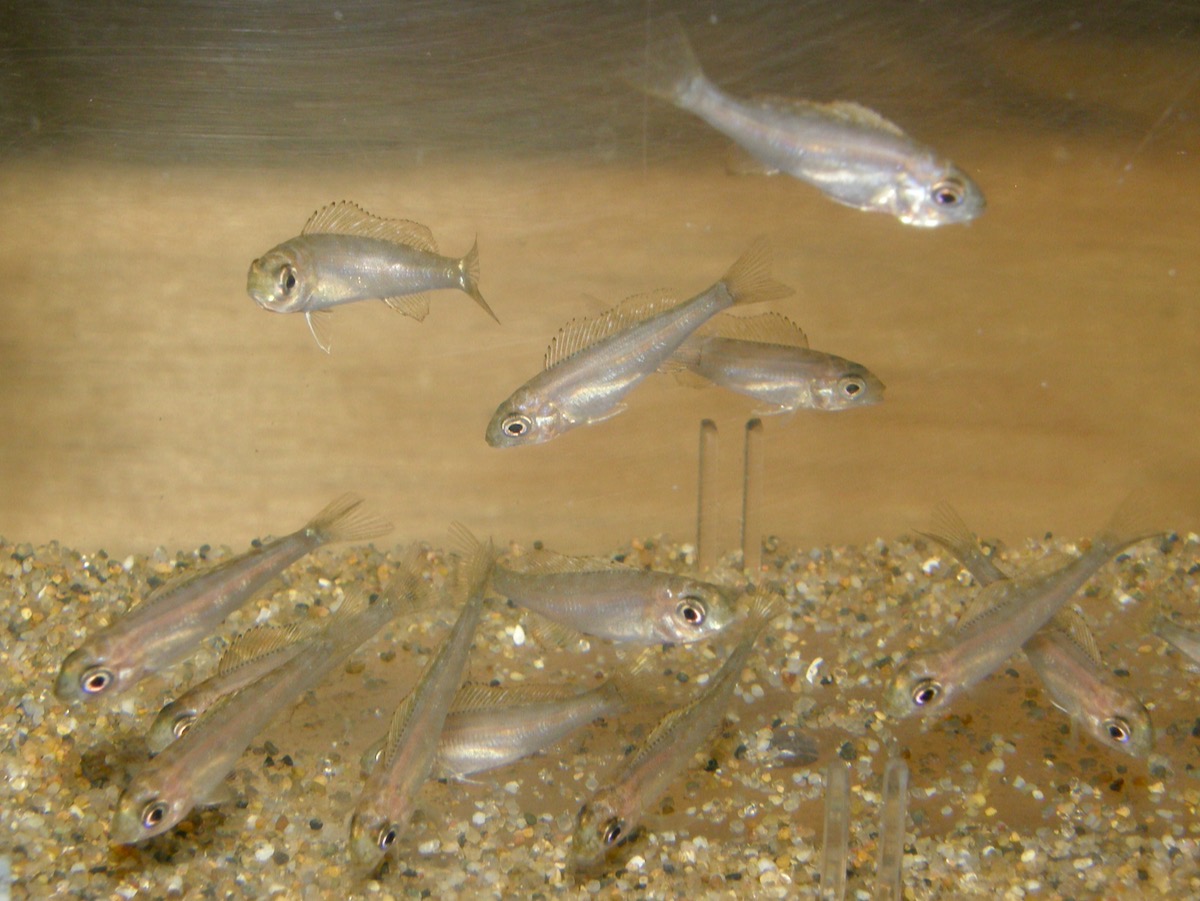
14日目。14th day.
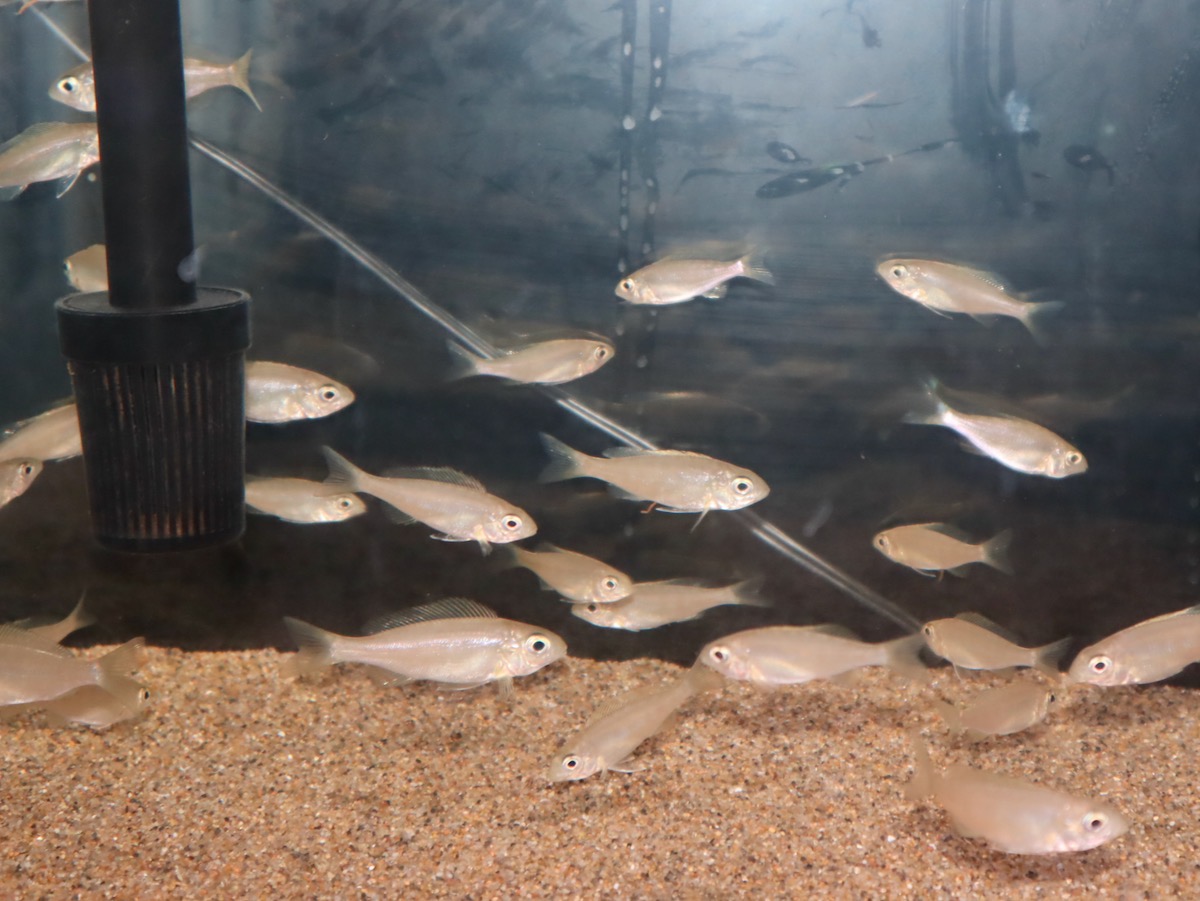
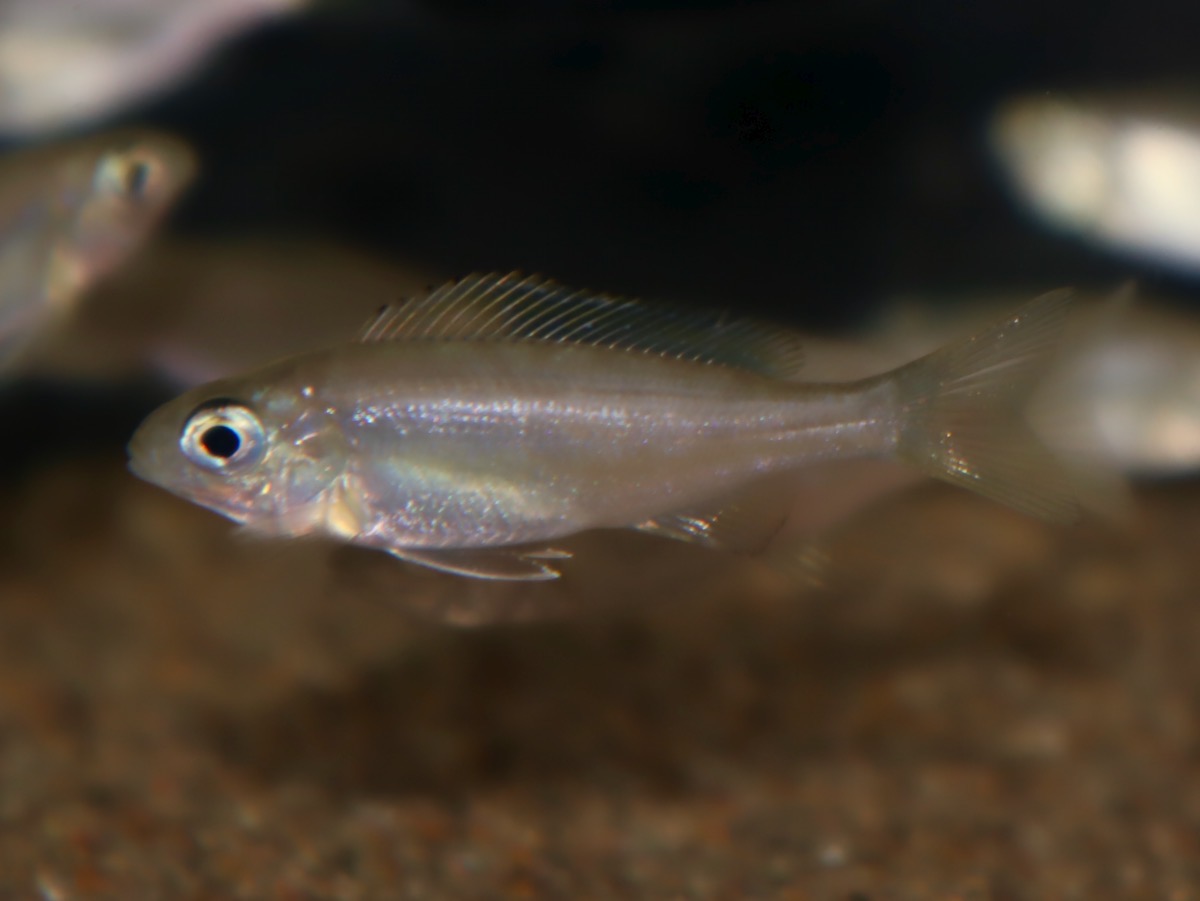
10月、全部の幼魚を1つの60cm水槽へ。
Oct. 2018, all the baby fish are in the same 60 L tank.
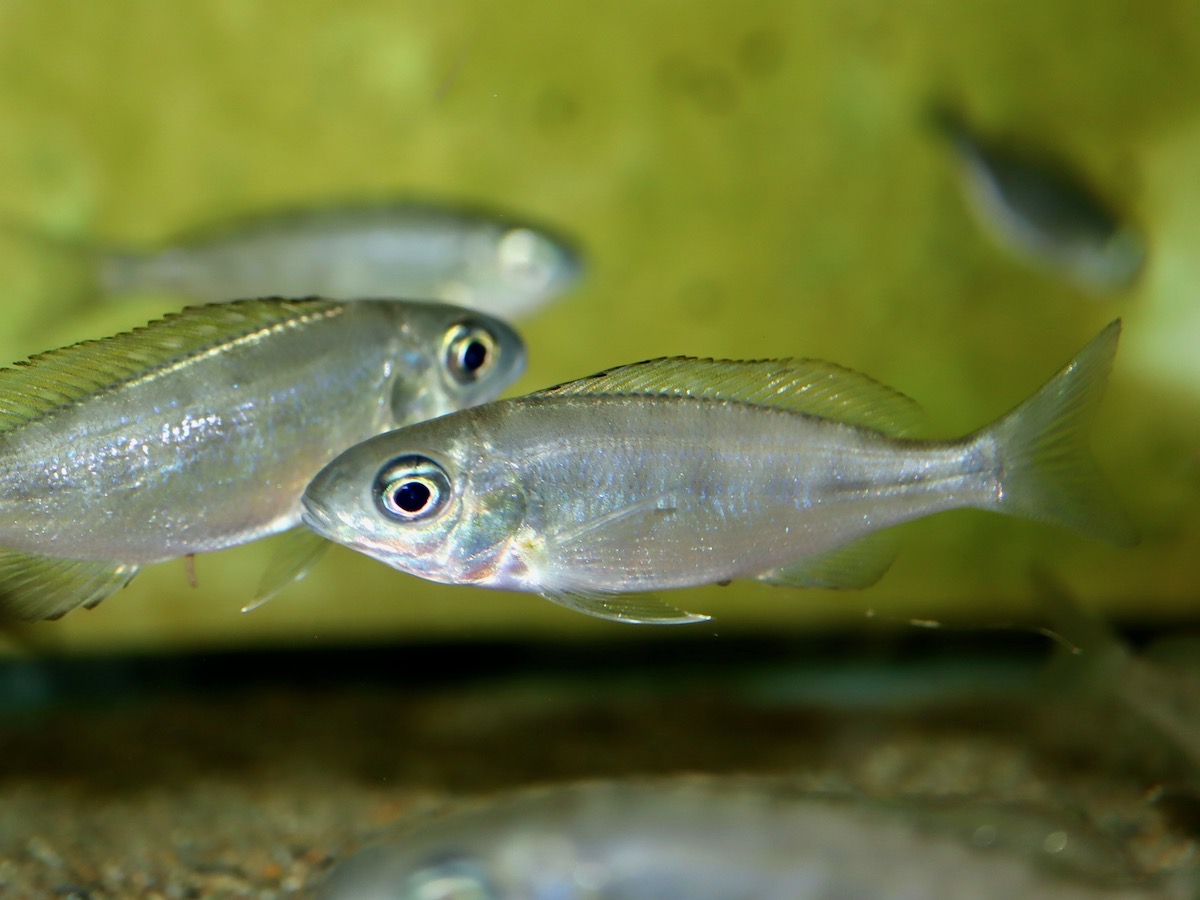

12月、90cm水槽へ。Dec. 2018, transfered into a 150 L tank.
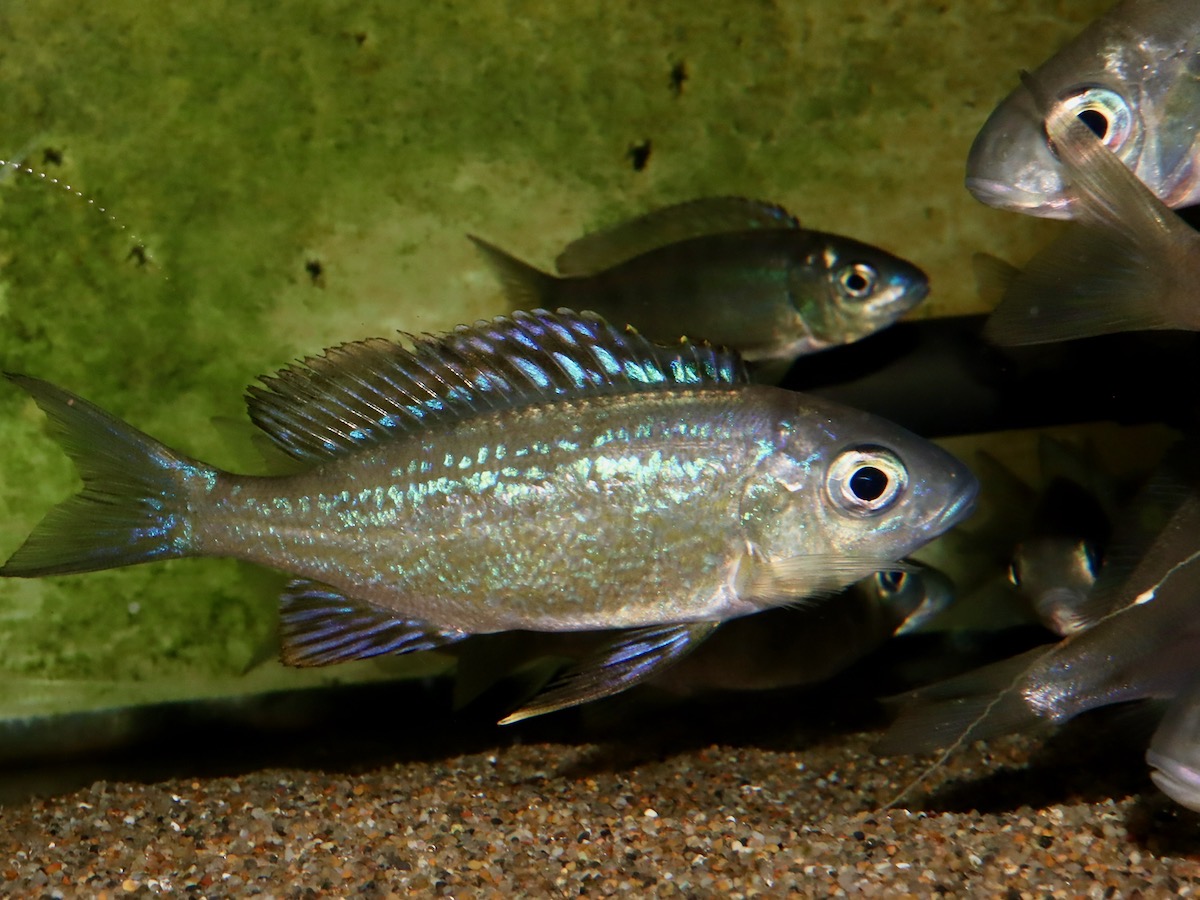

2019年2月。Feb. 2019.
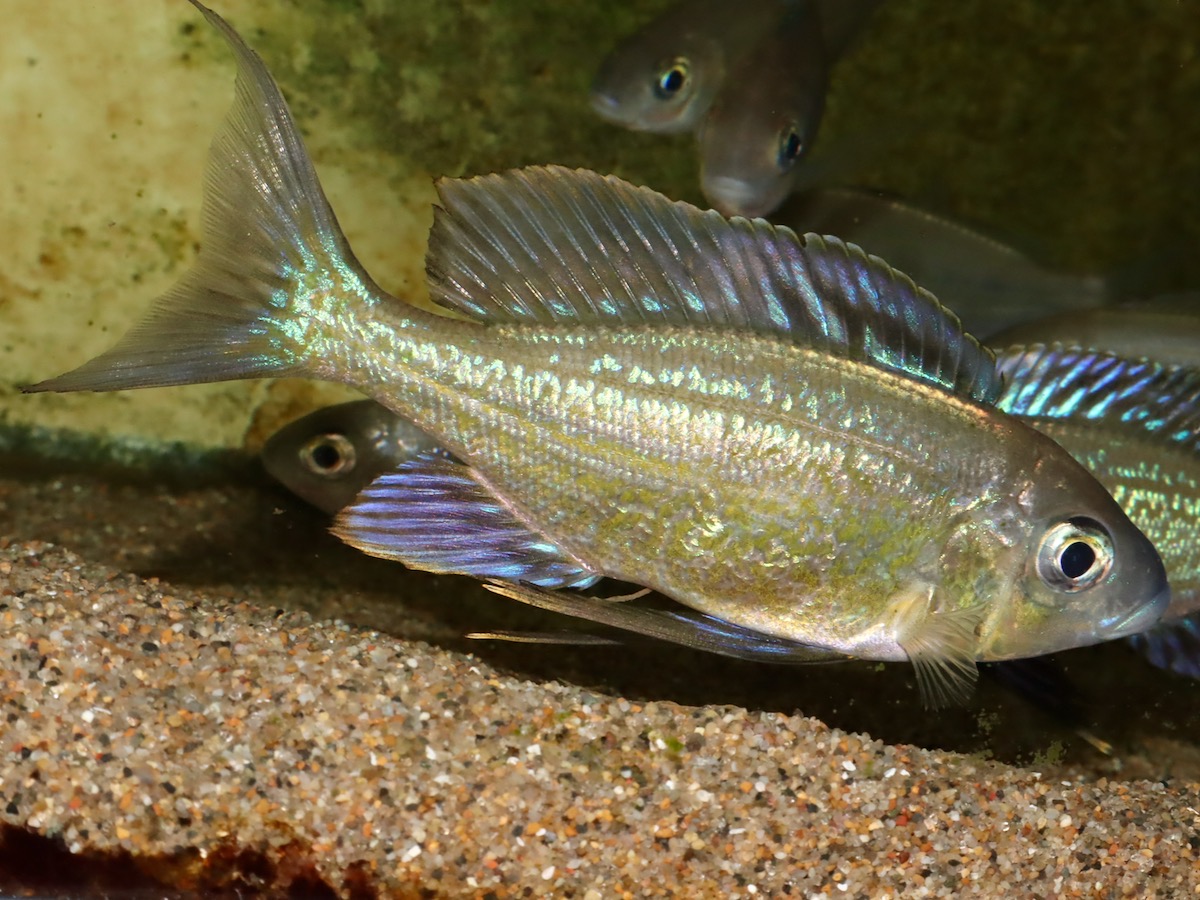
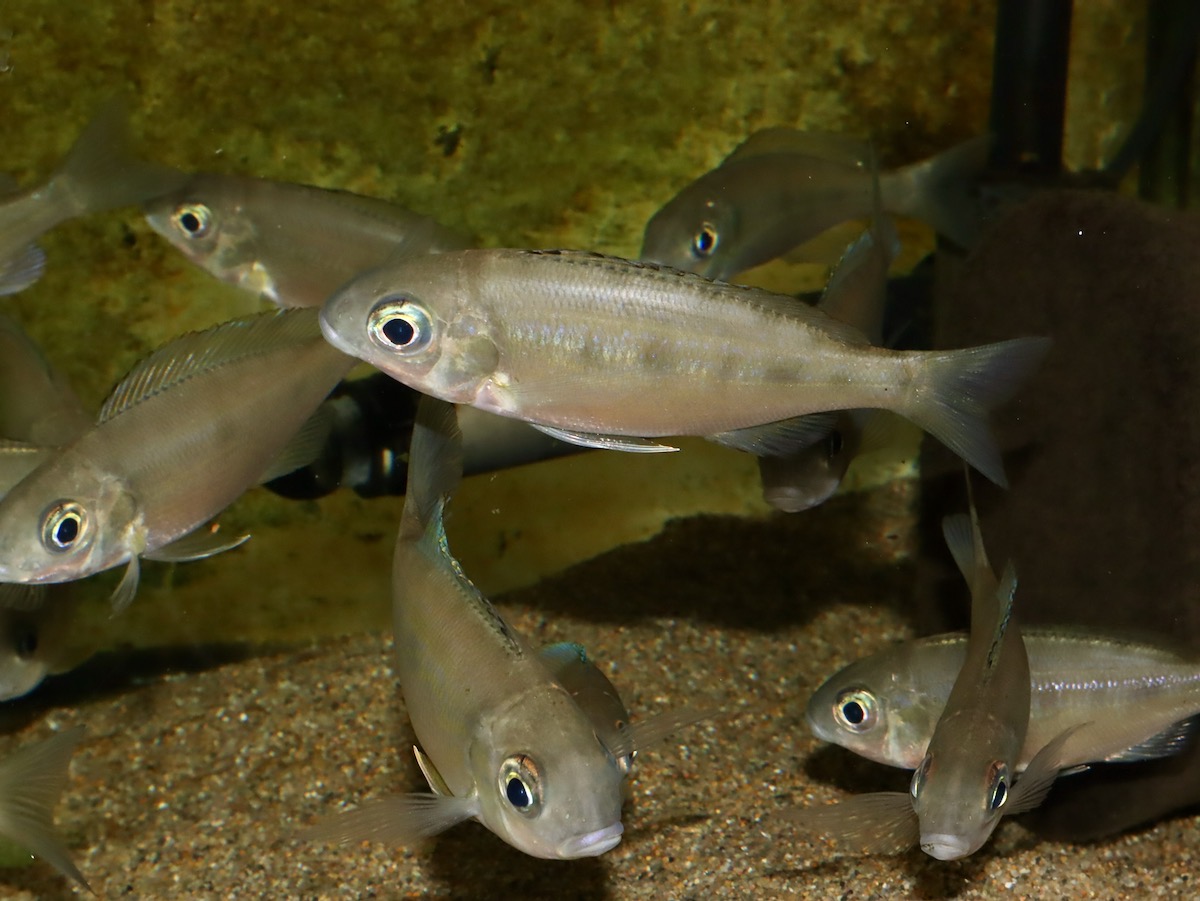
2019年5月。May 2019.

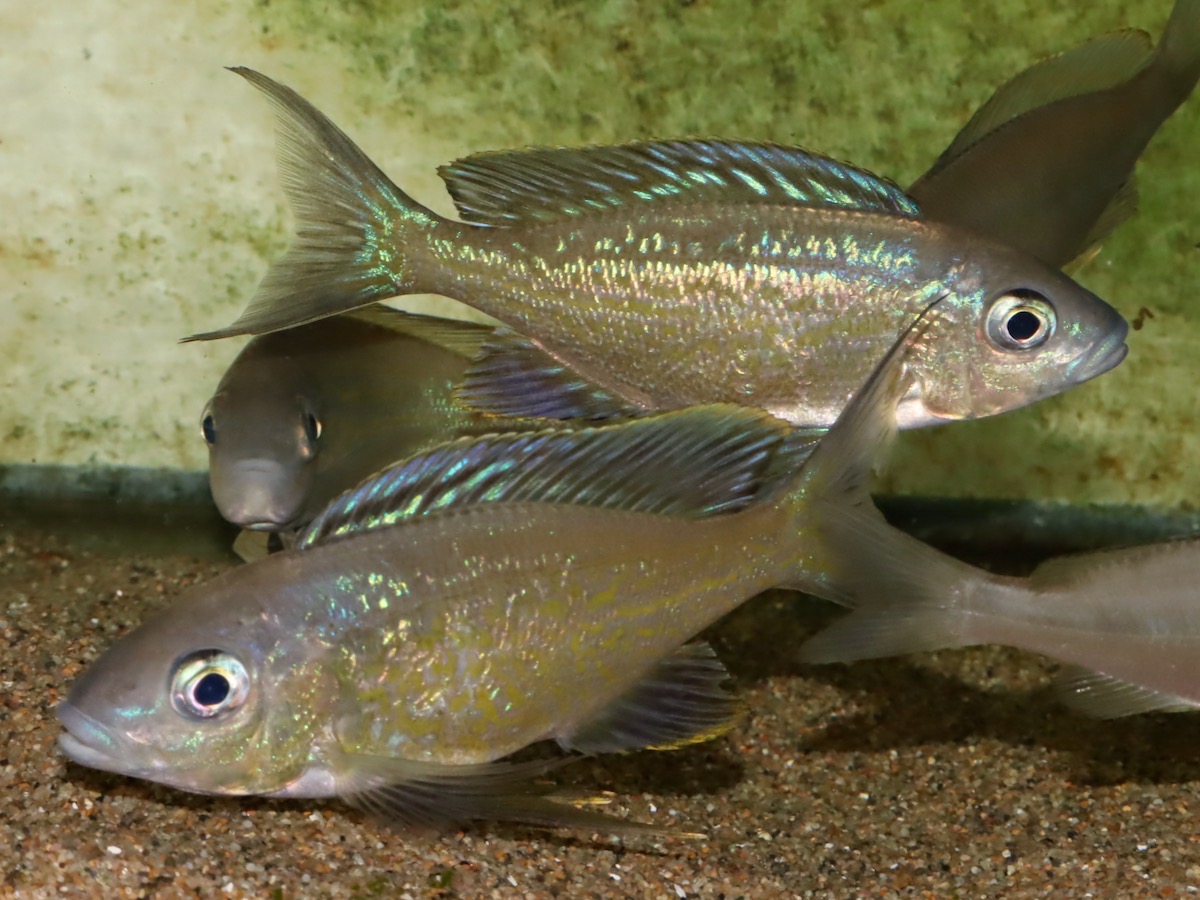
2019年6月。この世代のオスも各ヒレが黄色く縁取られています。
Jun. 2019. Males of this generation also have yellow-edged fins.

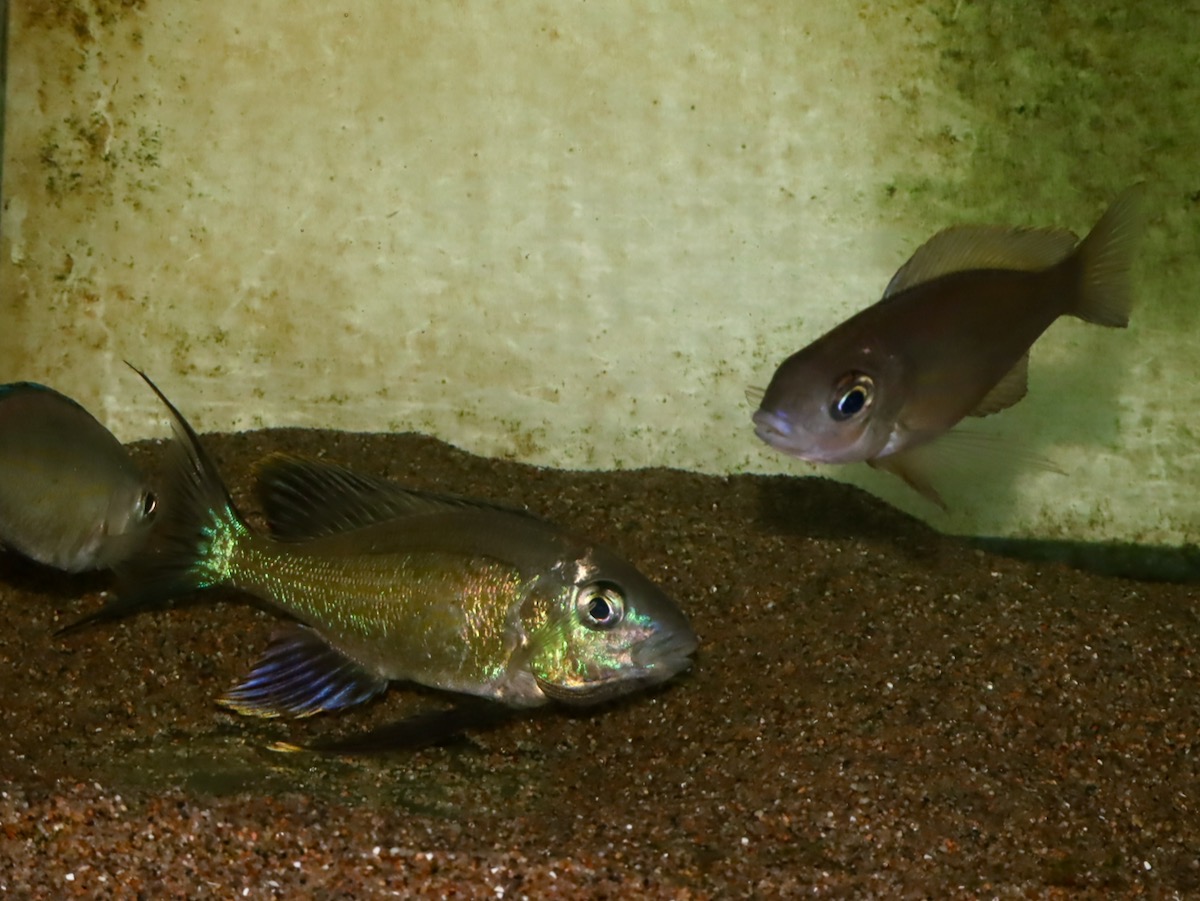
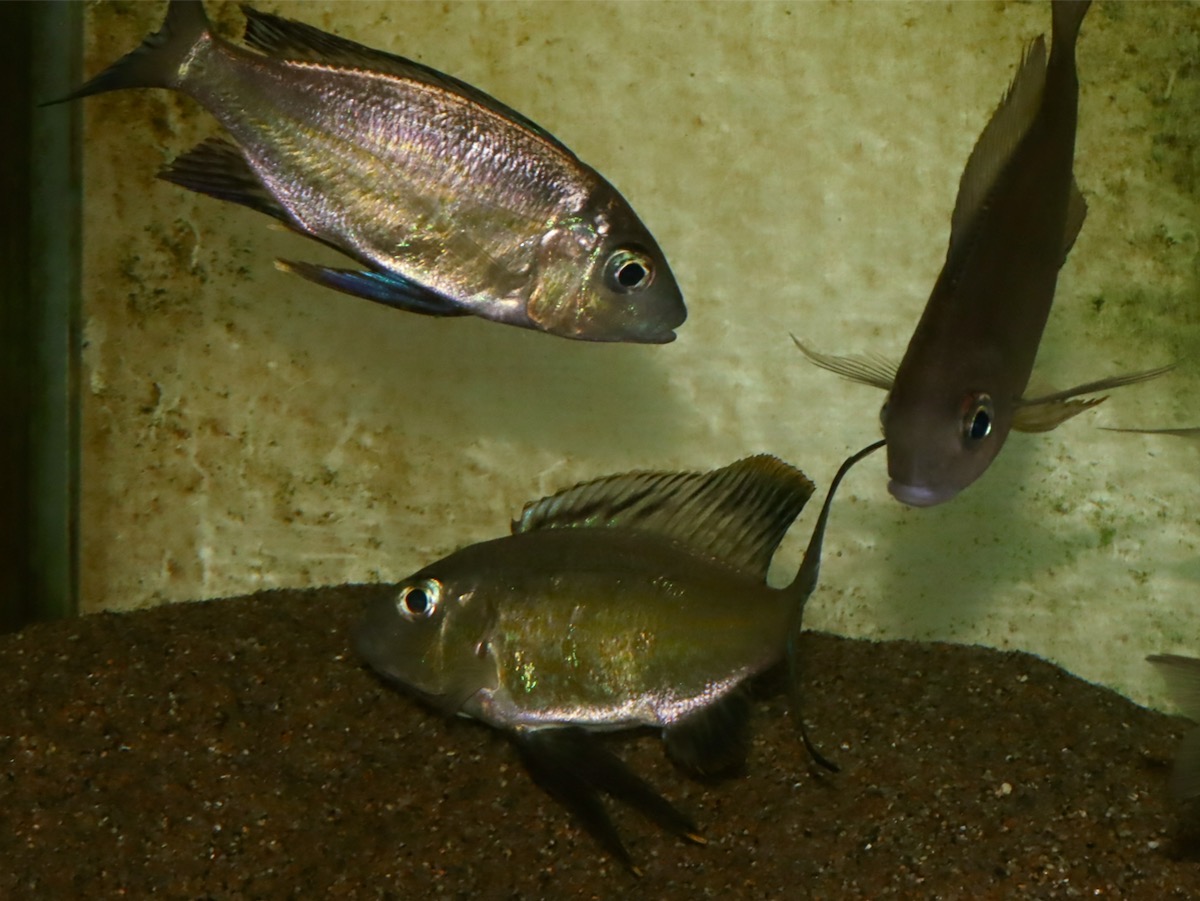
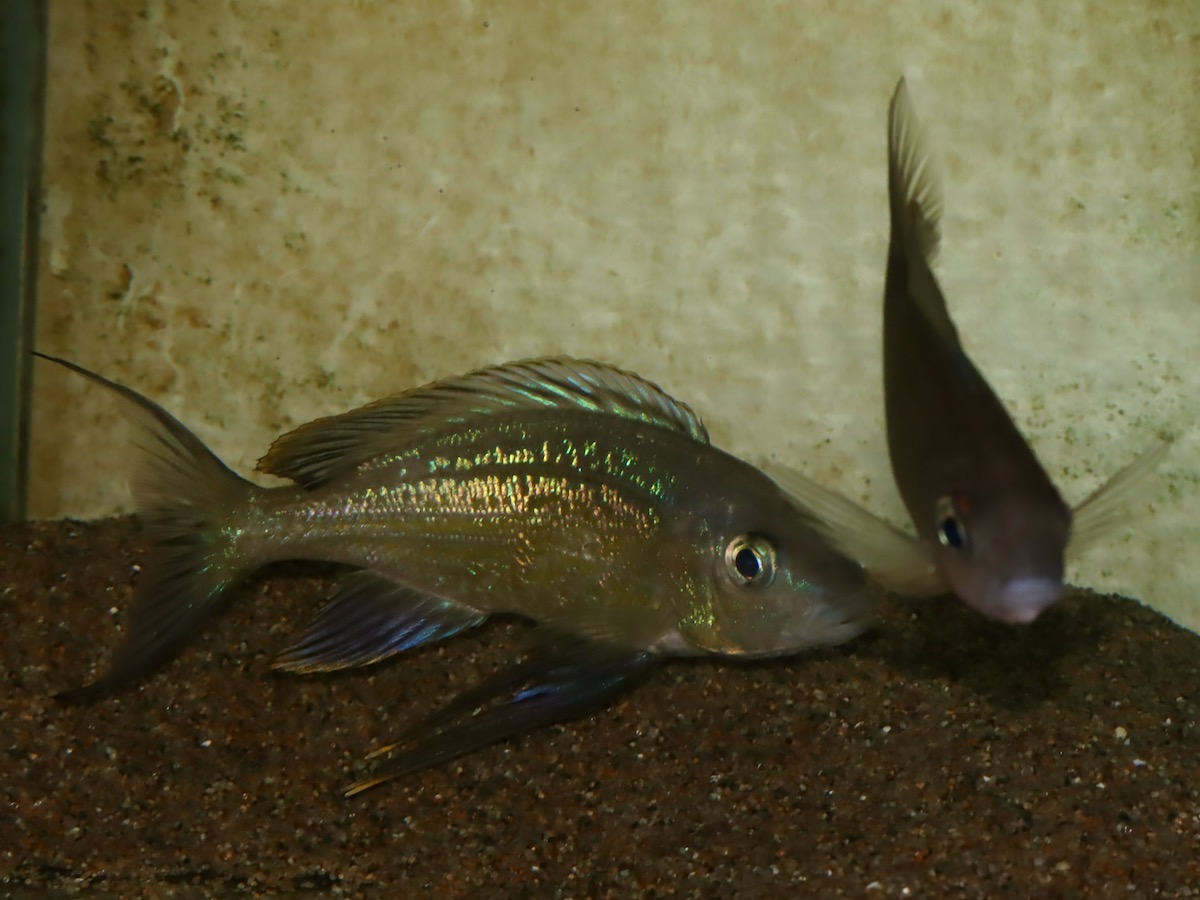
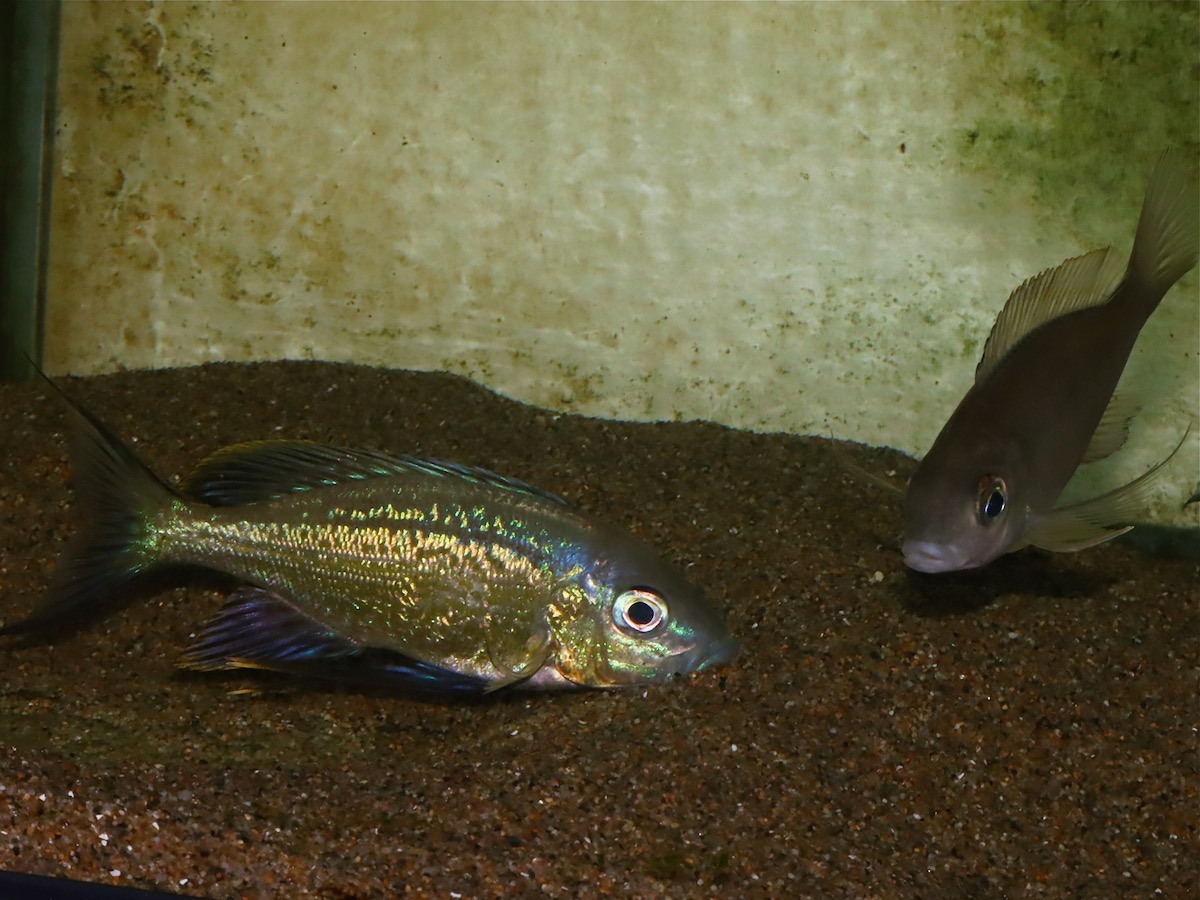
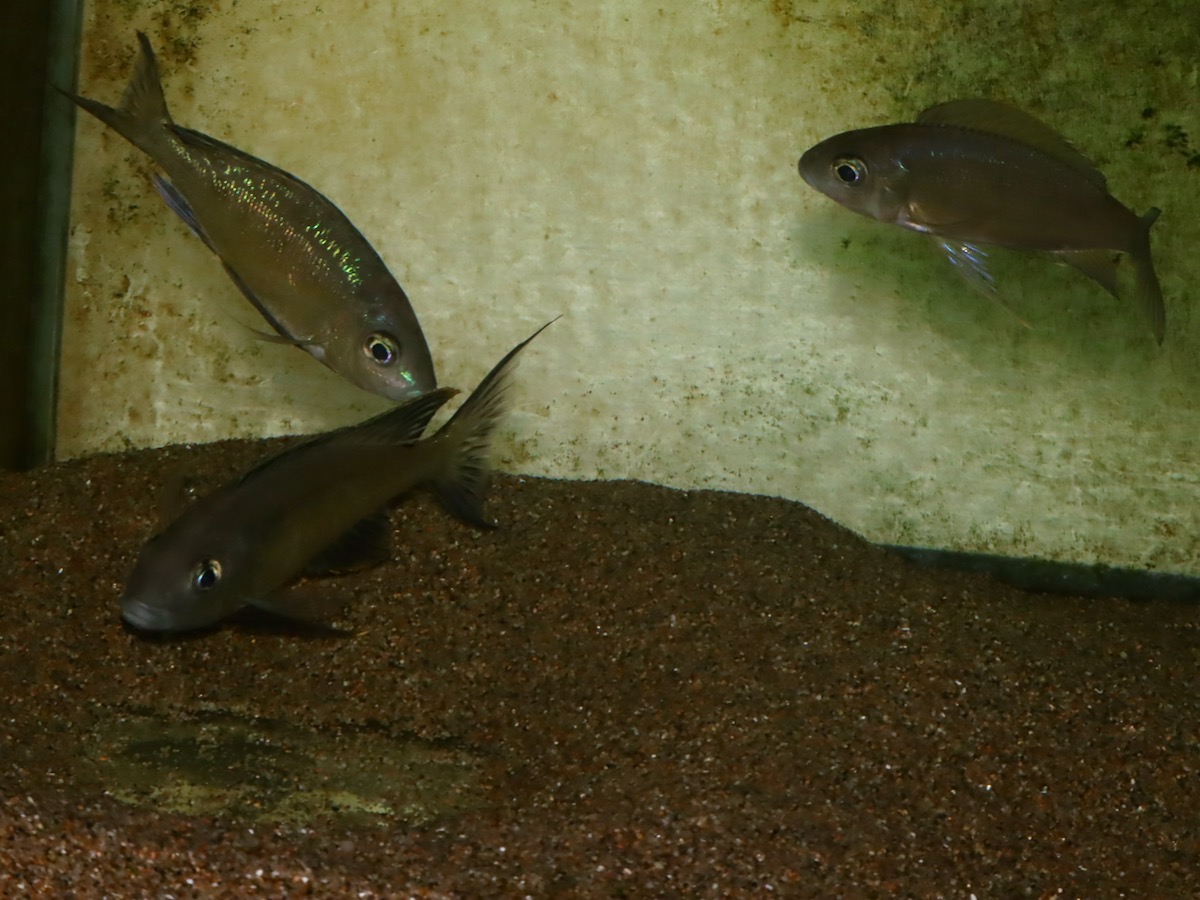
2019年6月、クレーター上での小競り合いが始まりました。
Jun. 2019. They started scuffling over a crater-like nest.
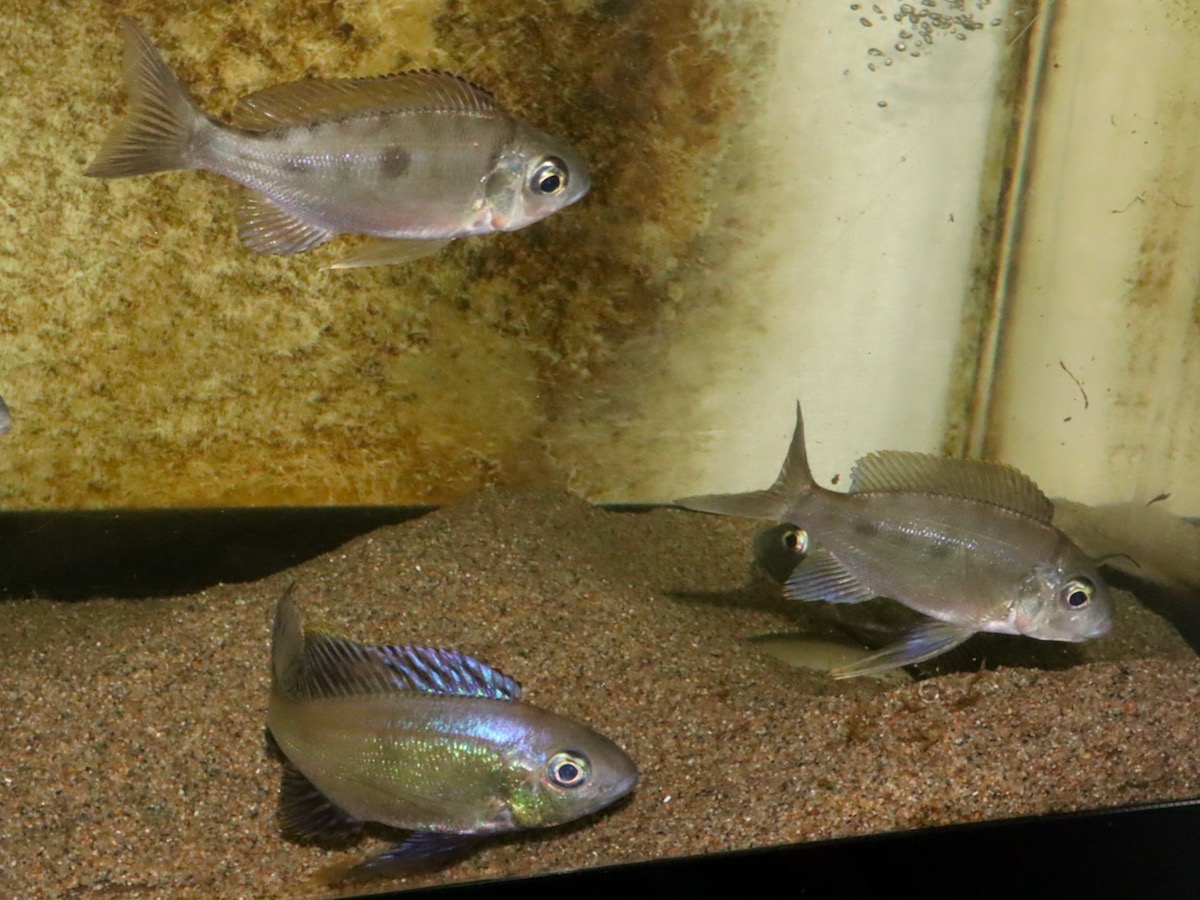
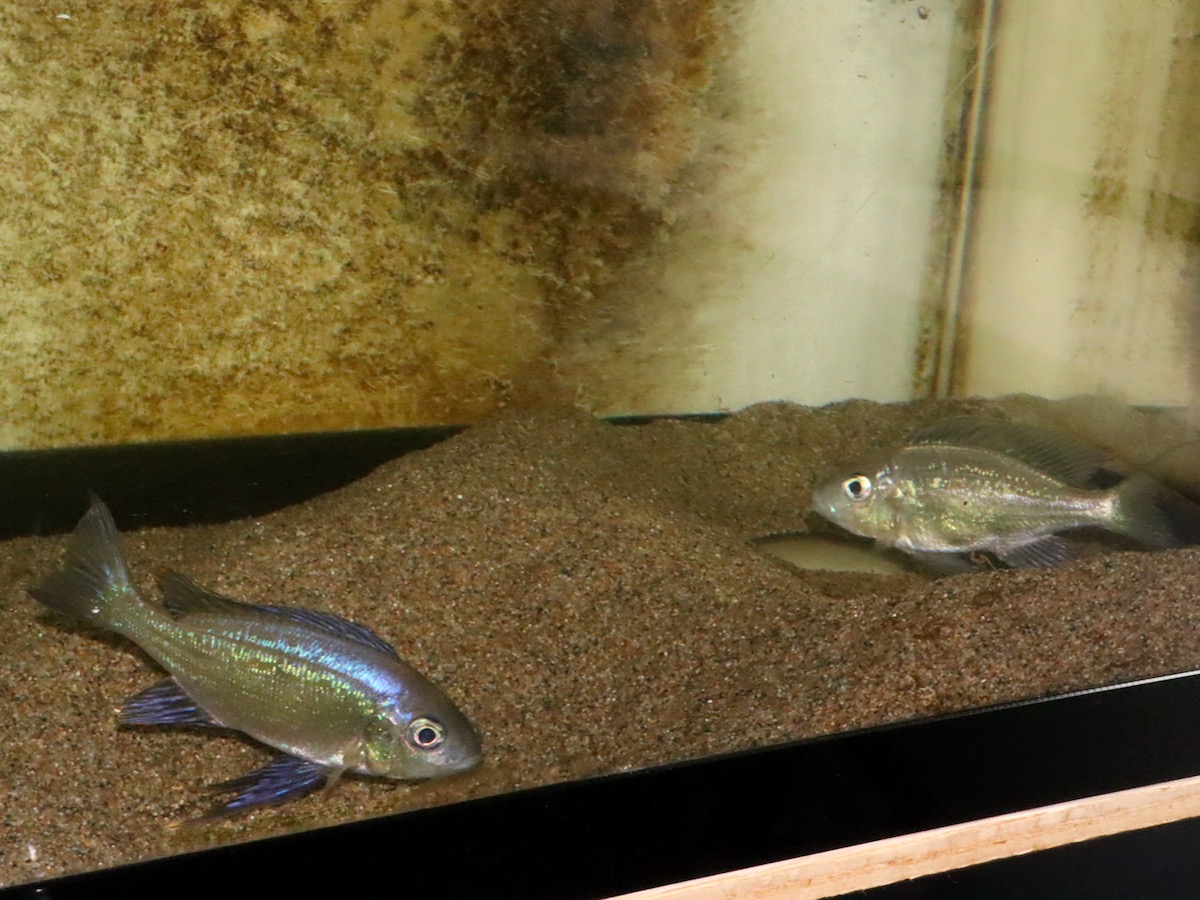
2019年8月、前後2つのクレーター。
Aug. 2019. Two crater-like nests in one side of a tank.
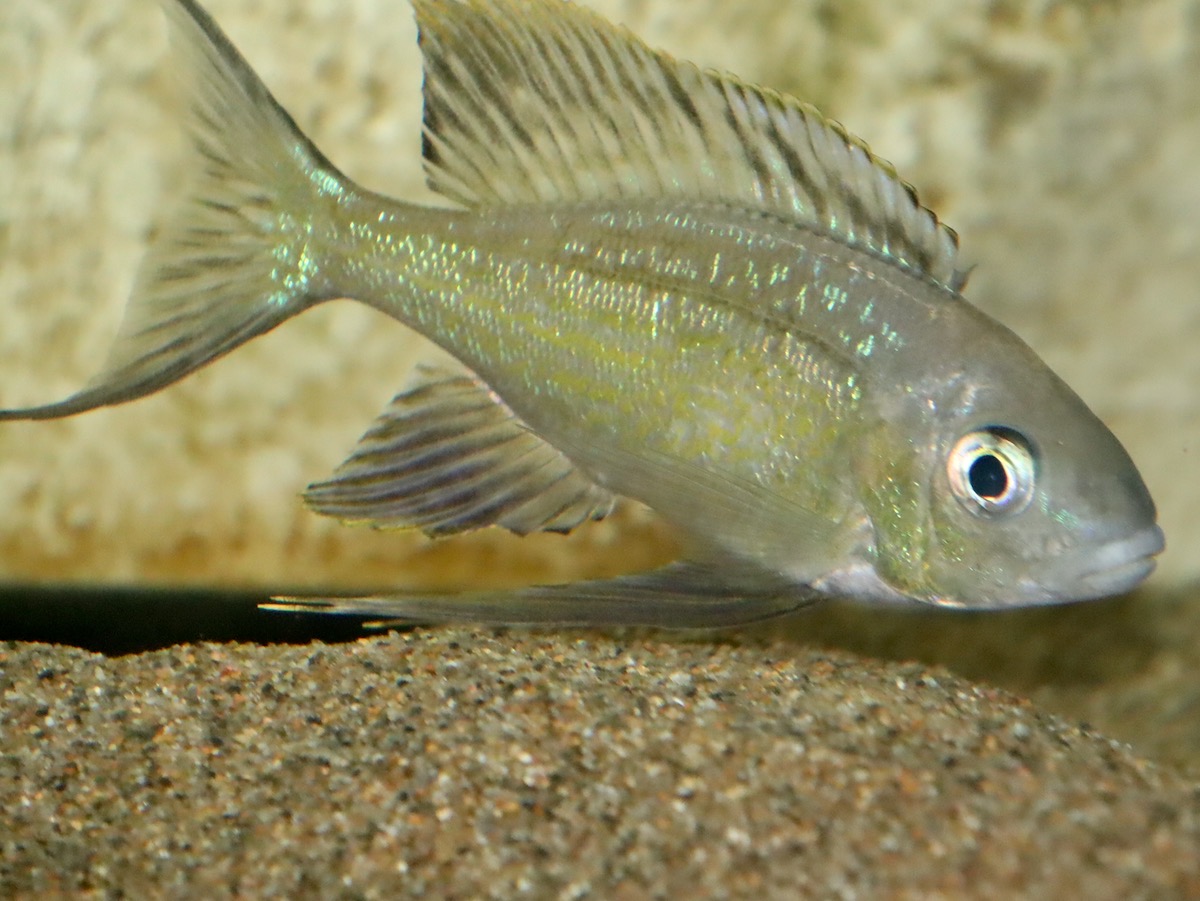
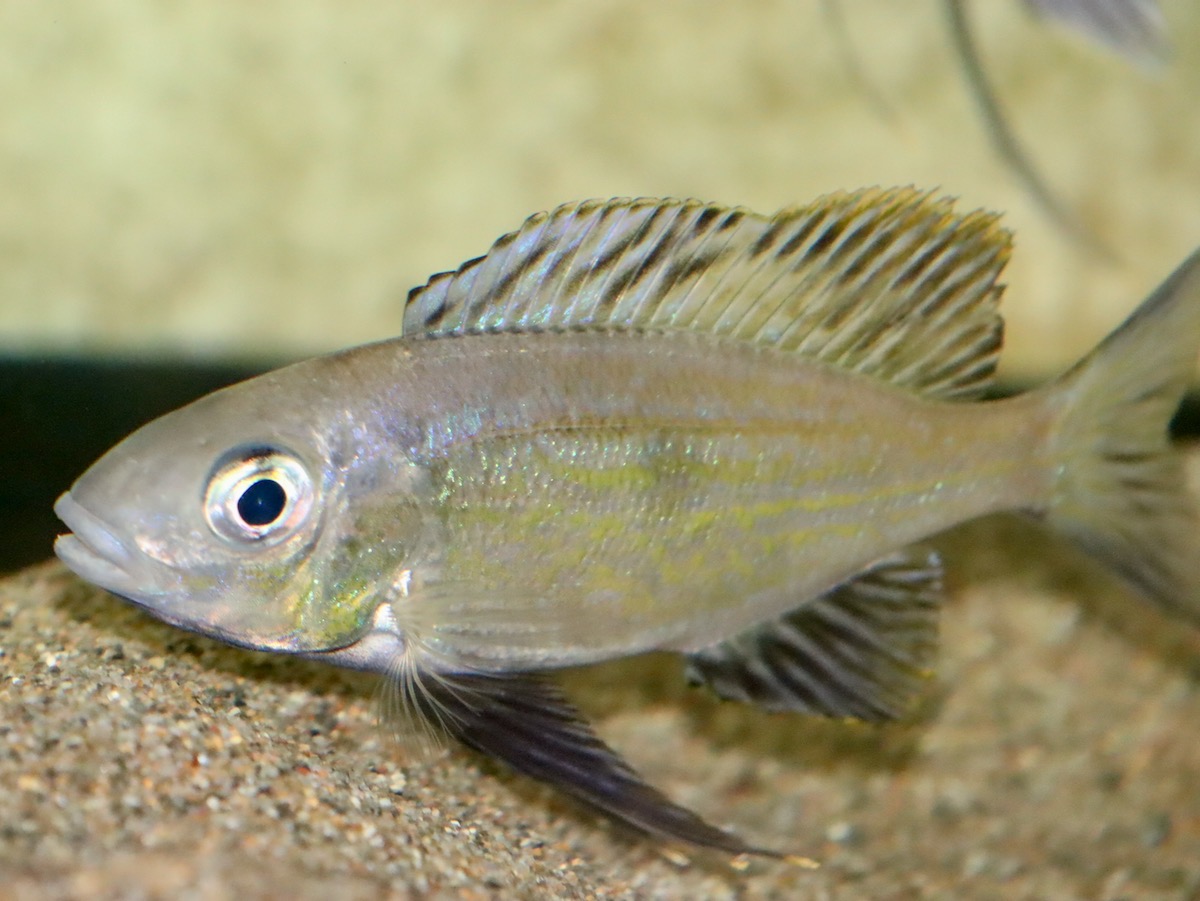
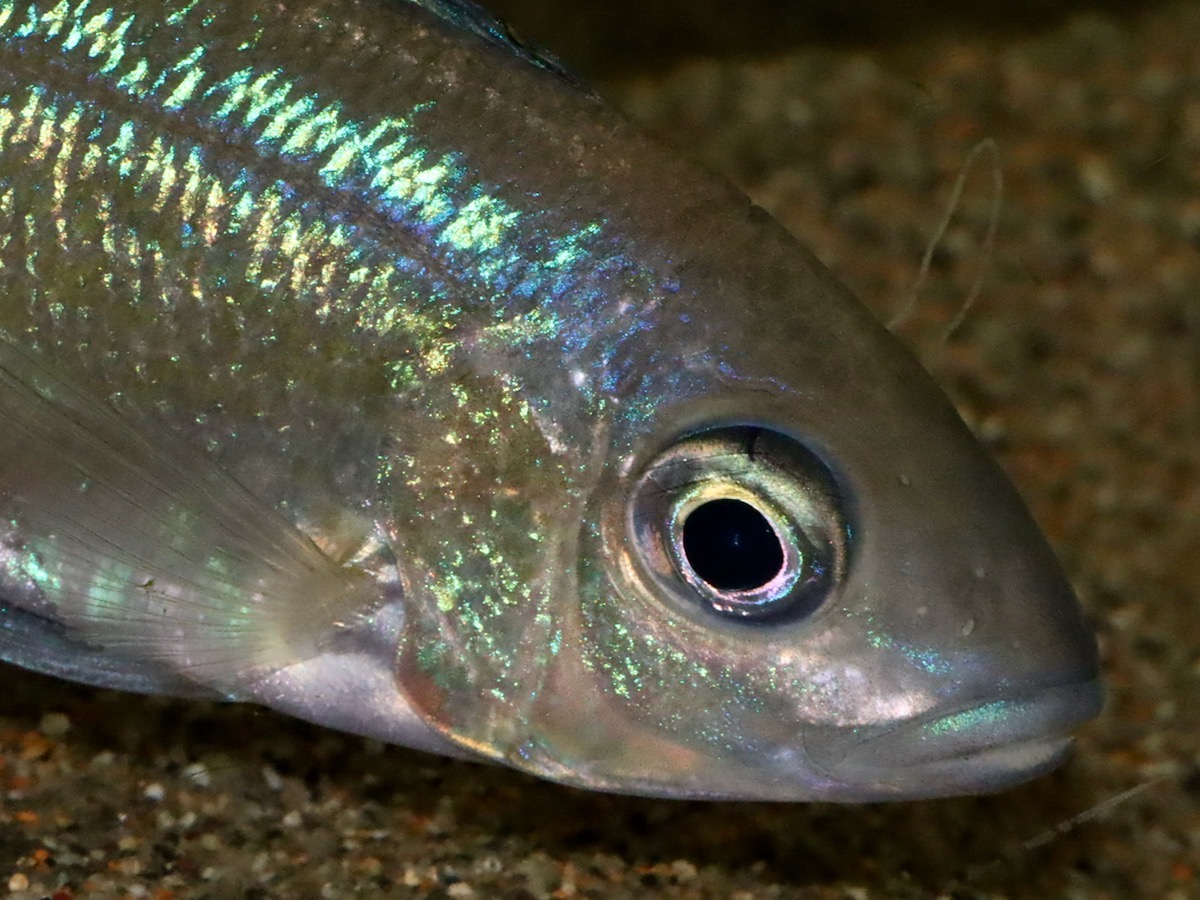
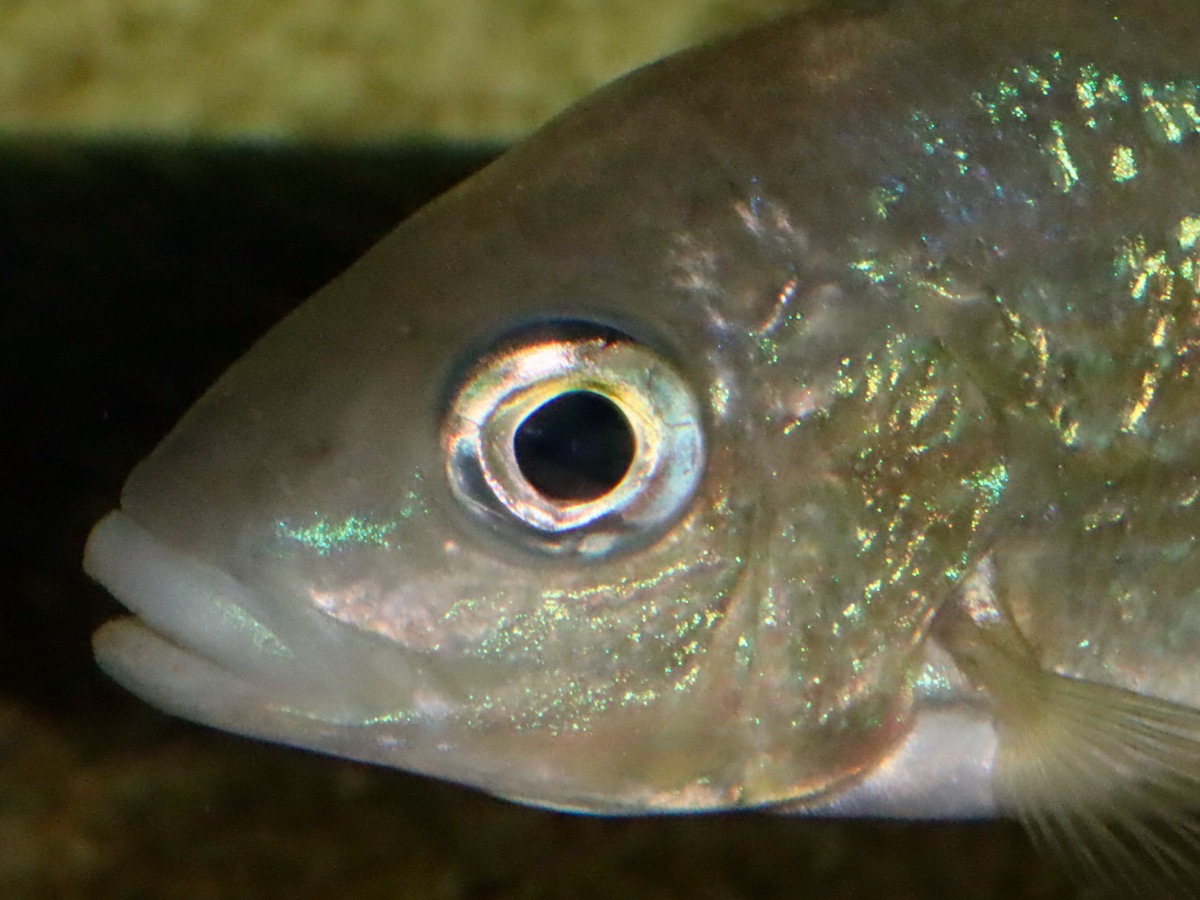
2019年8月。 Aug. 2019.
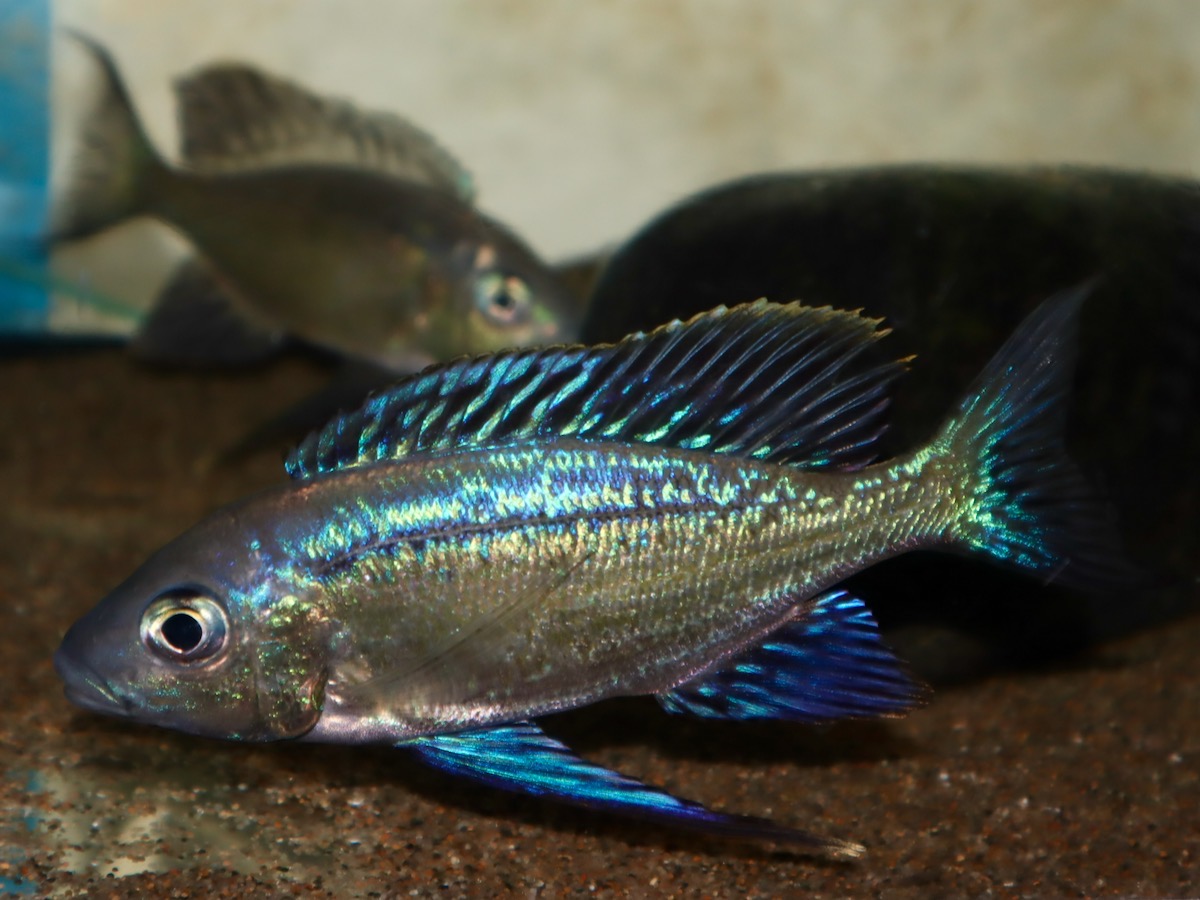
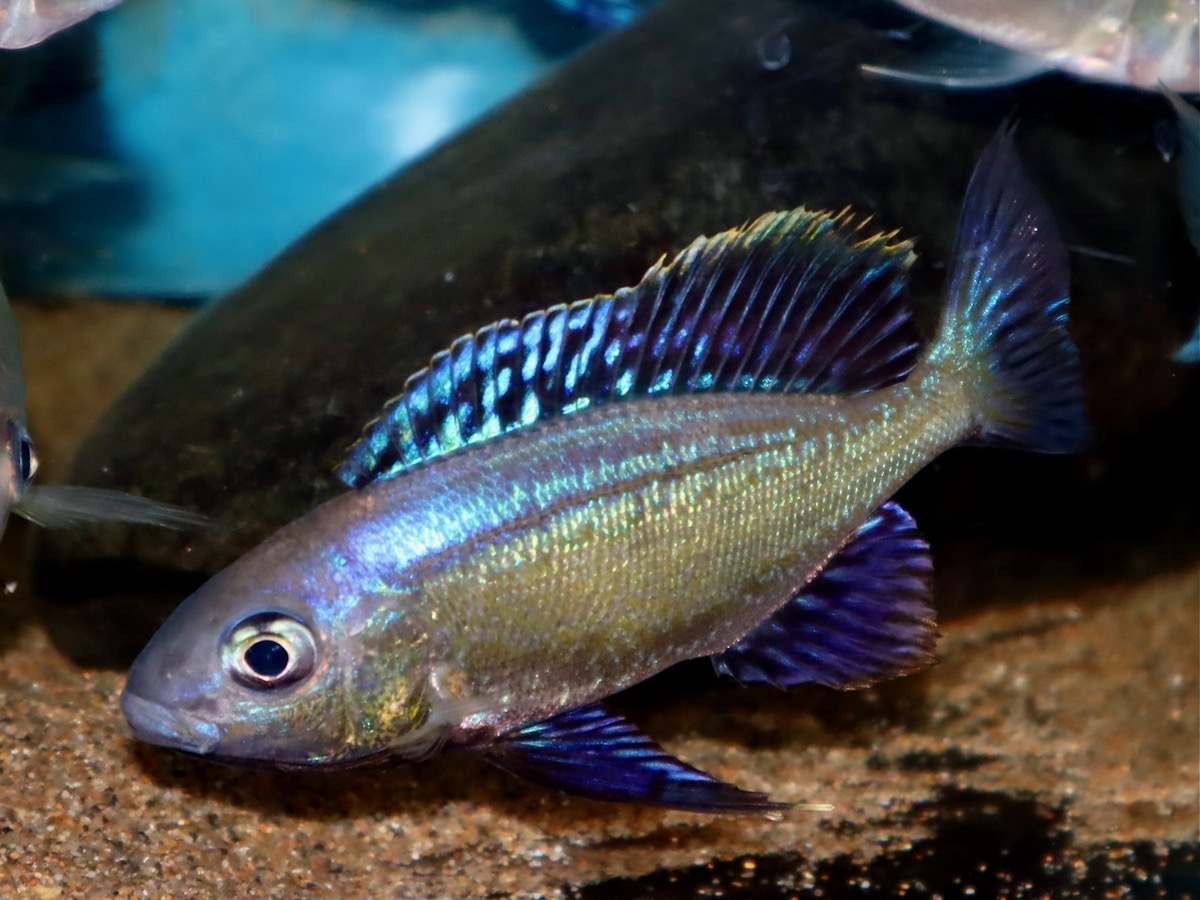
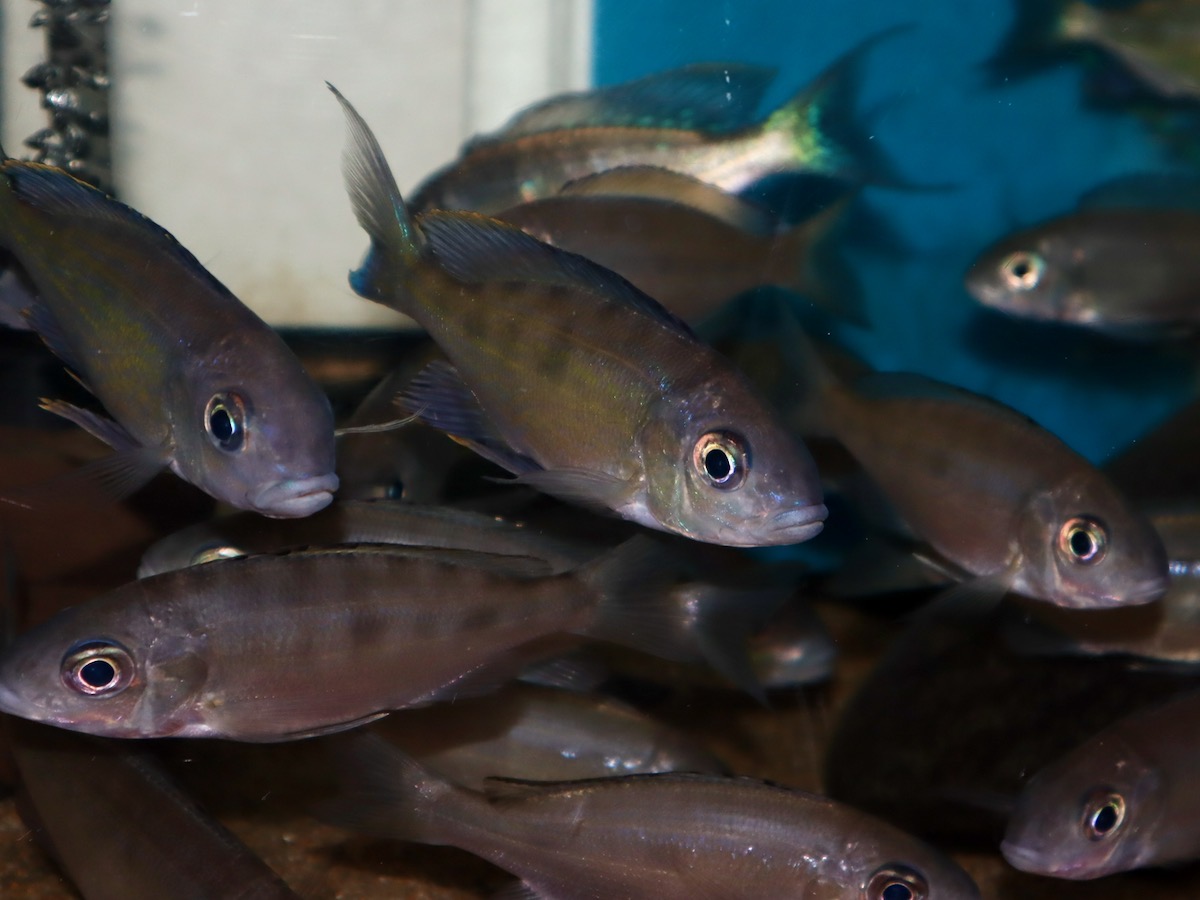
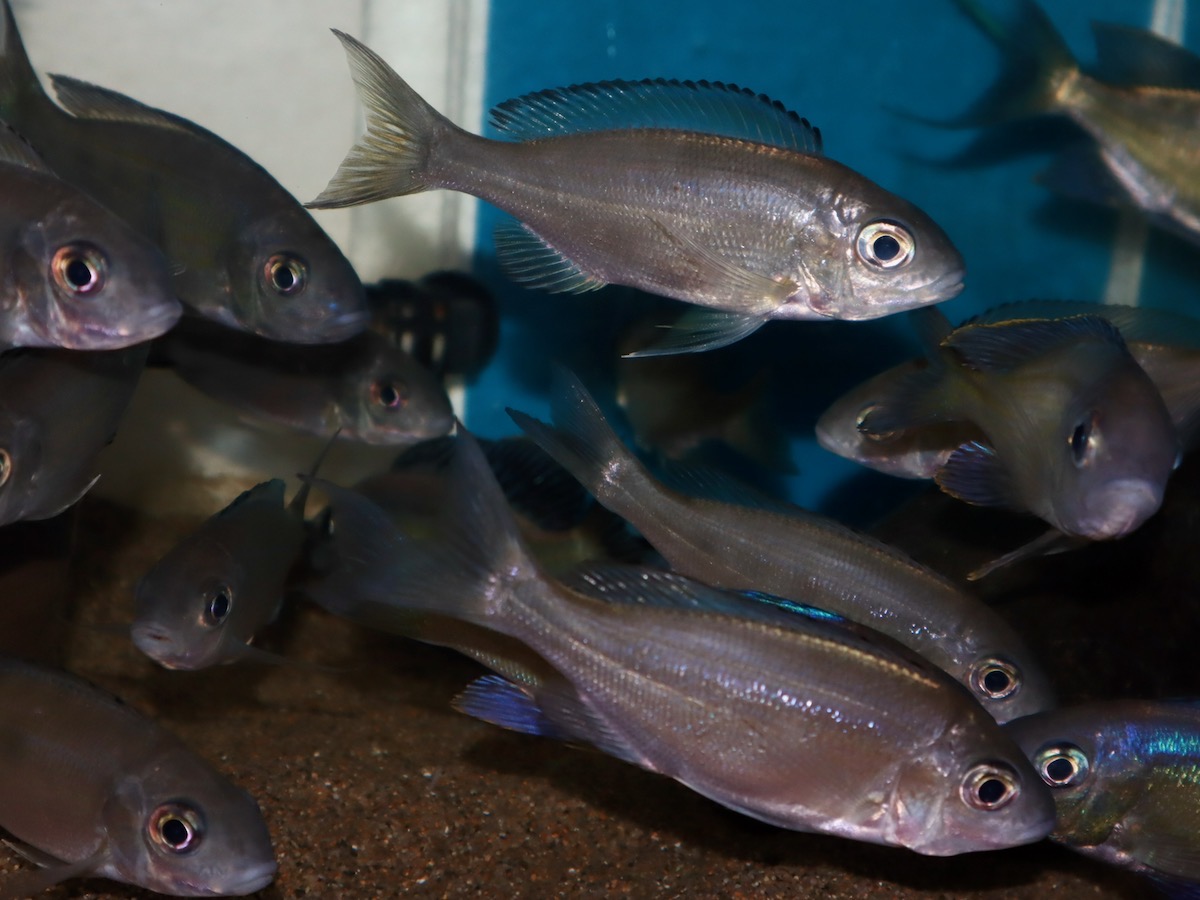
2019年12月。 Dec. 2019.
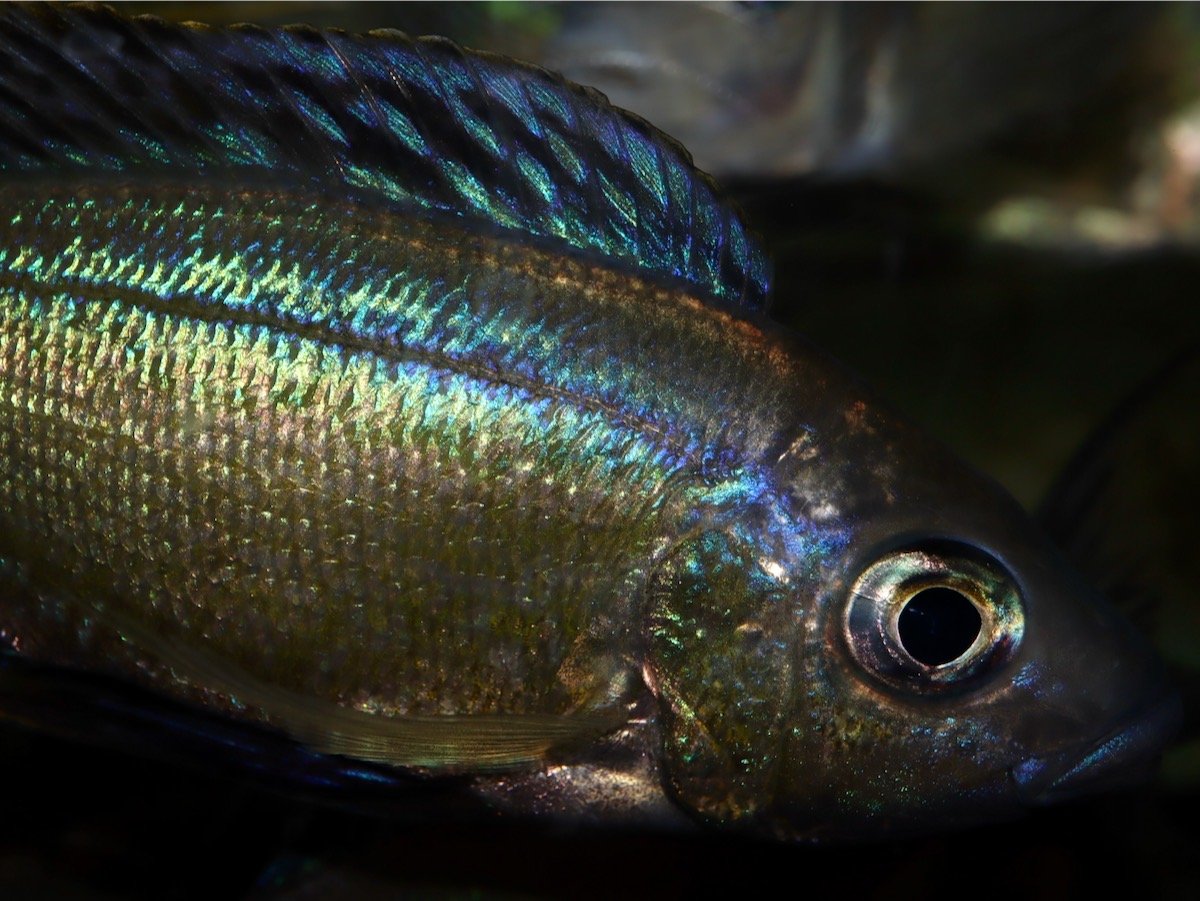
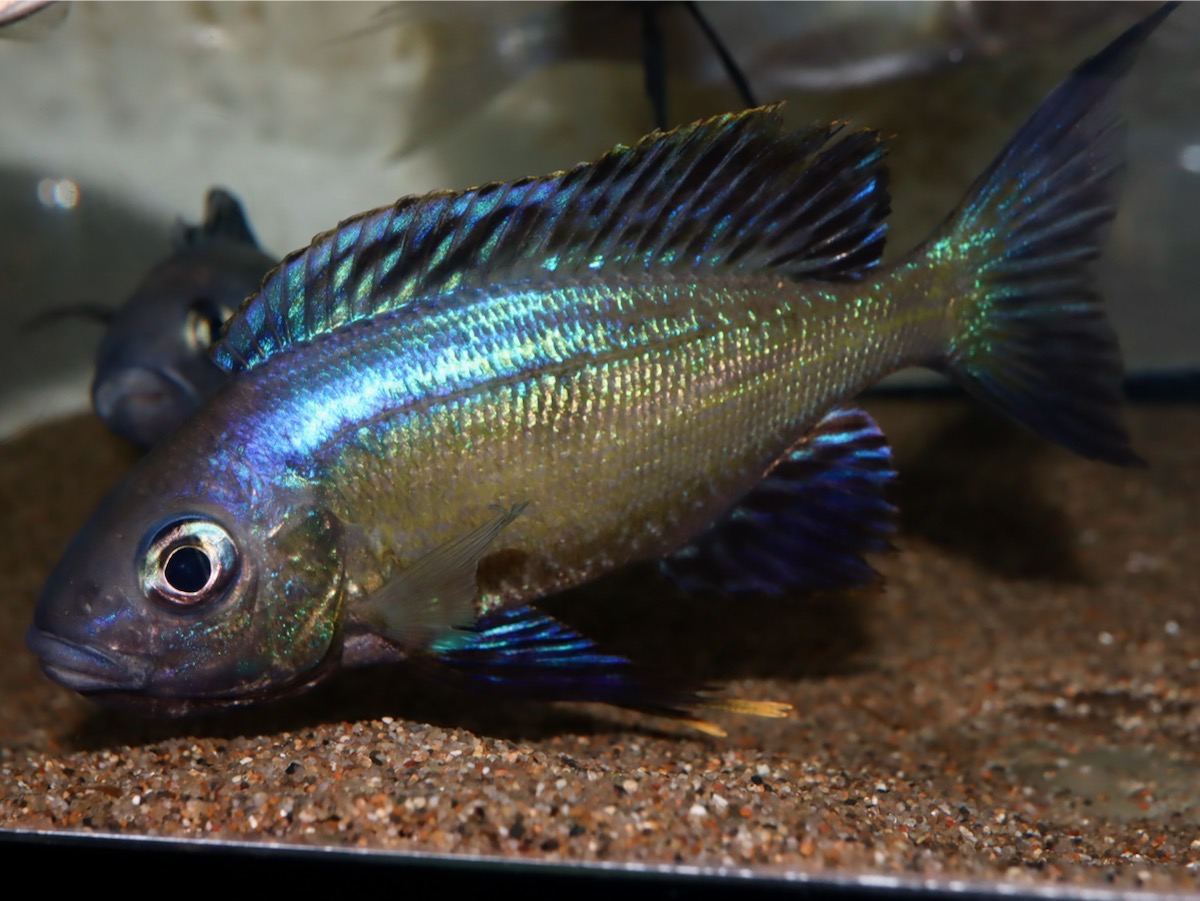
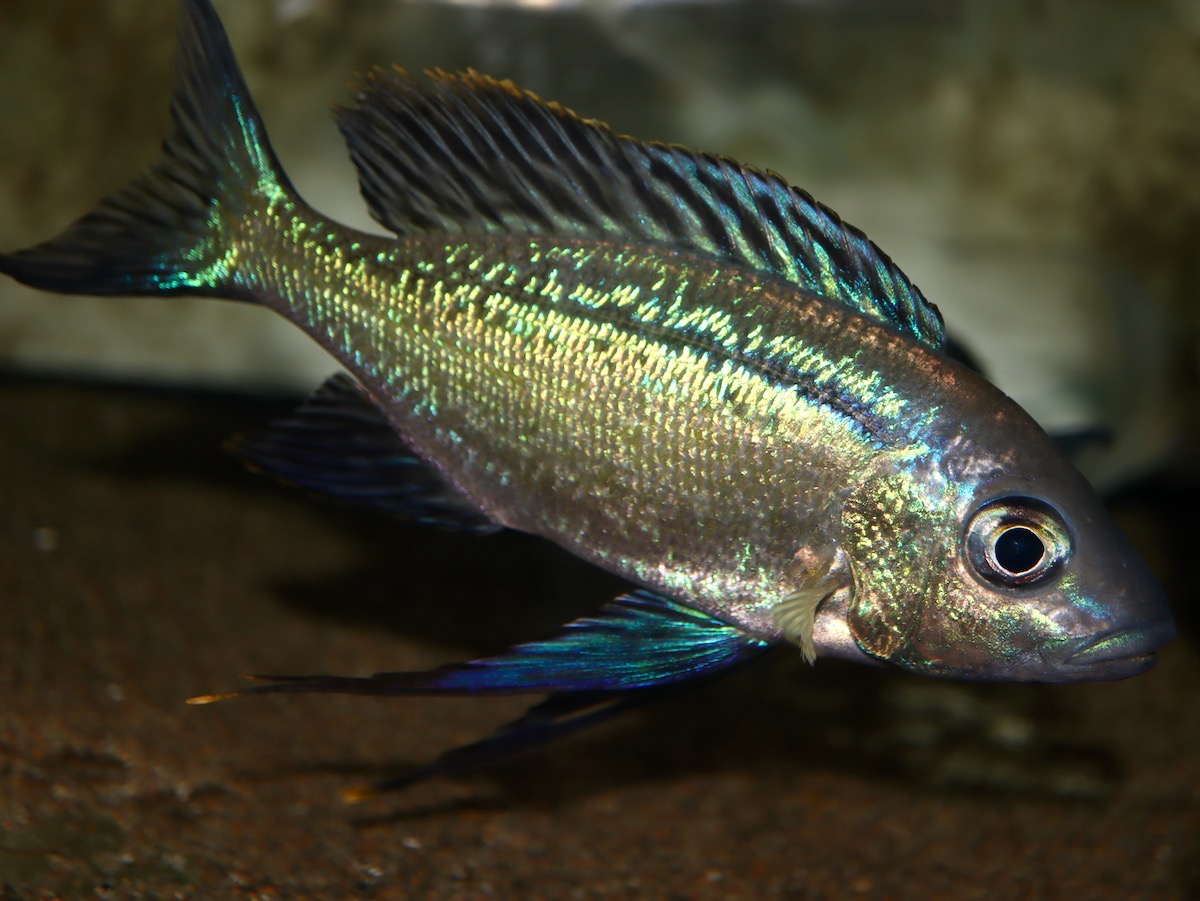
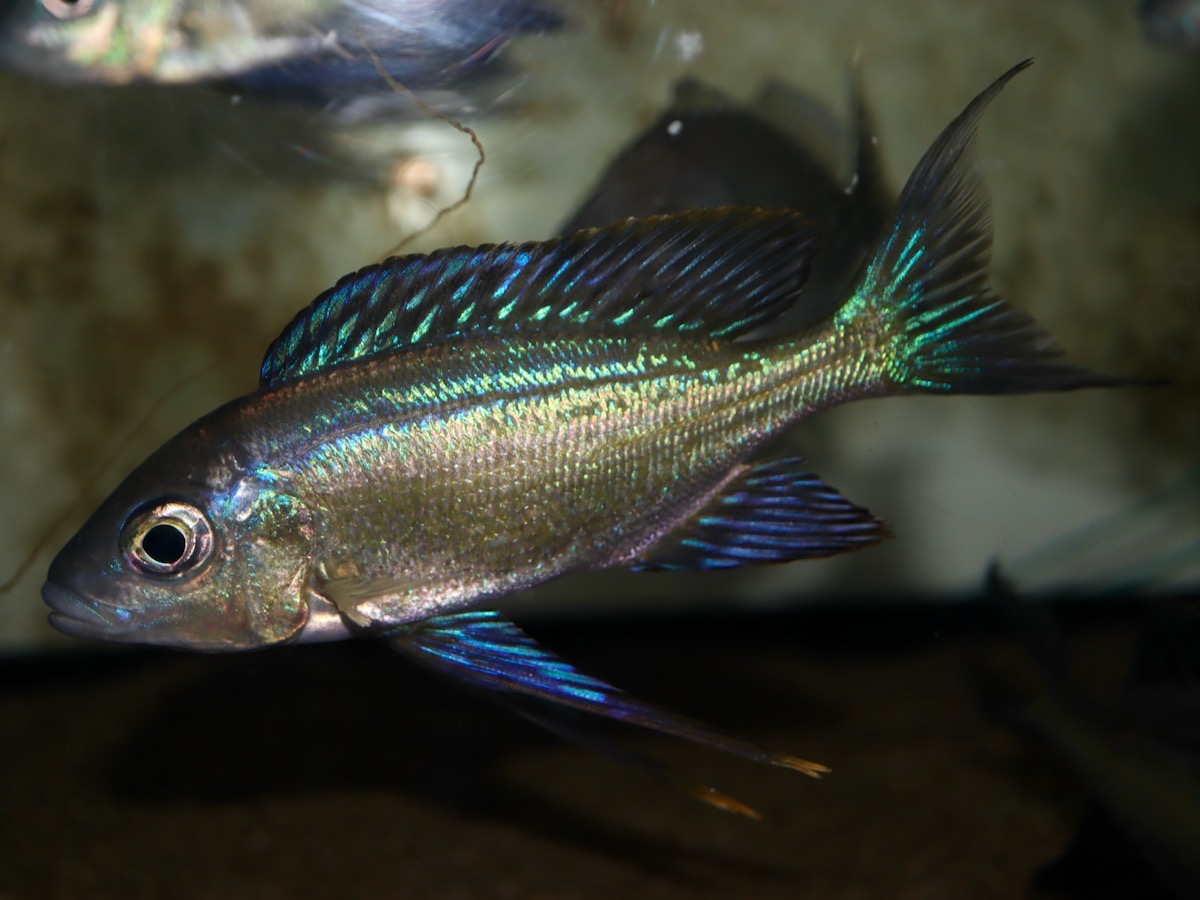
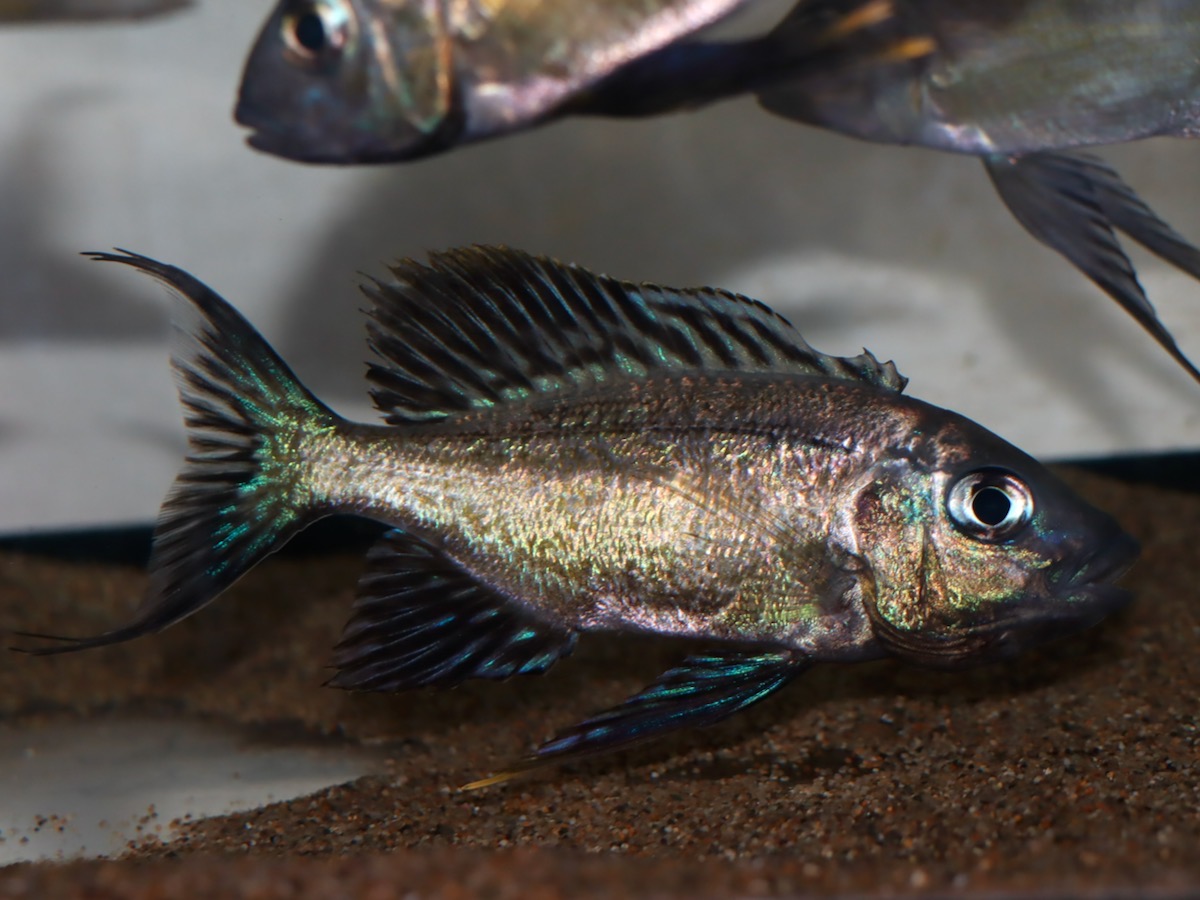
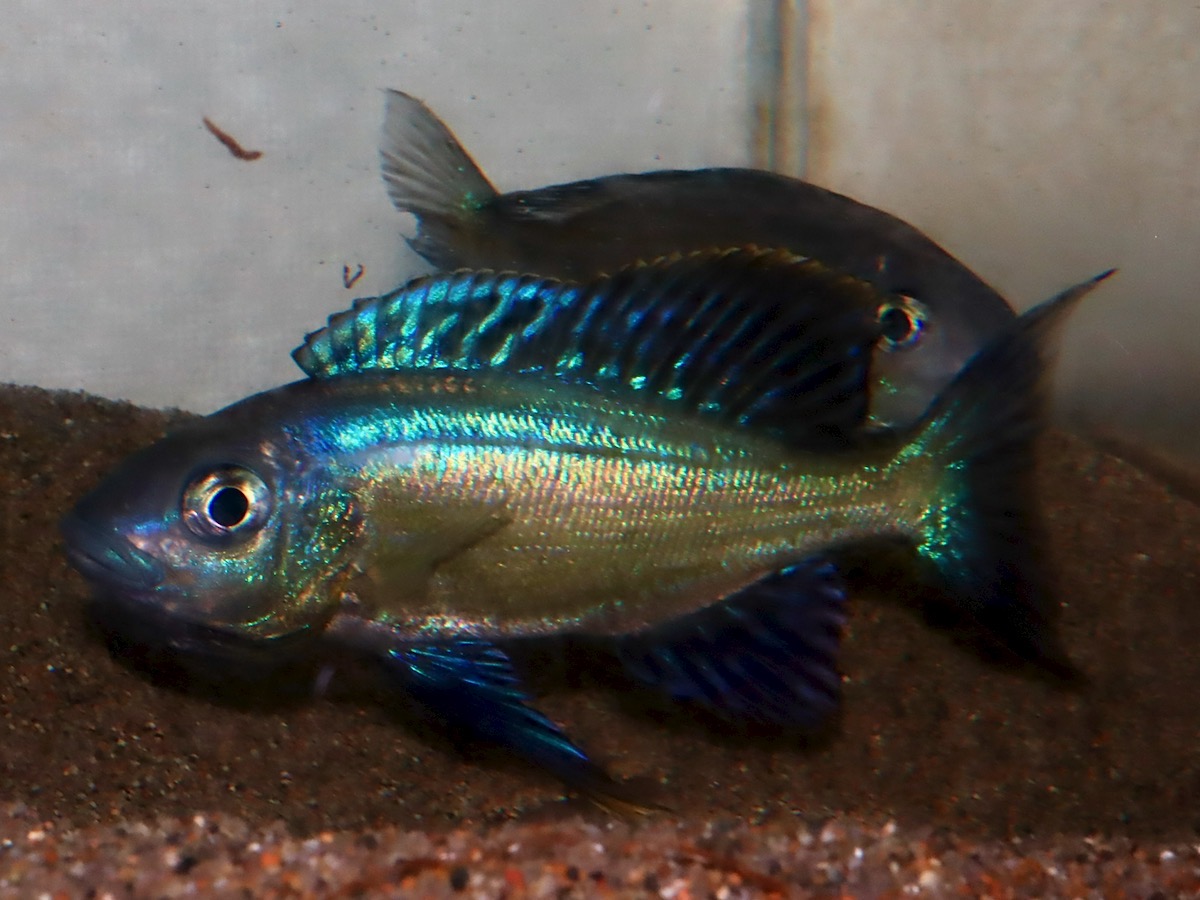
2020年1月。 Jan. 2020.
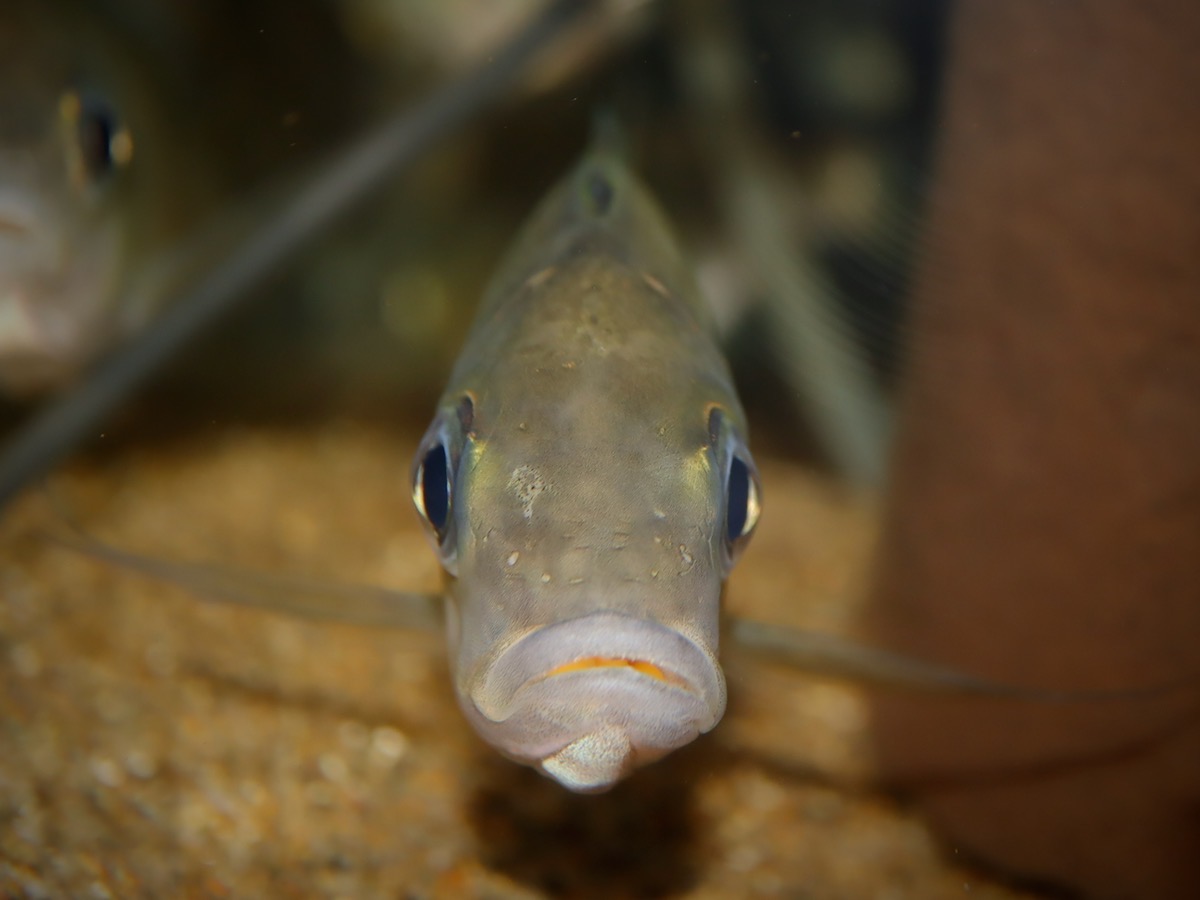
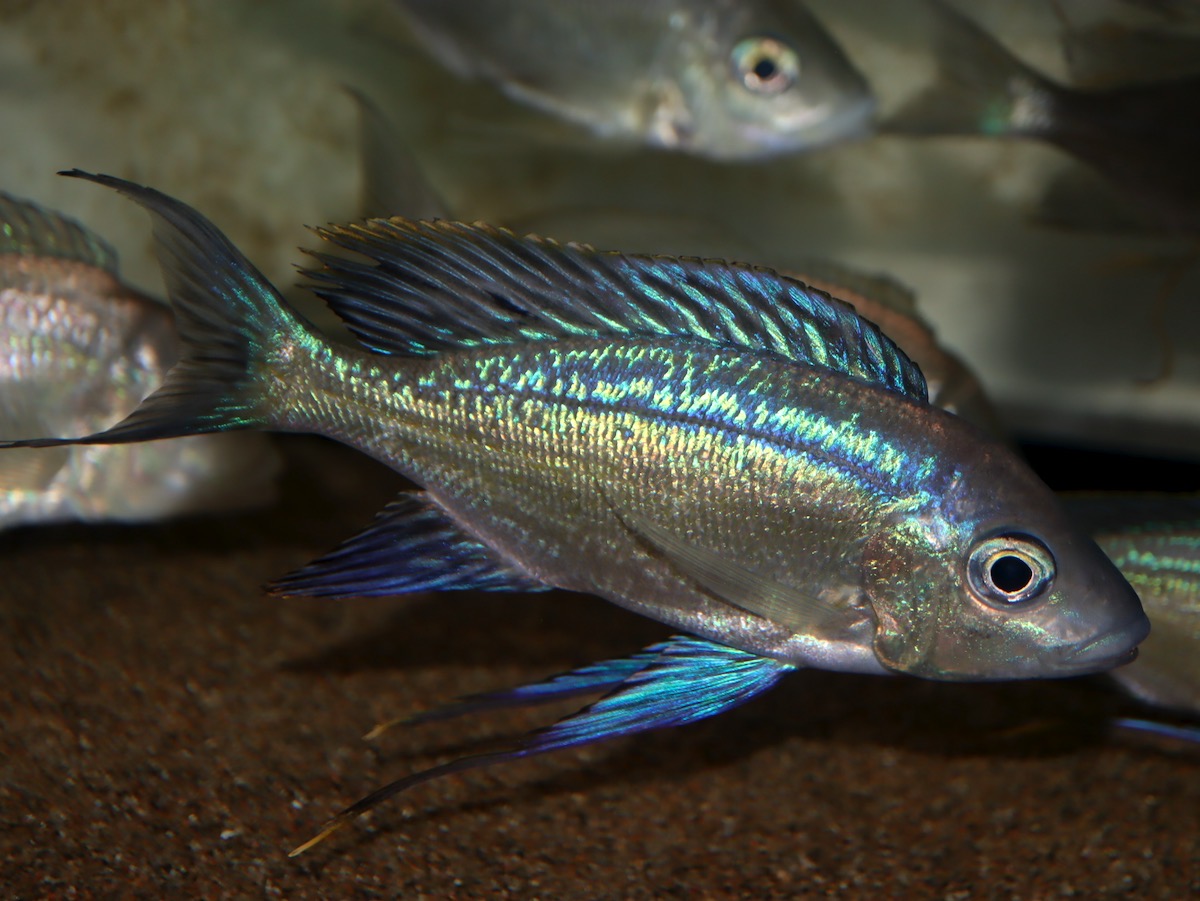
2020年4月。 左のメスは卵を咥えていますが、数日でなくなってしまいました。右は発色したオス。
Apr. 2020. The female on the left is keeping eggs in the mouth, but the eggs were eaten in several days. Left is a male.
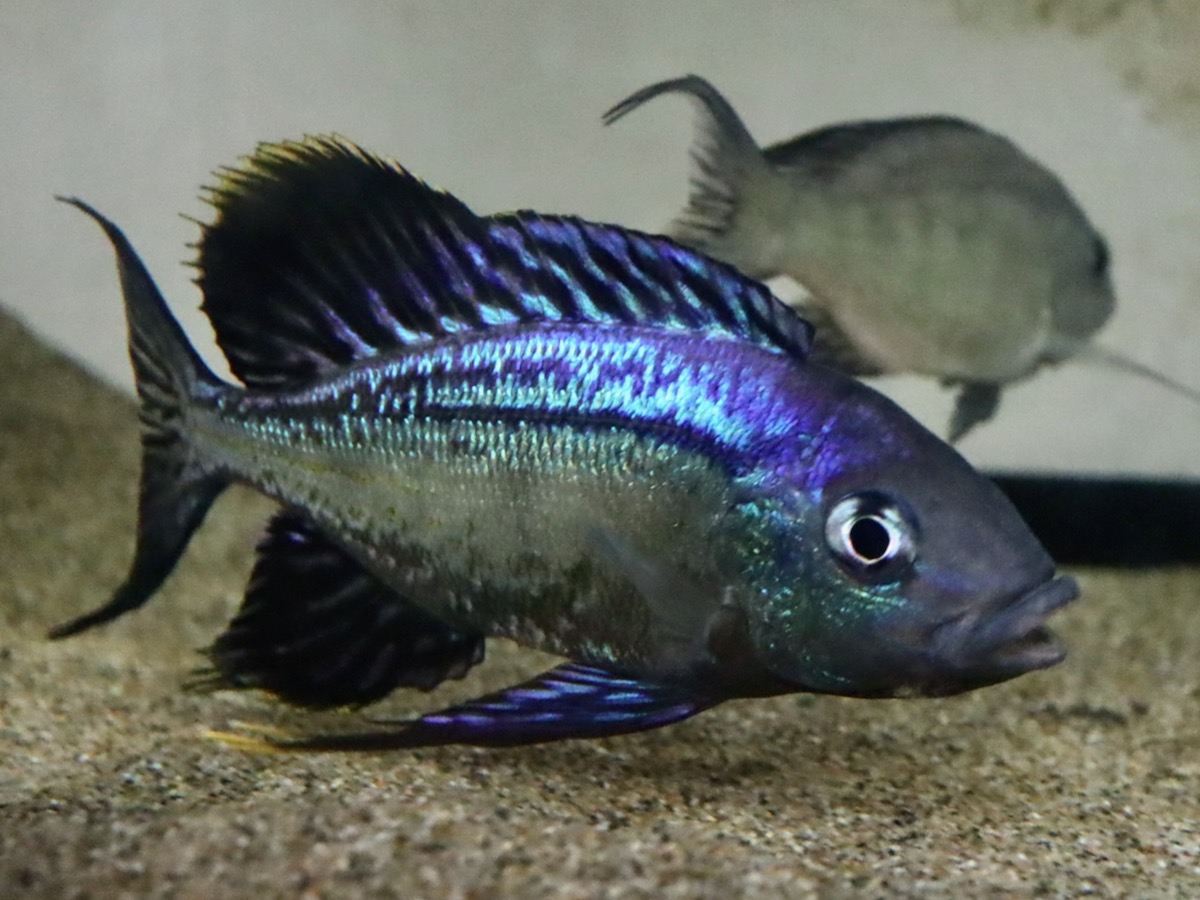
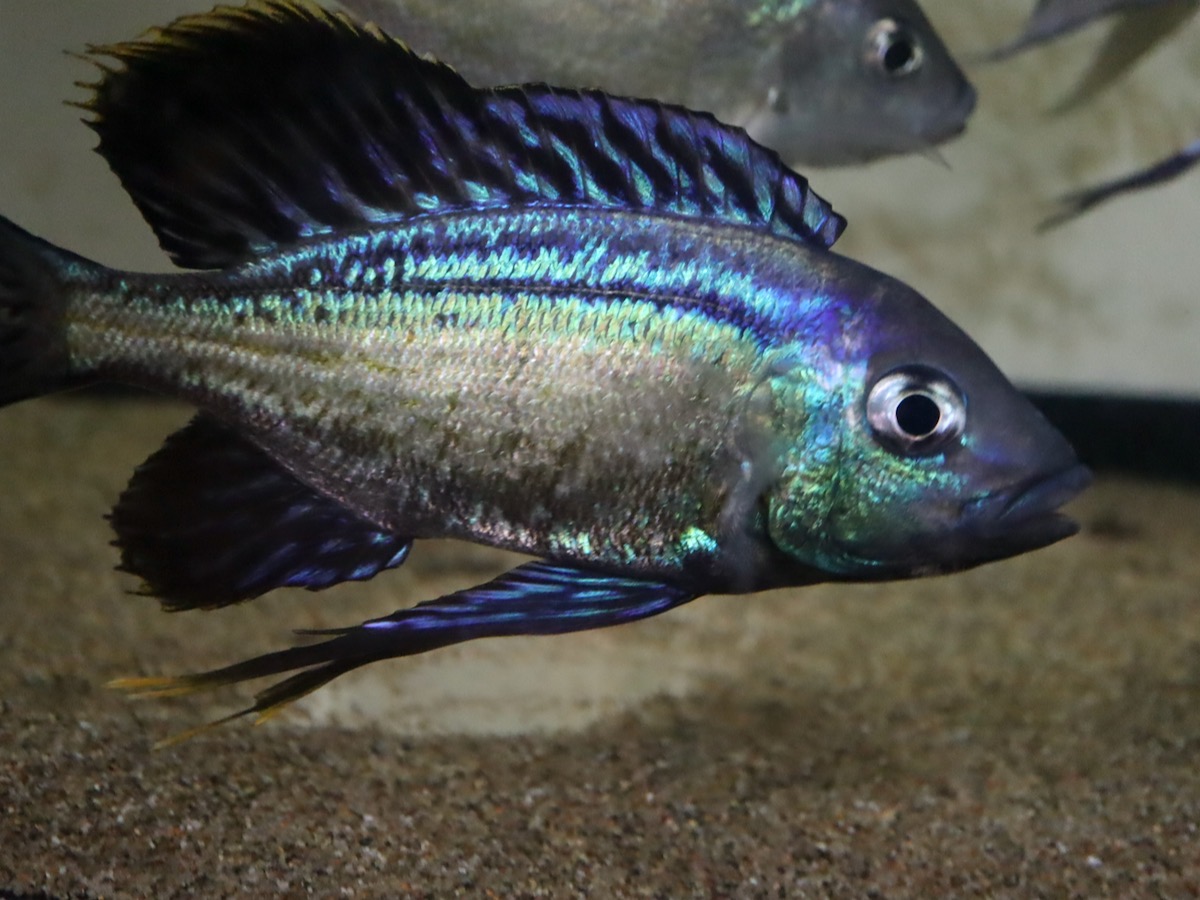
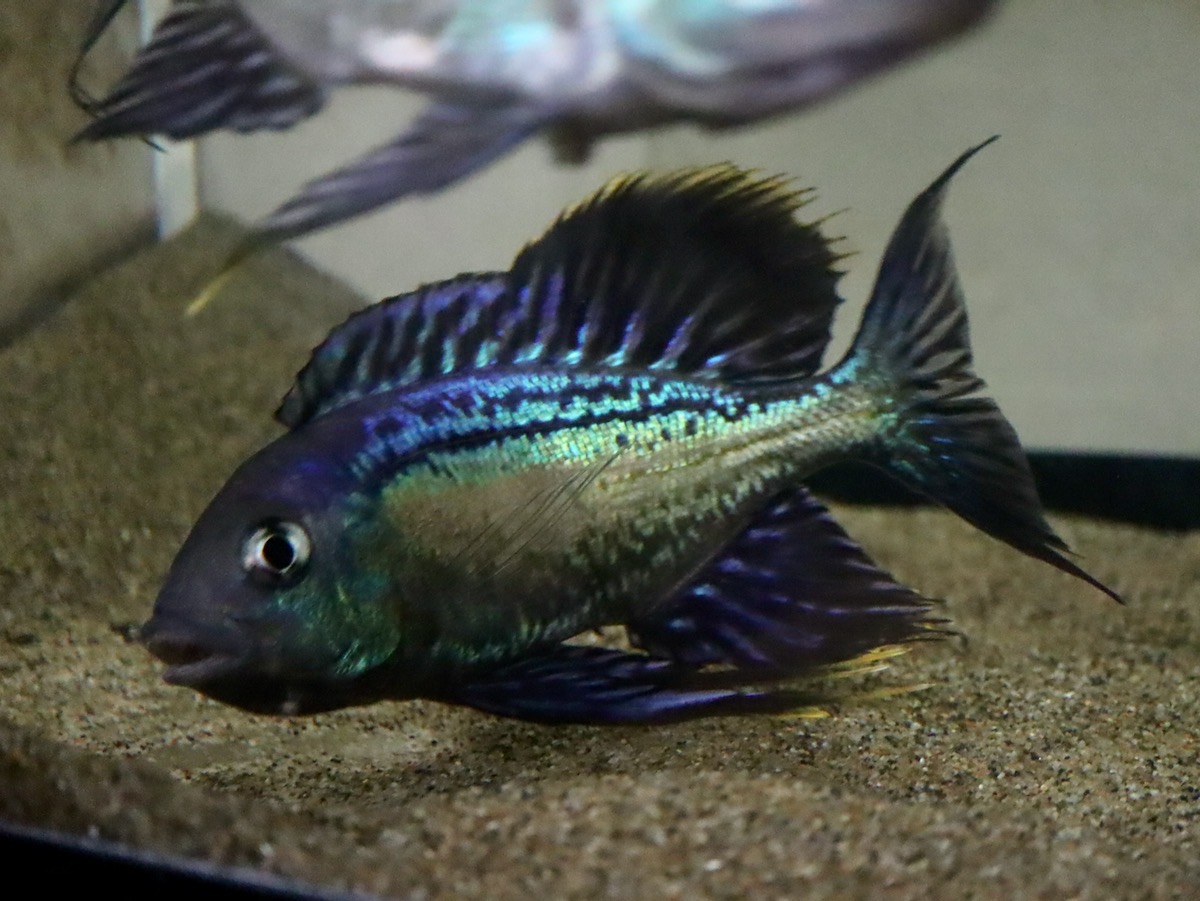
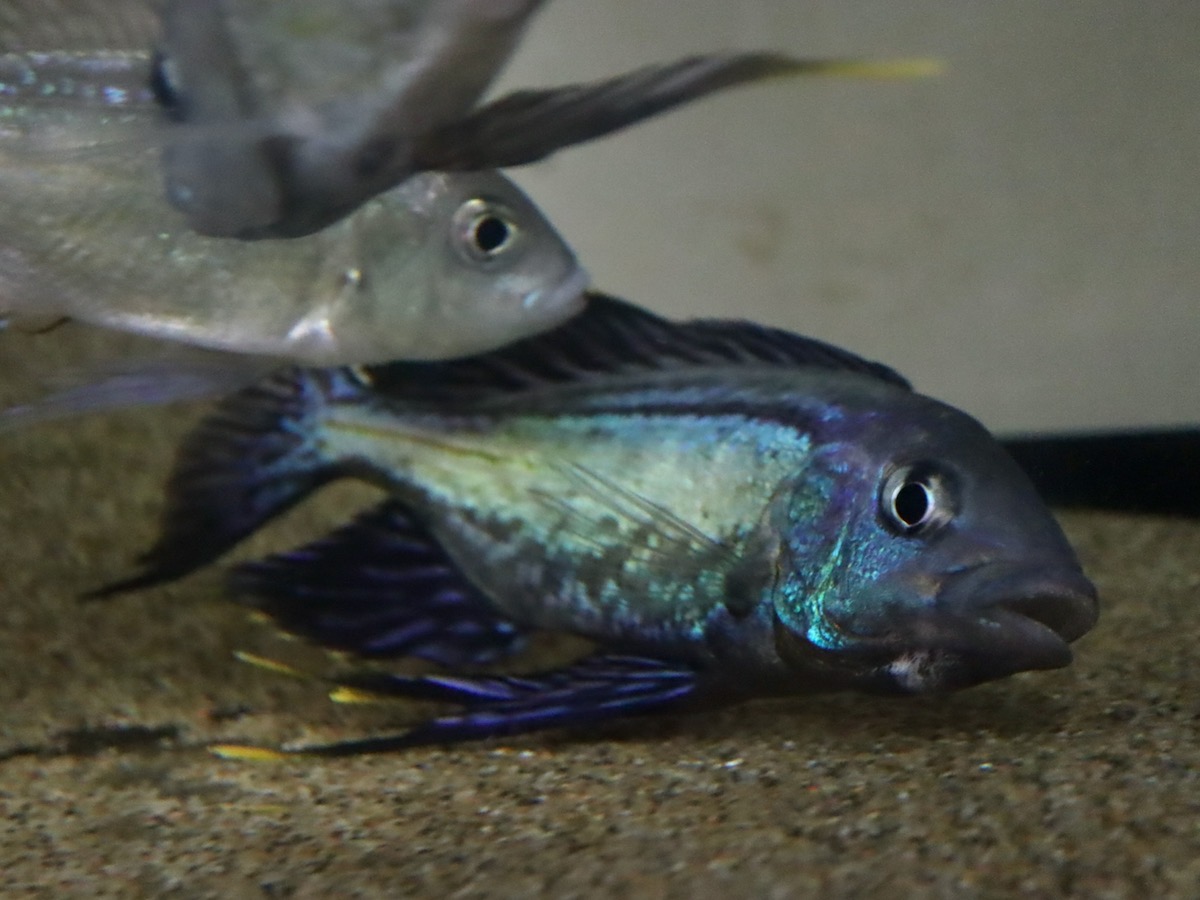
4枚とも同一個体。ヒレを広げて体を傾け、脇腹で底砂を擦りながら円を描くように泳いで、他魚を威嚇します。間接光のみで撮影。下のフラッシュ撮影とは印象が変わります。
Four pictures of the same fish were taken with indirect light. The pictures look differently from ones with a flashlight. To demonstrate, a male circularly swims on the sand with the fins spread and the body inclined.
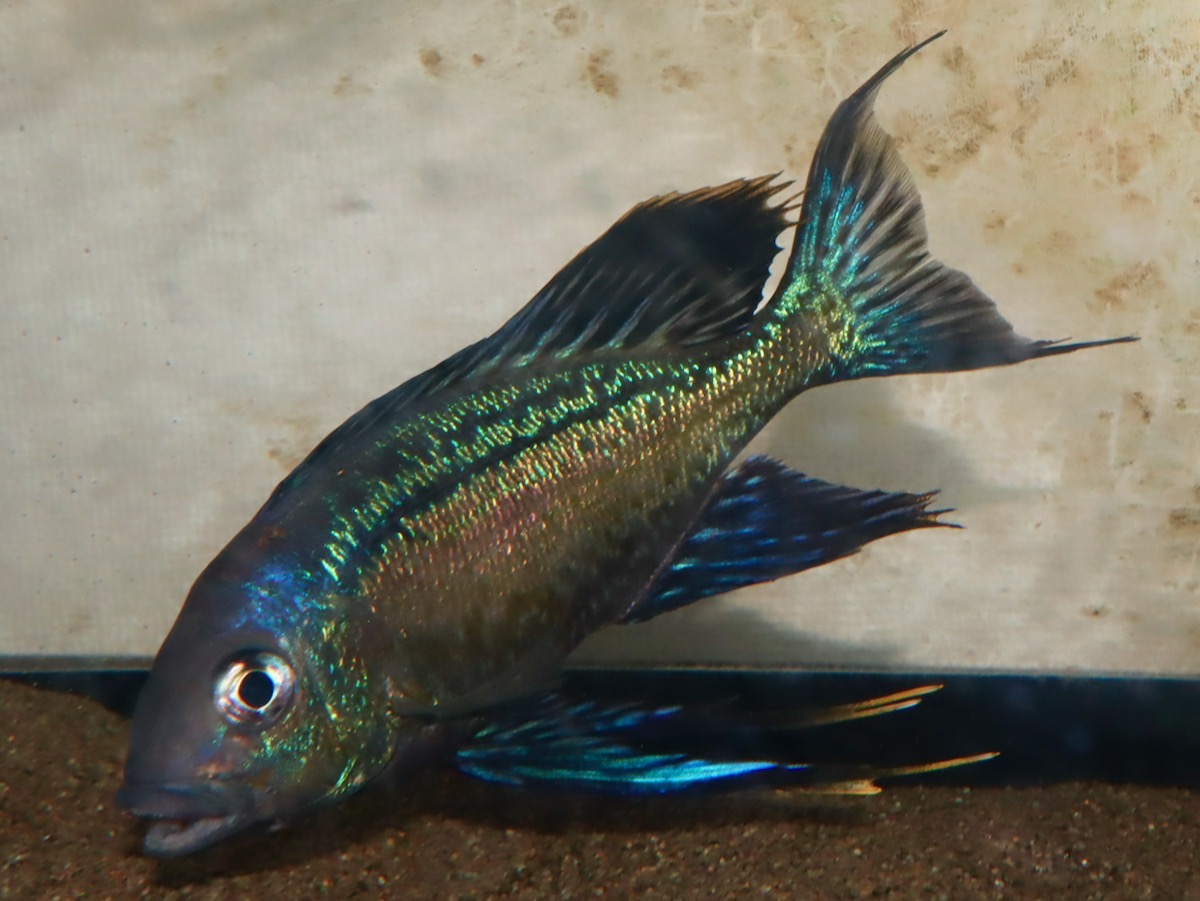
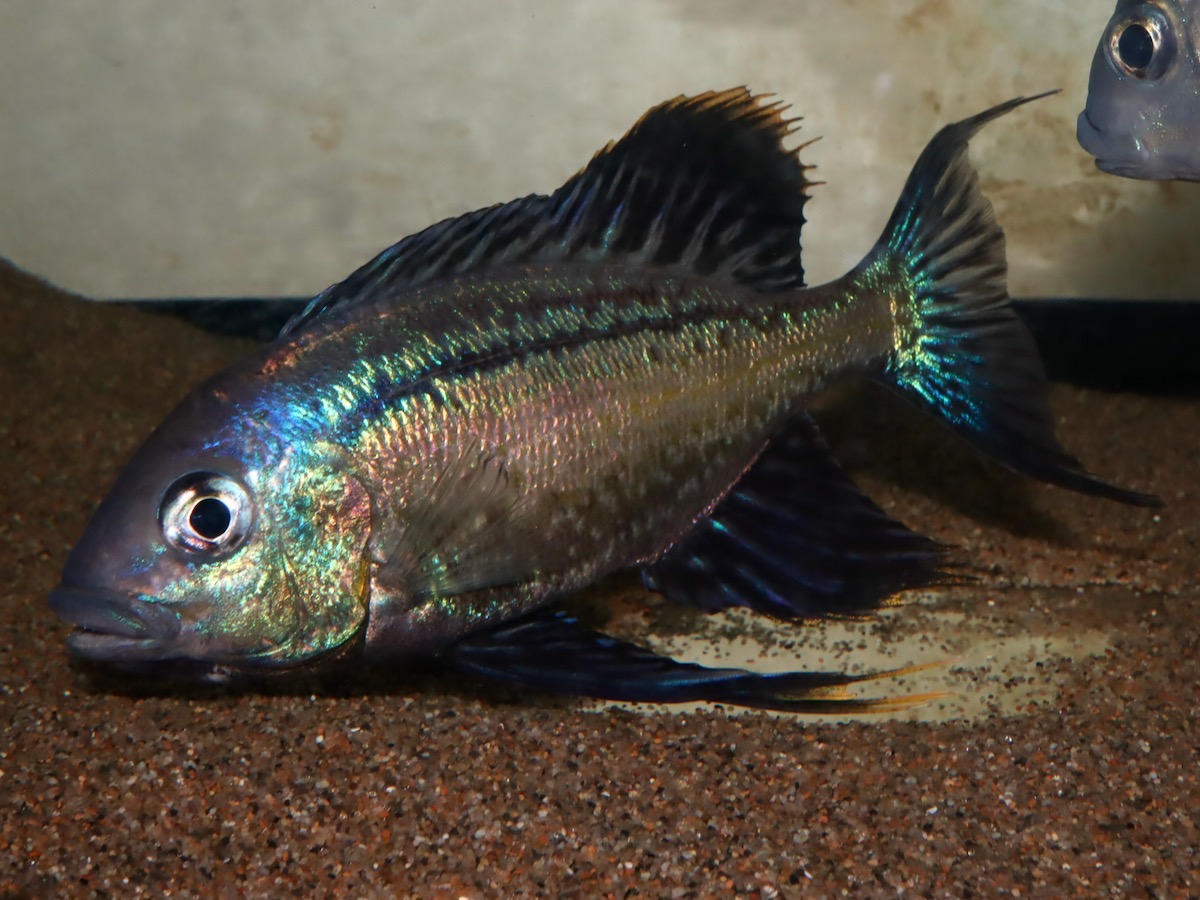
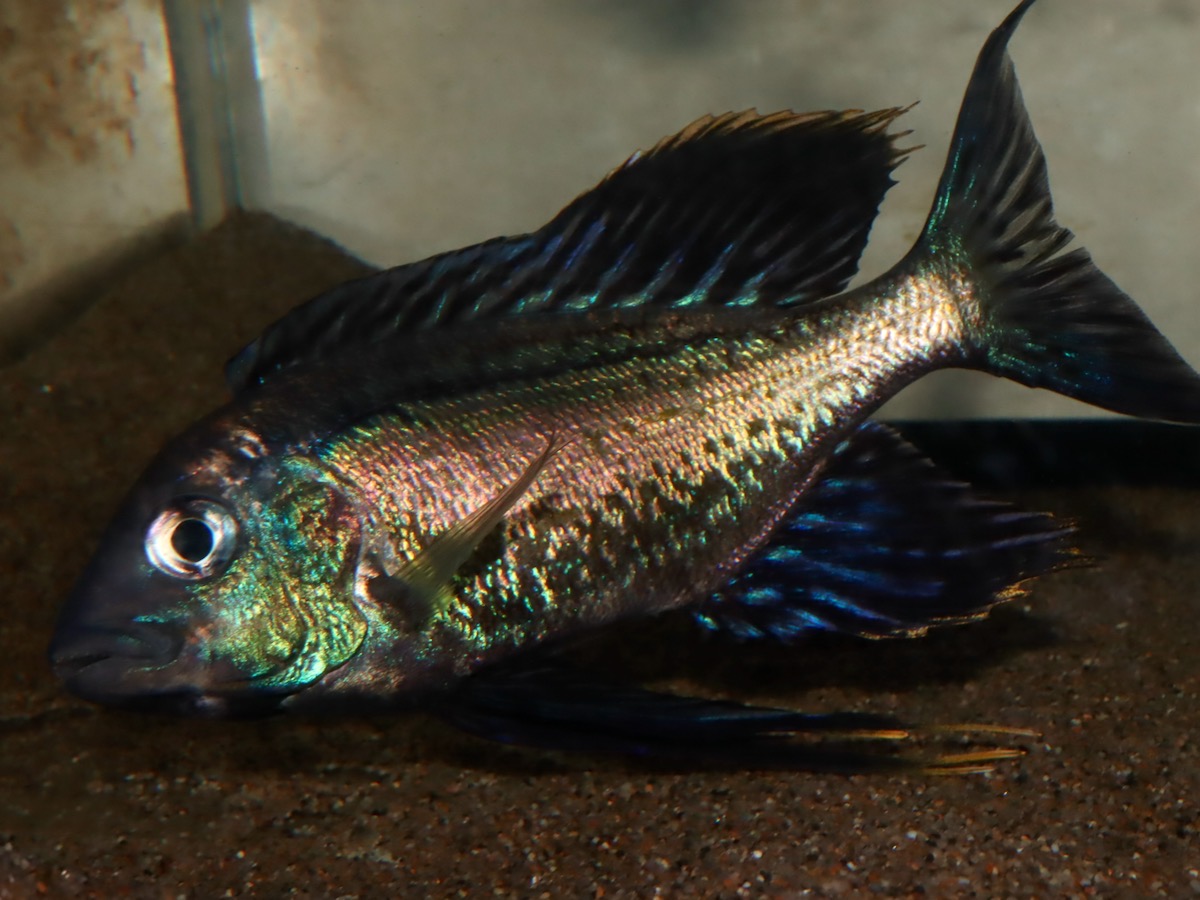
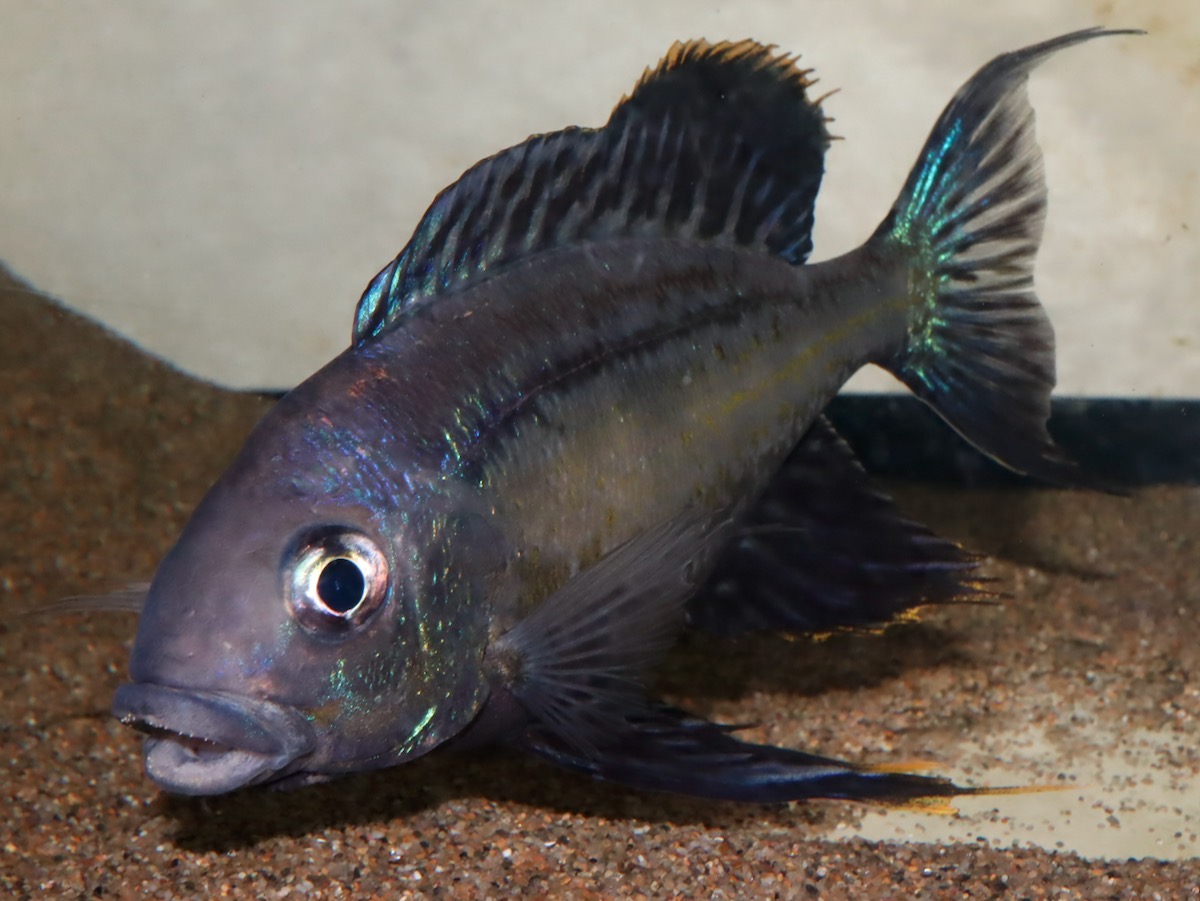


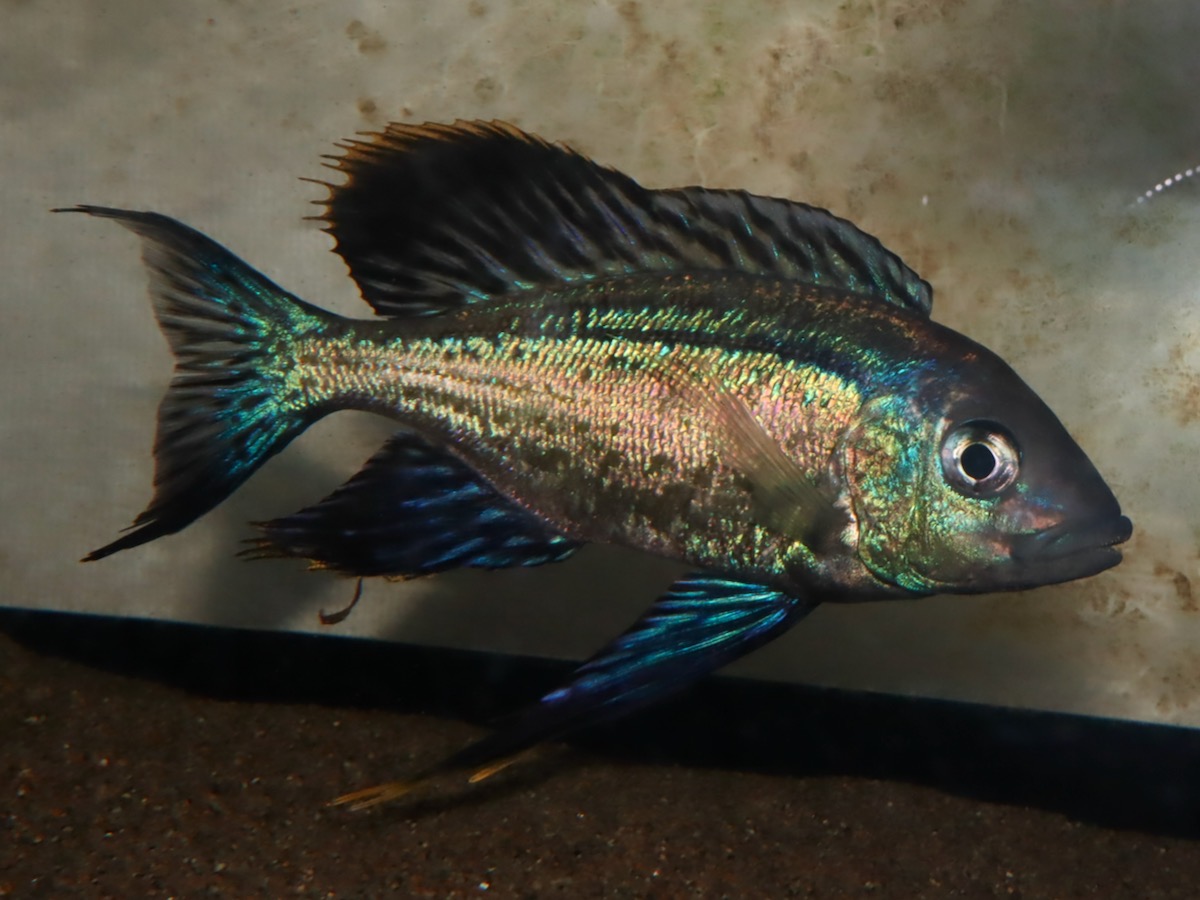

2020年4月。同一個体。フラッシュ撮影。
Apr. 2020. The same fish. The photos were taken with a flashlight.
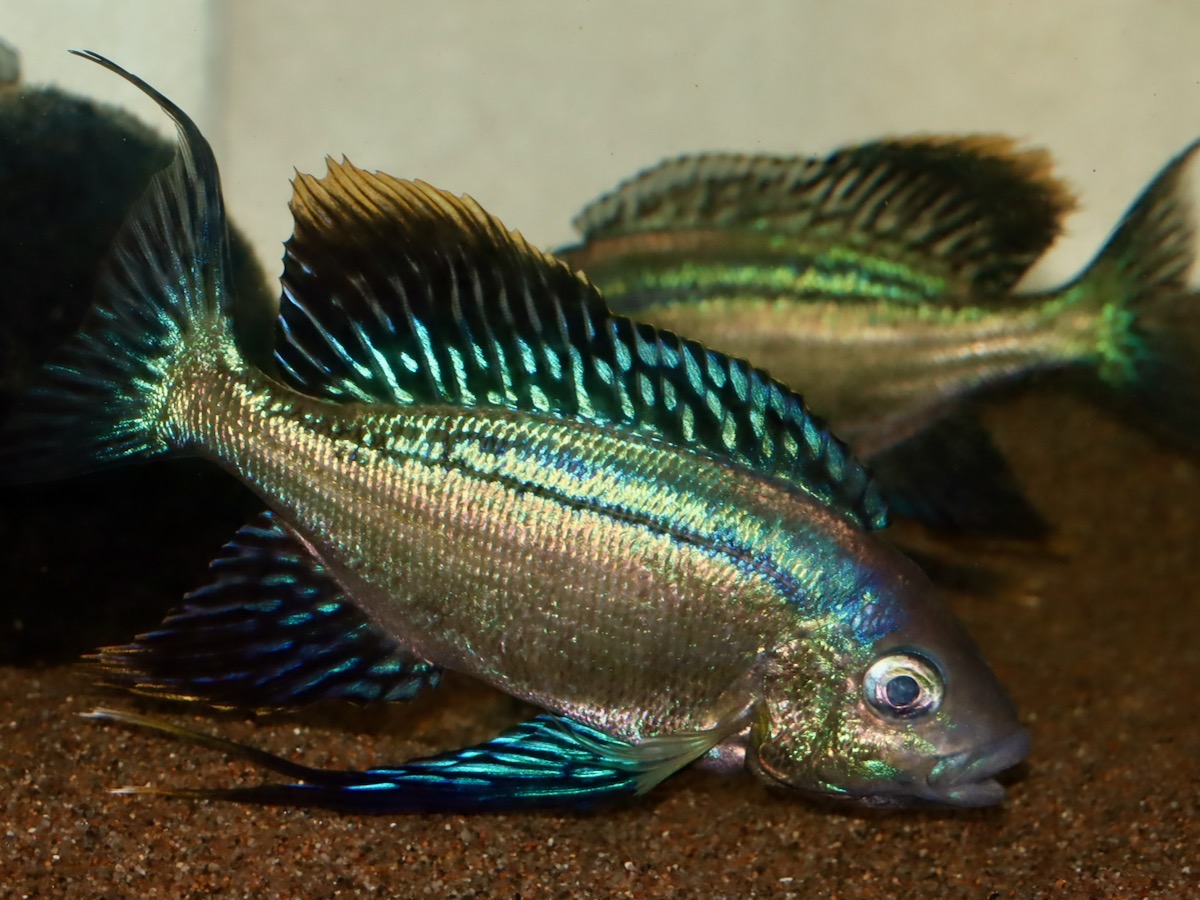
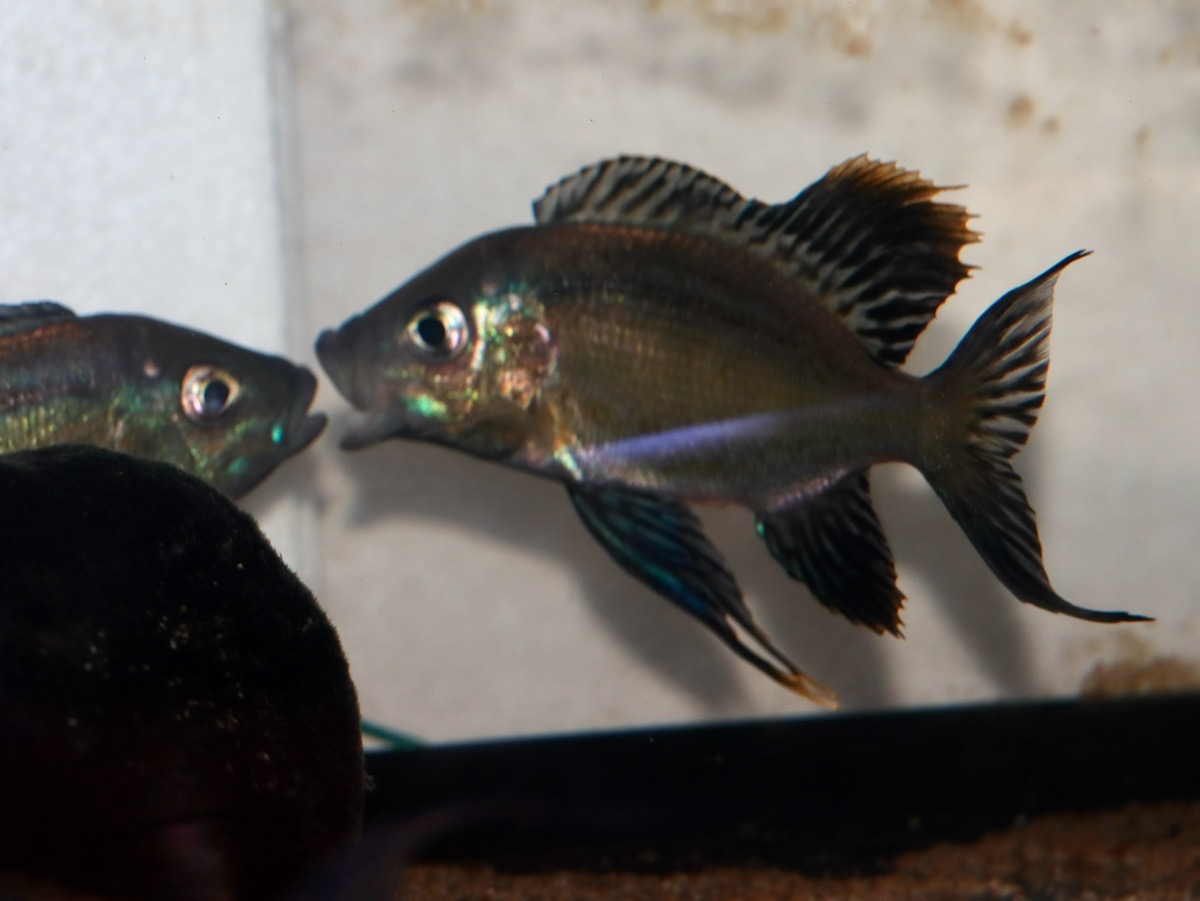
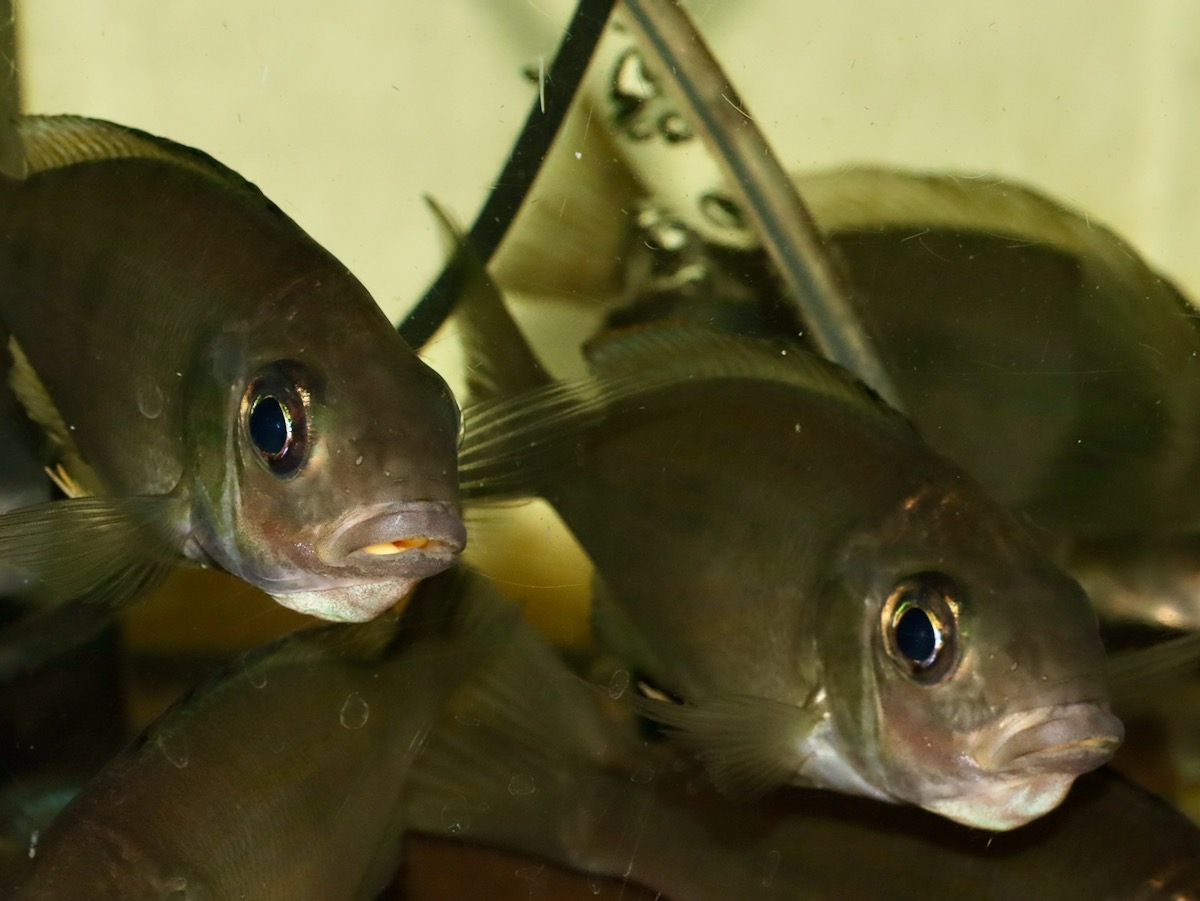

2020年5-7月。メスは何度も卵を咥えていますが、なかなか稚魚は得られません。
May to Jul. 2020. Females often keep eggs in their mouths, but fry cannot be taken out yet.
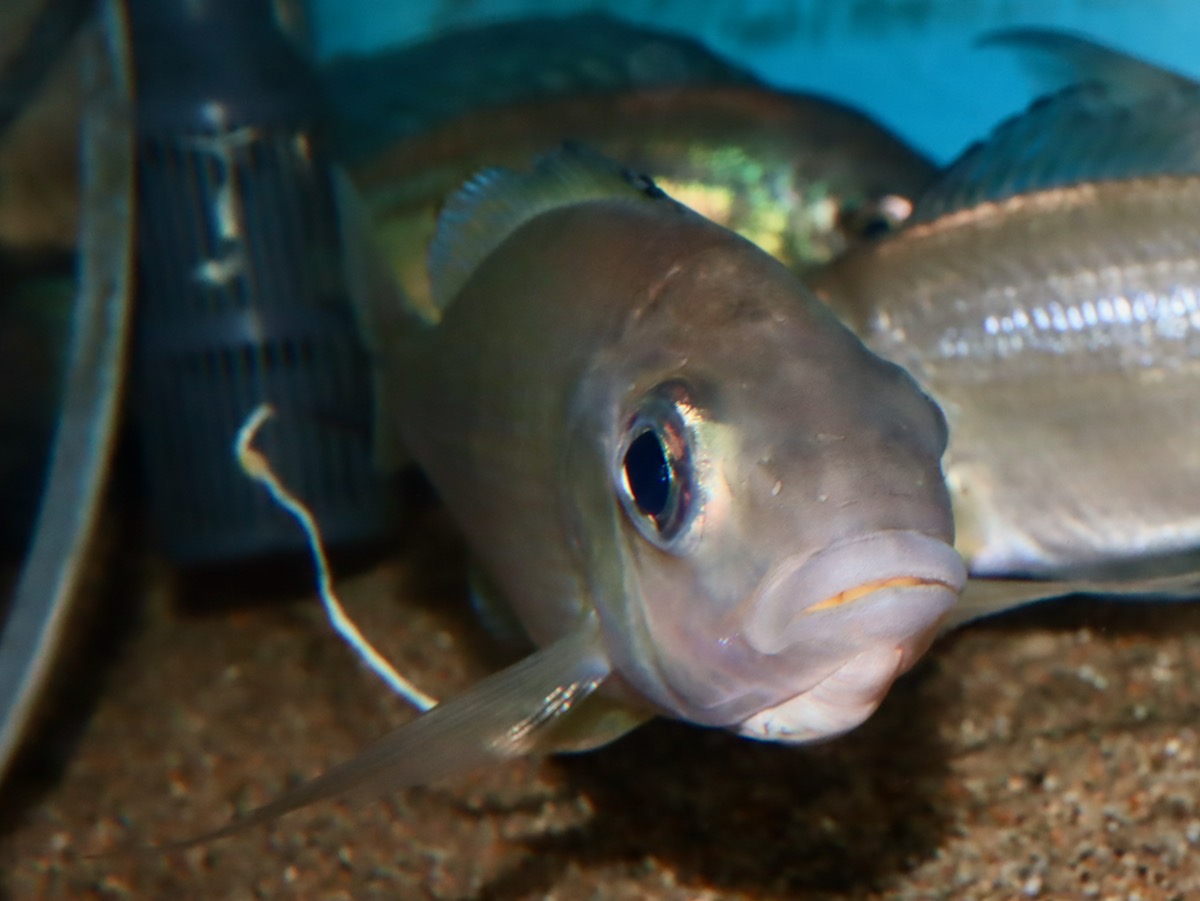
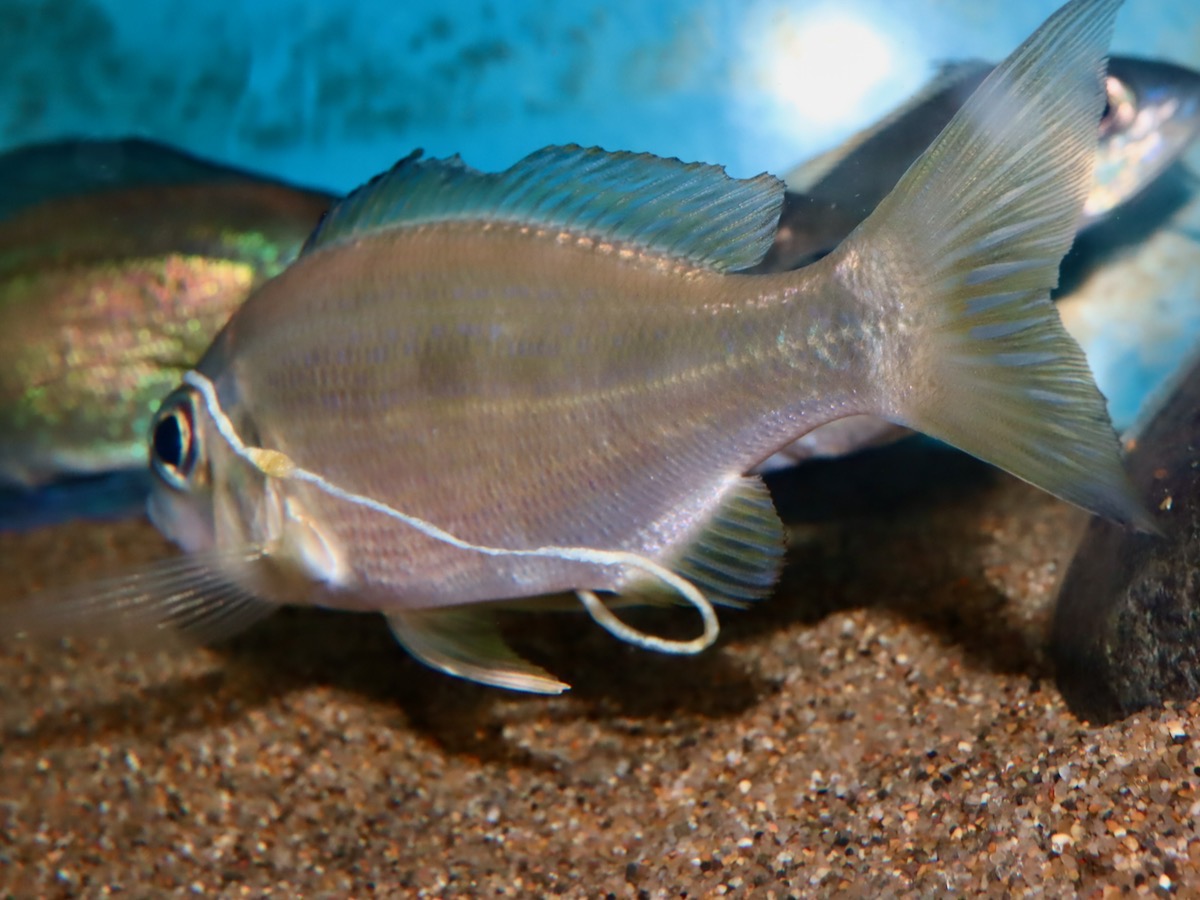
2020年12月。フンを見れば卵を食べたことが判ります。今までの観察から、胚の発生が進んでいないと食卵するように思います。
Dec. 2020. This type of feces shows that eggs were eaten. From my observation so far, I presume that most eggs eaten are not developping.
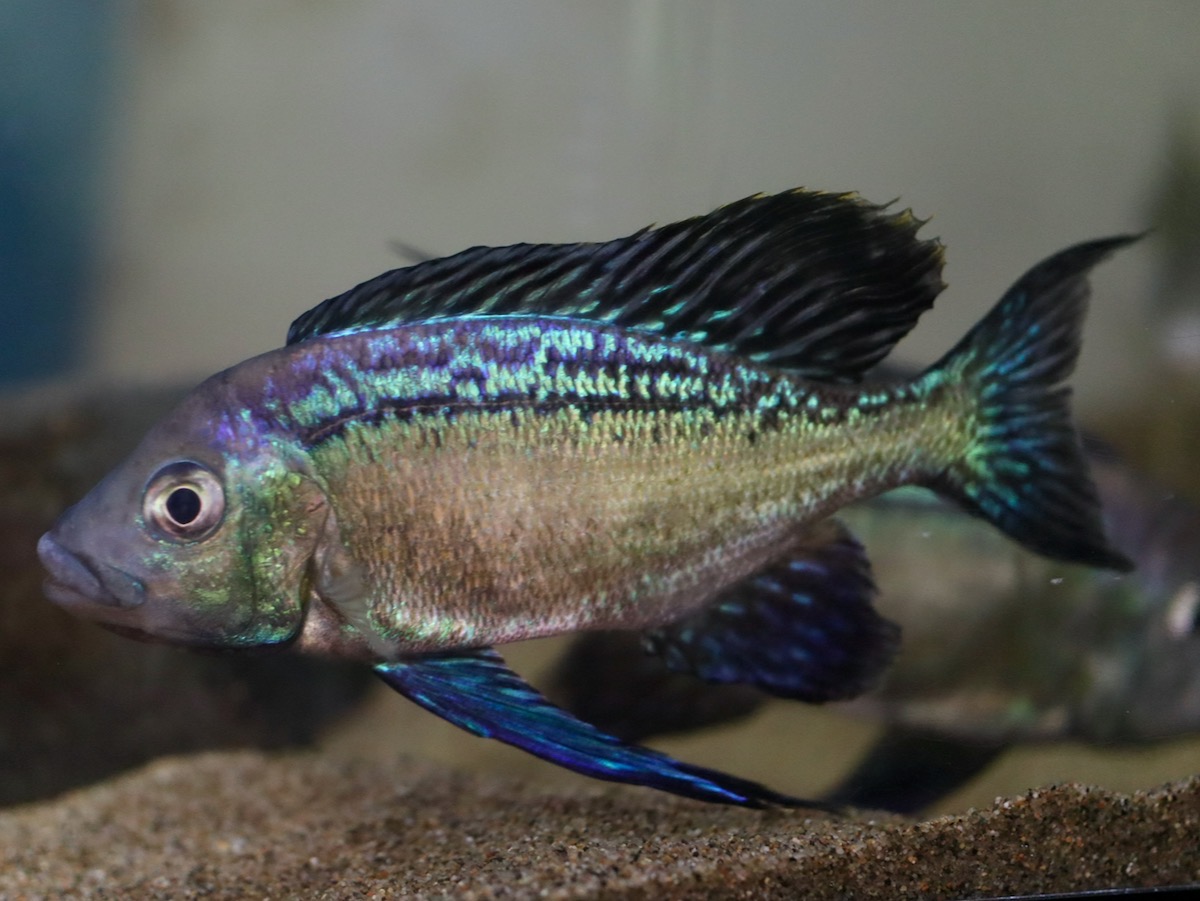
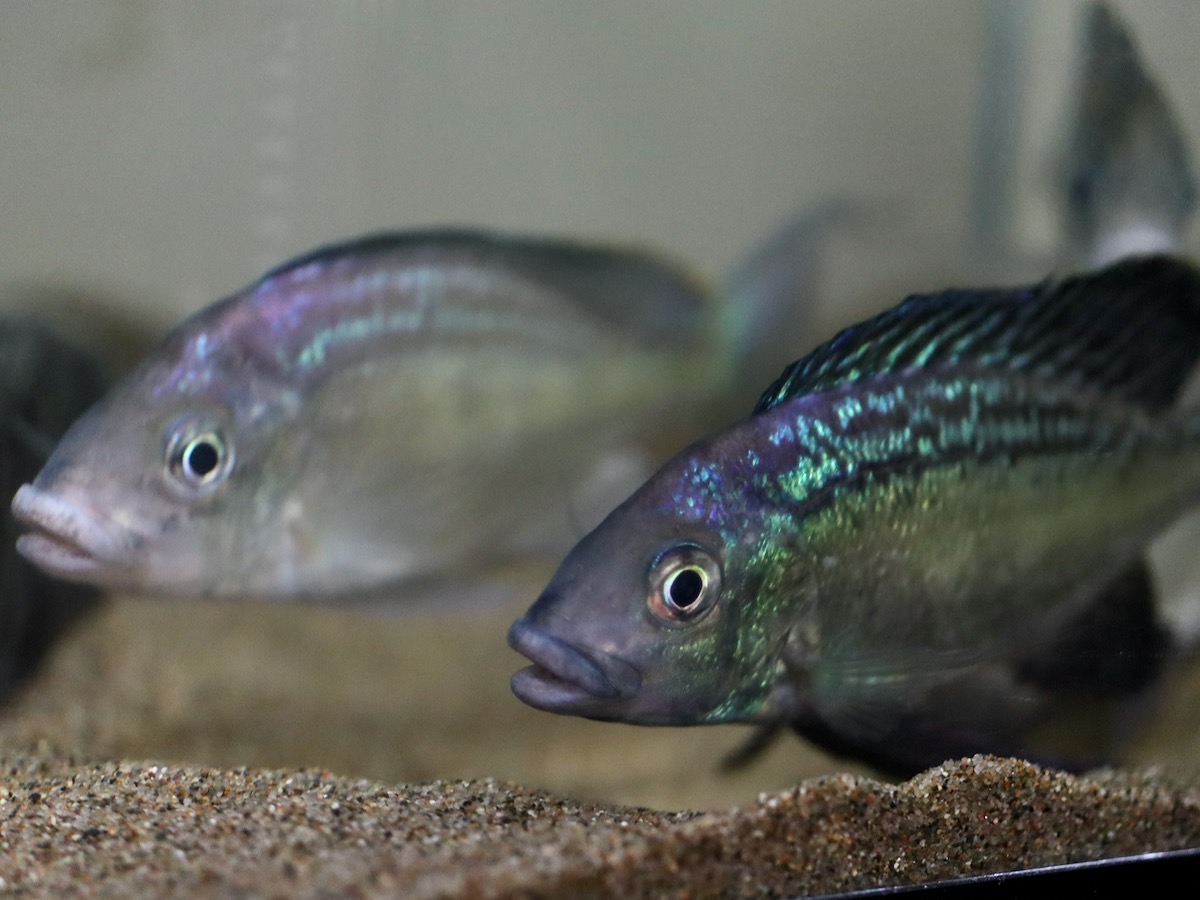
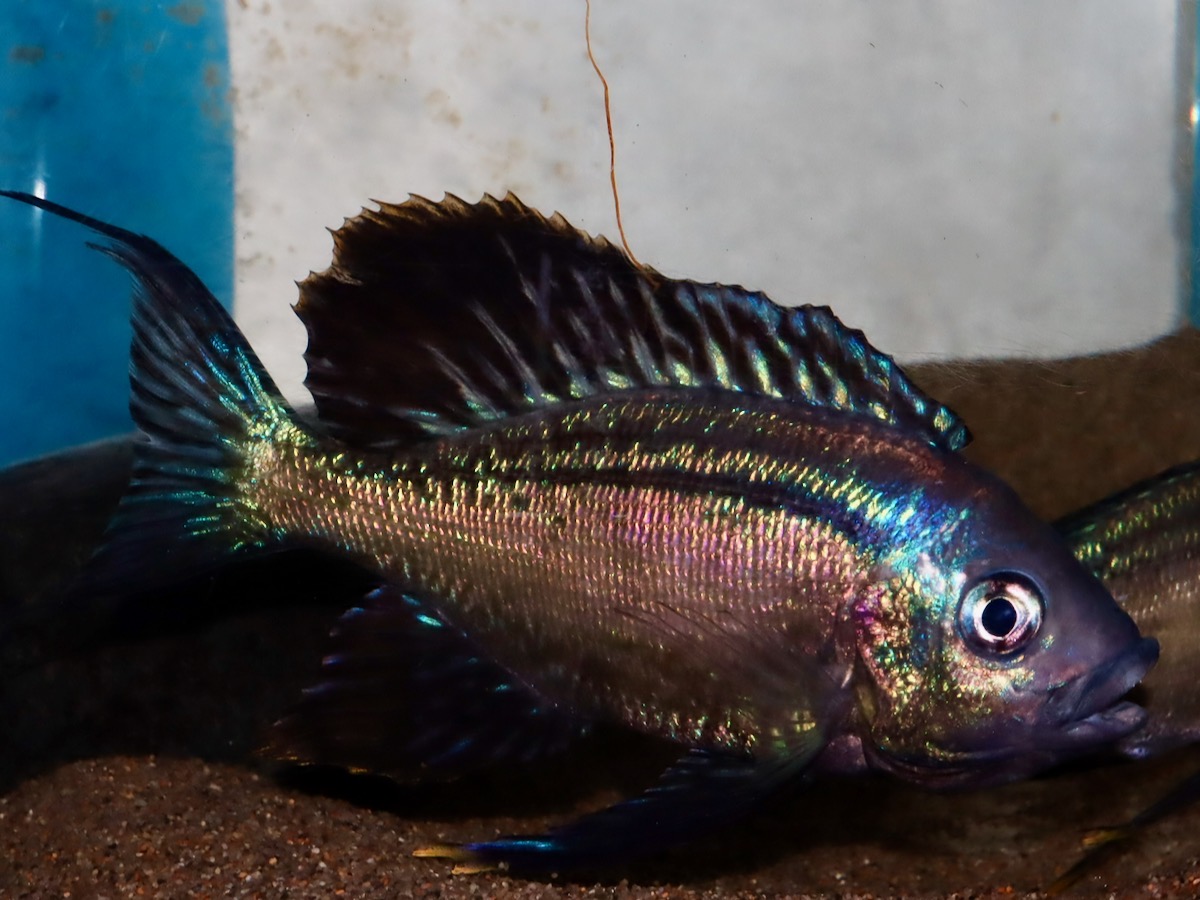
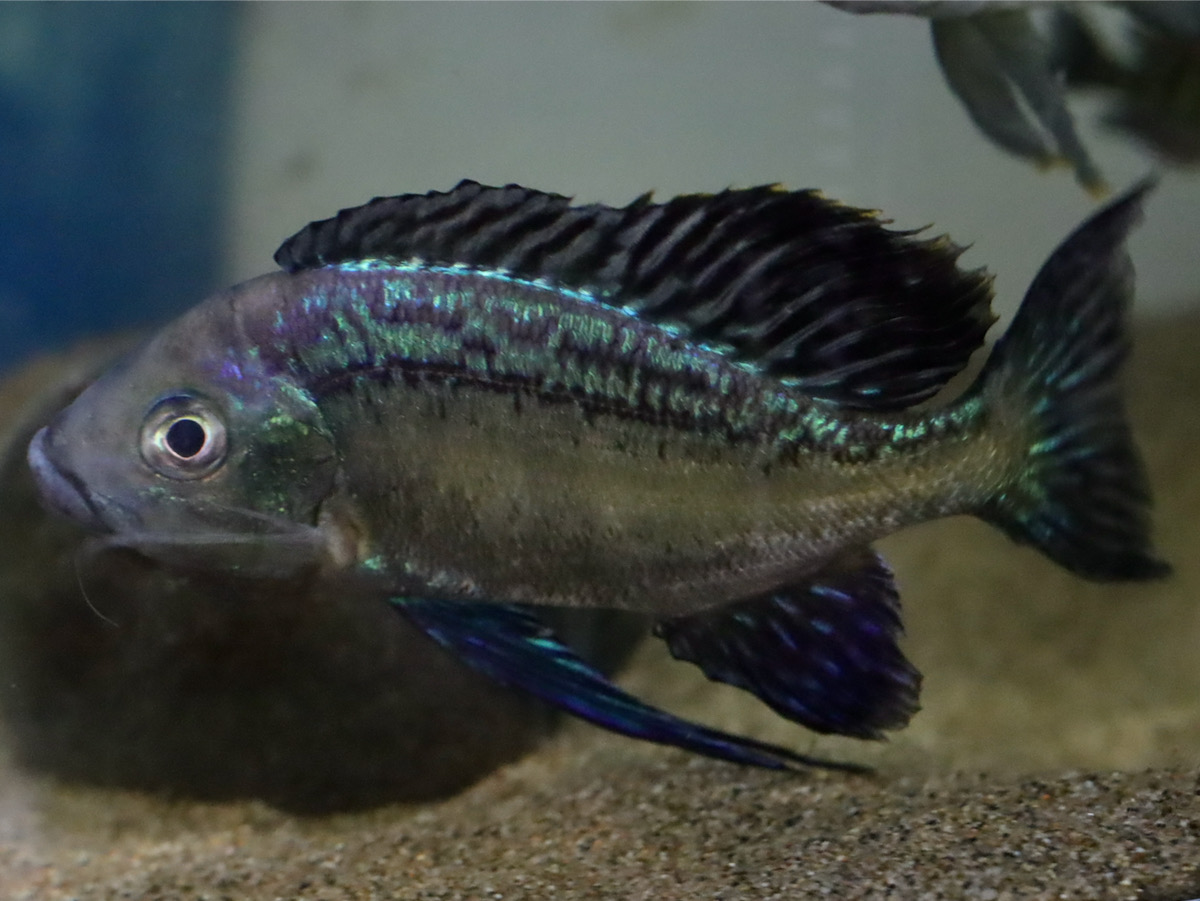
2021年5月。
May 2021.
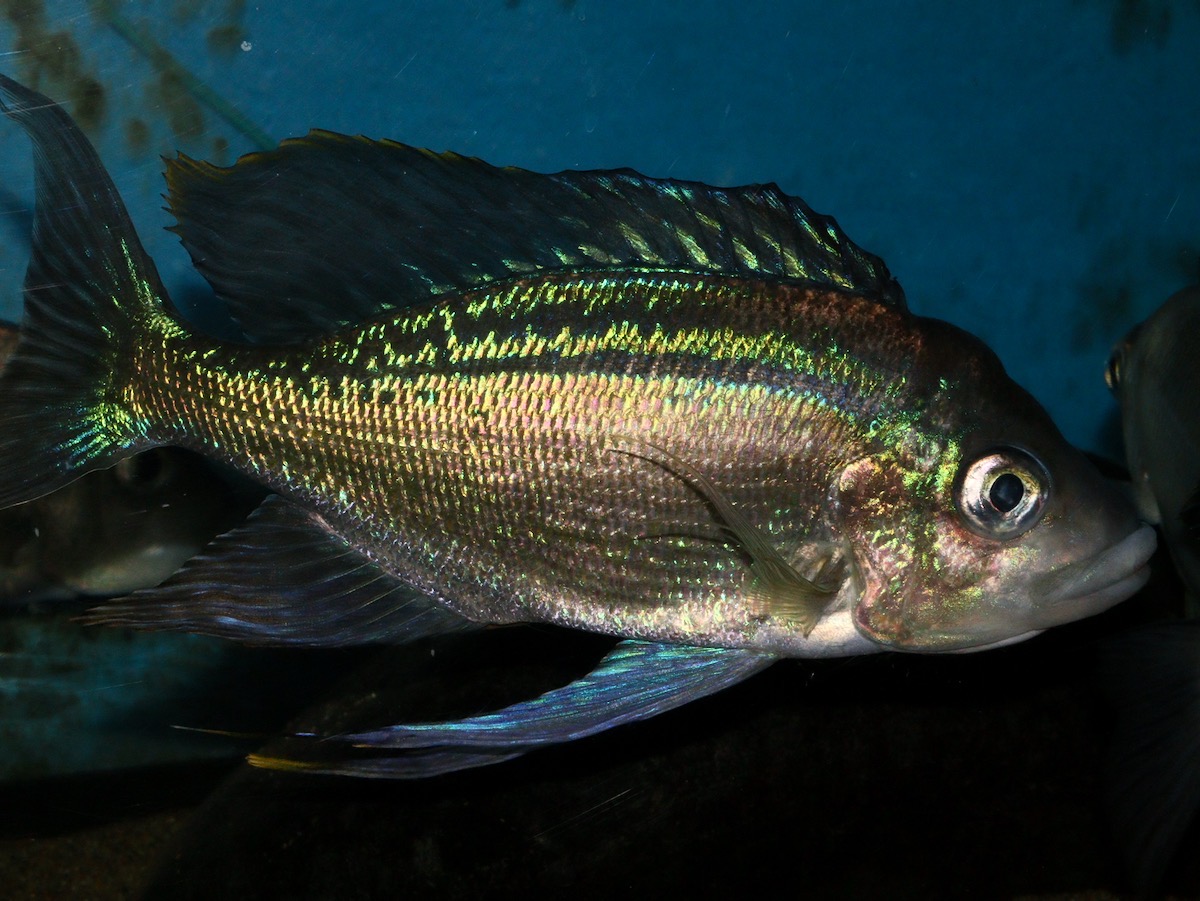
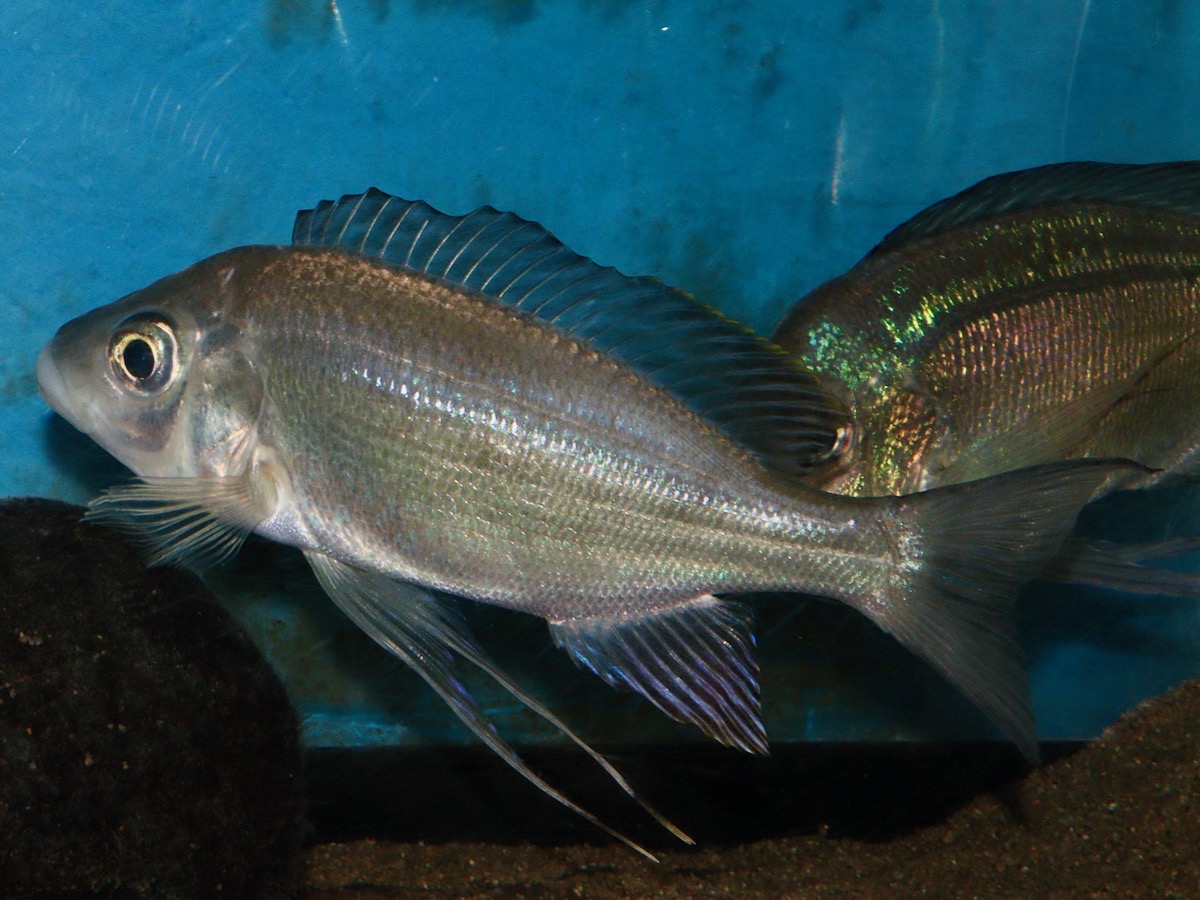
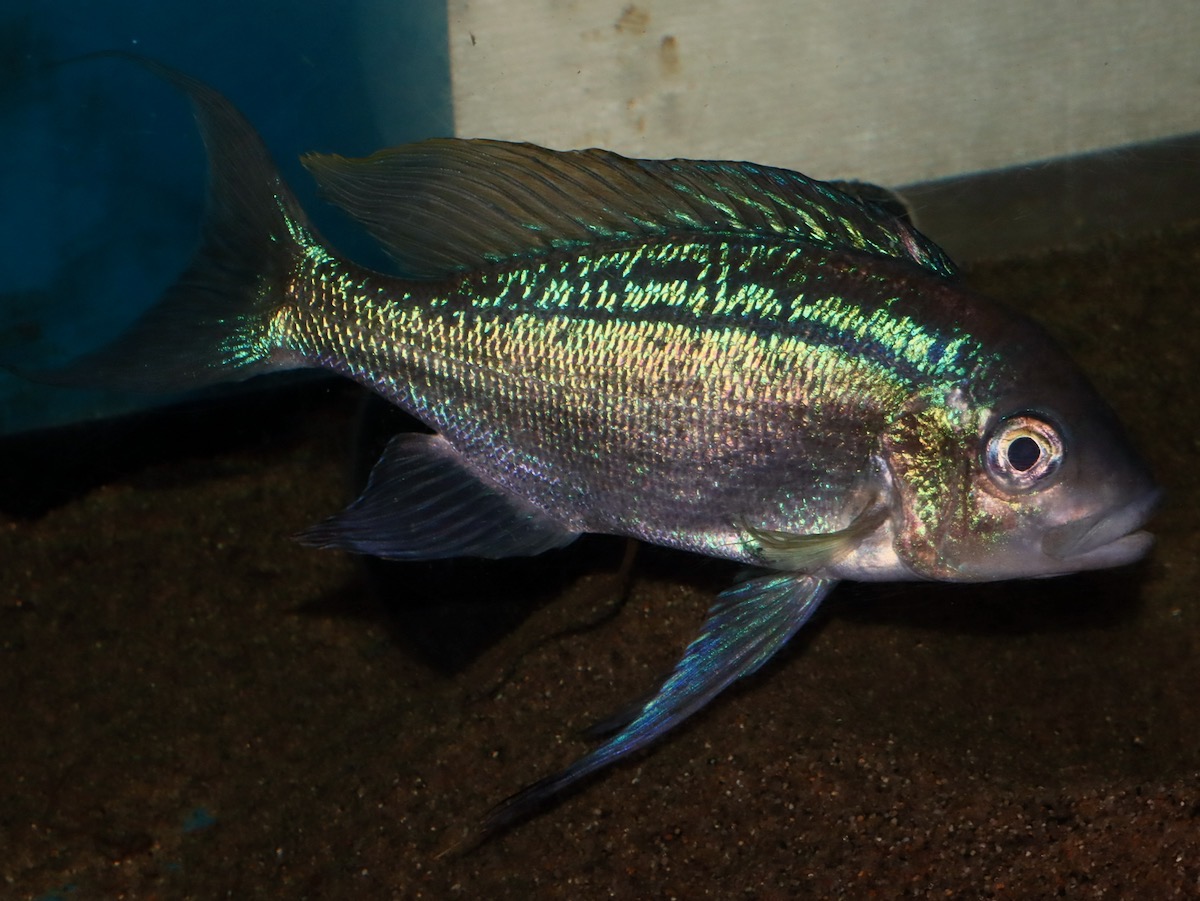
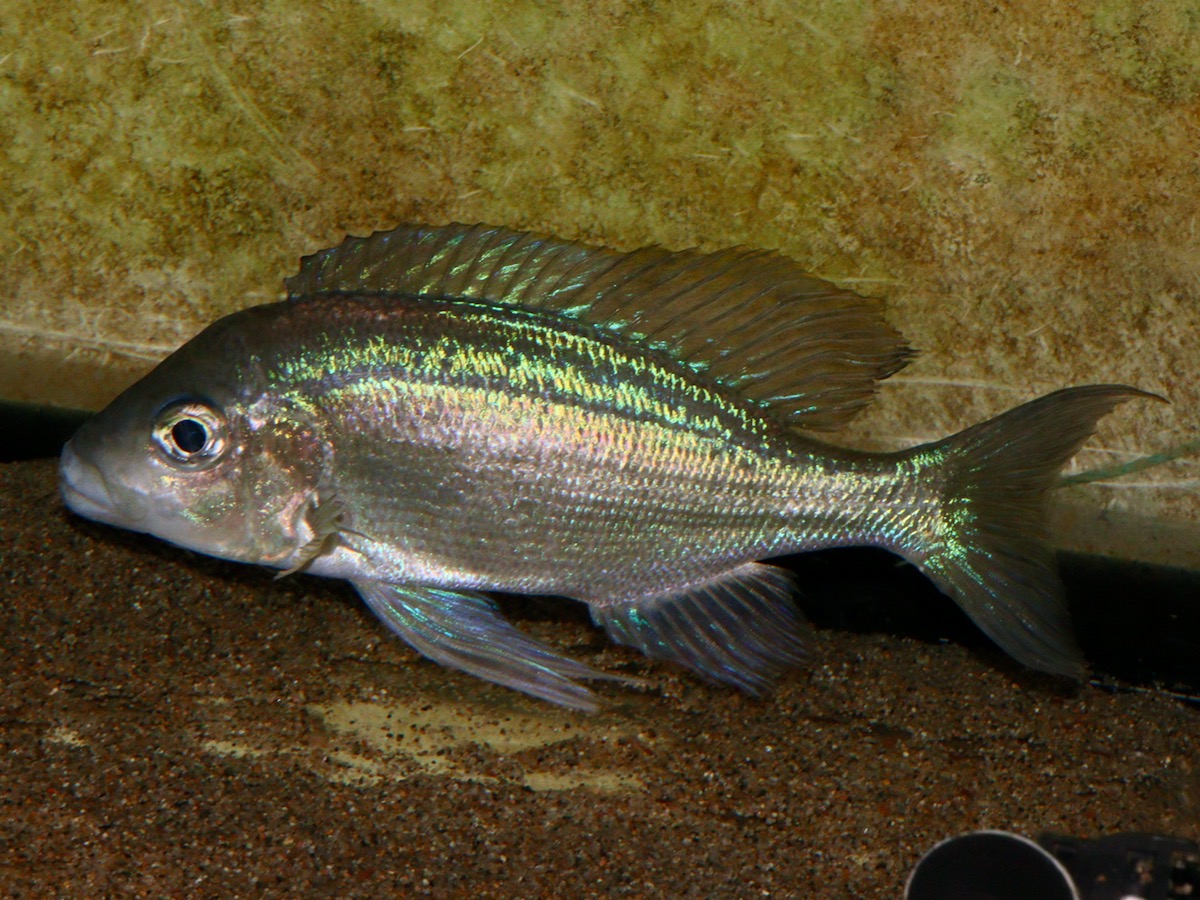
2021年11–12月。
Nov. to Dec. 2021.
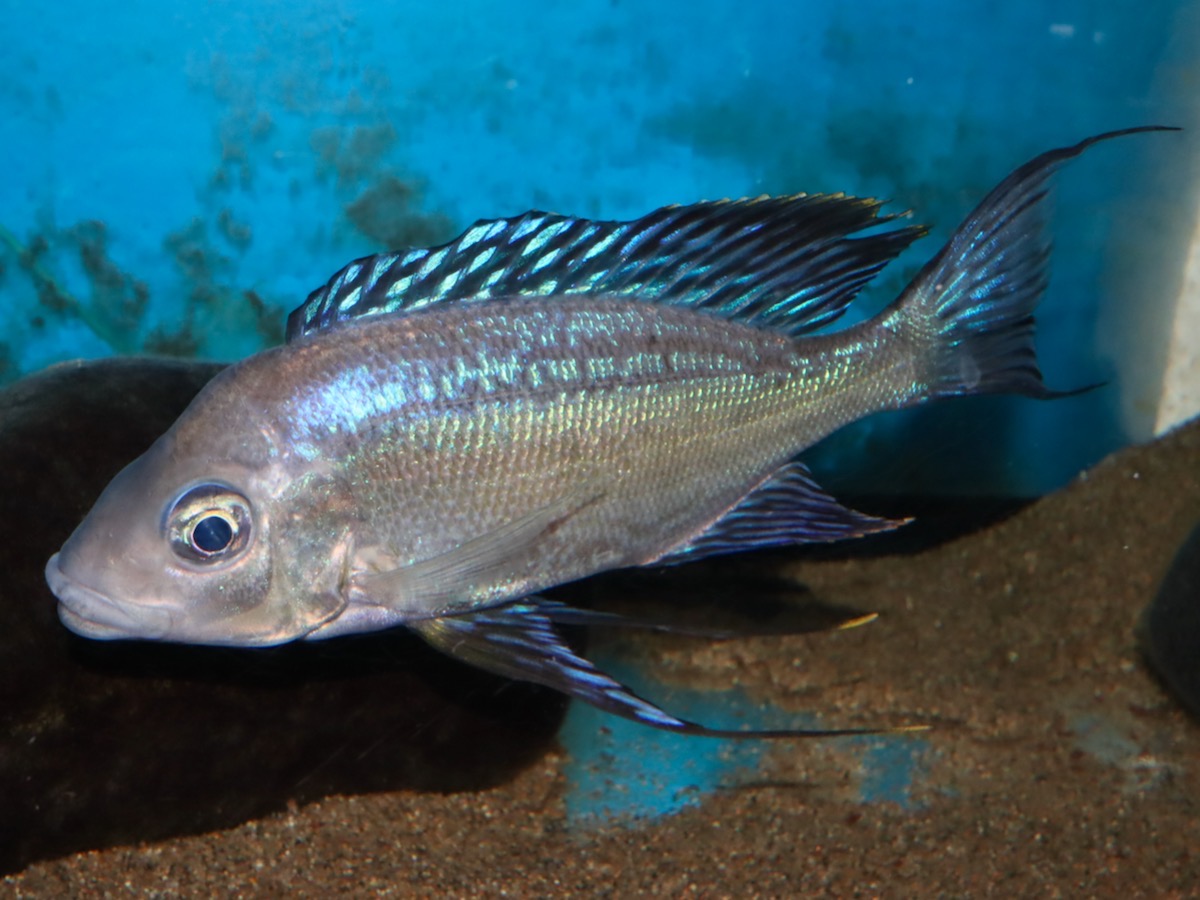
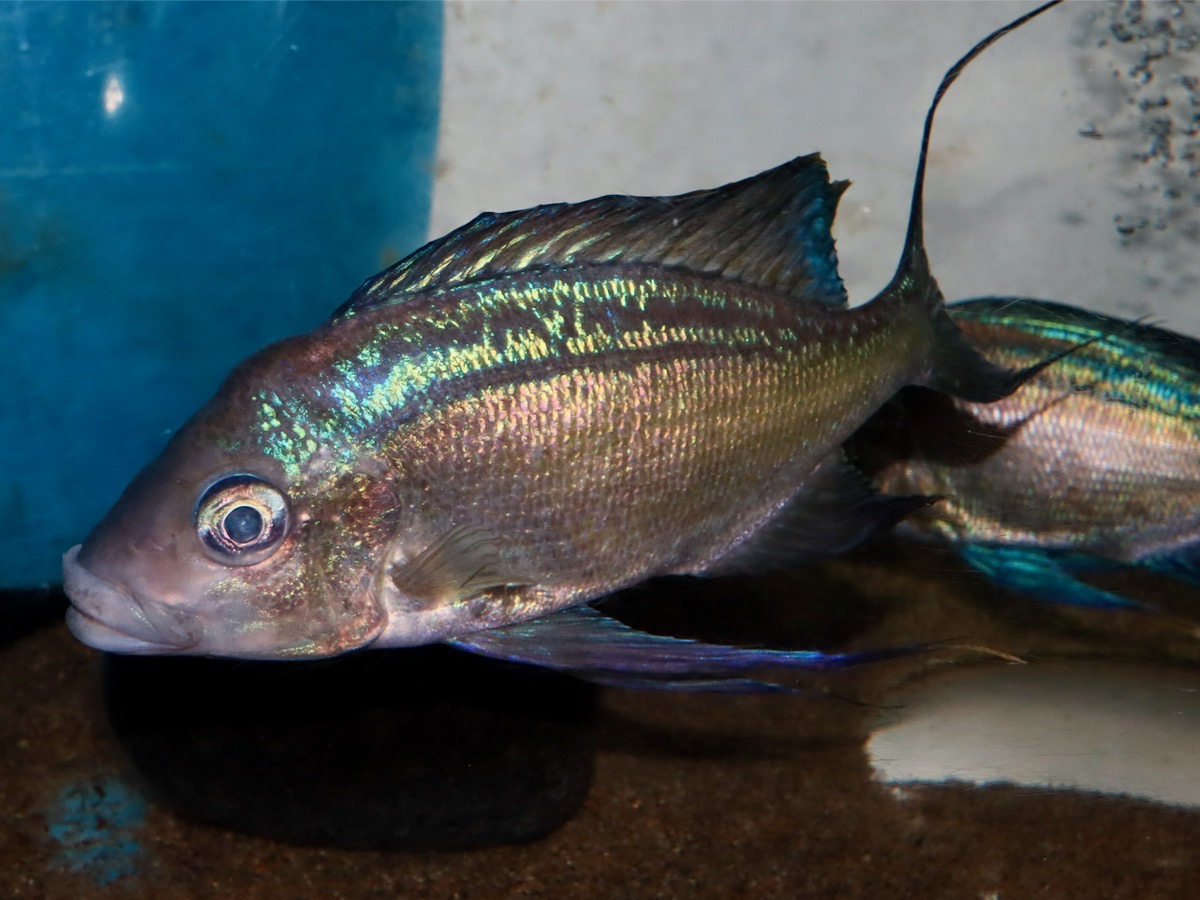
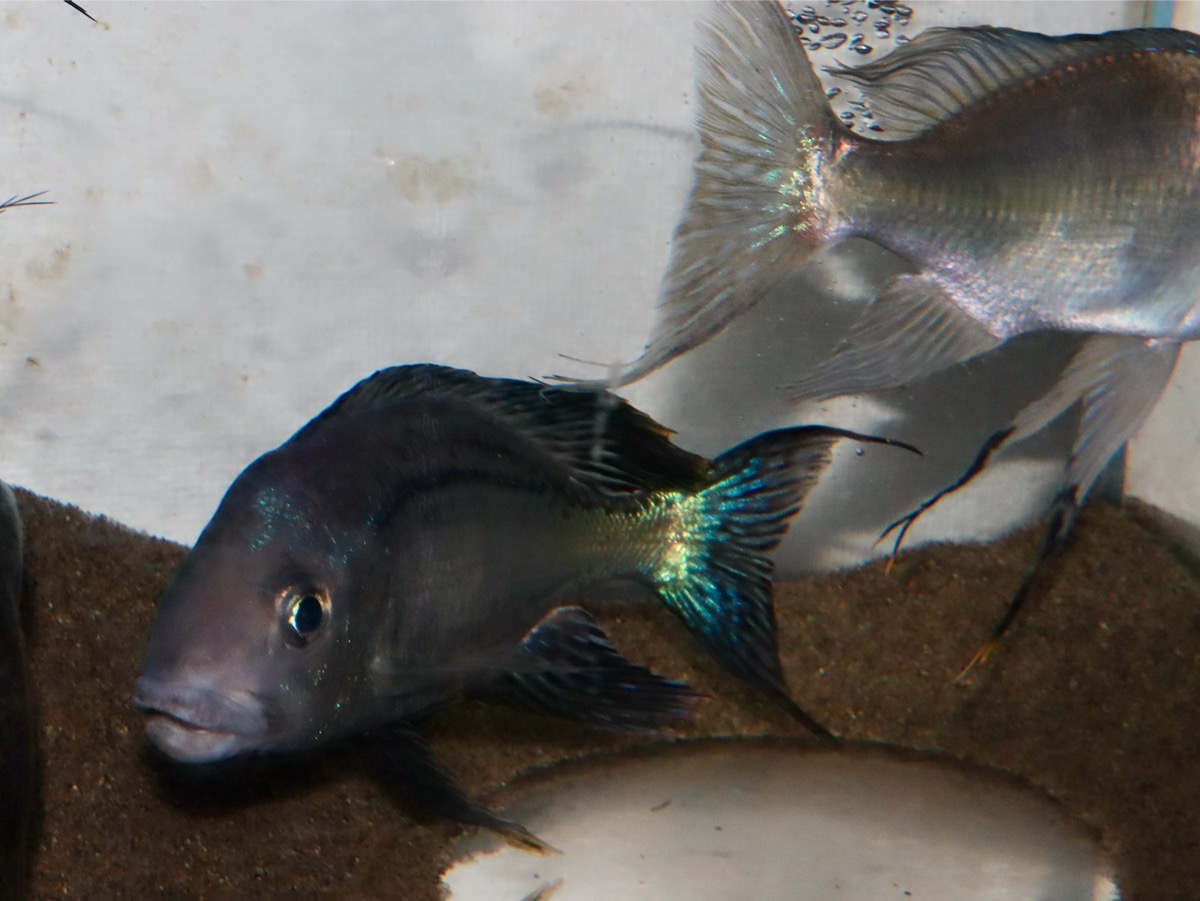
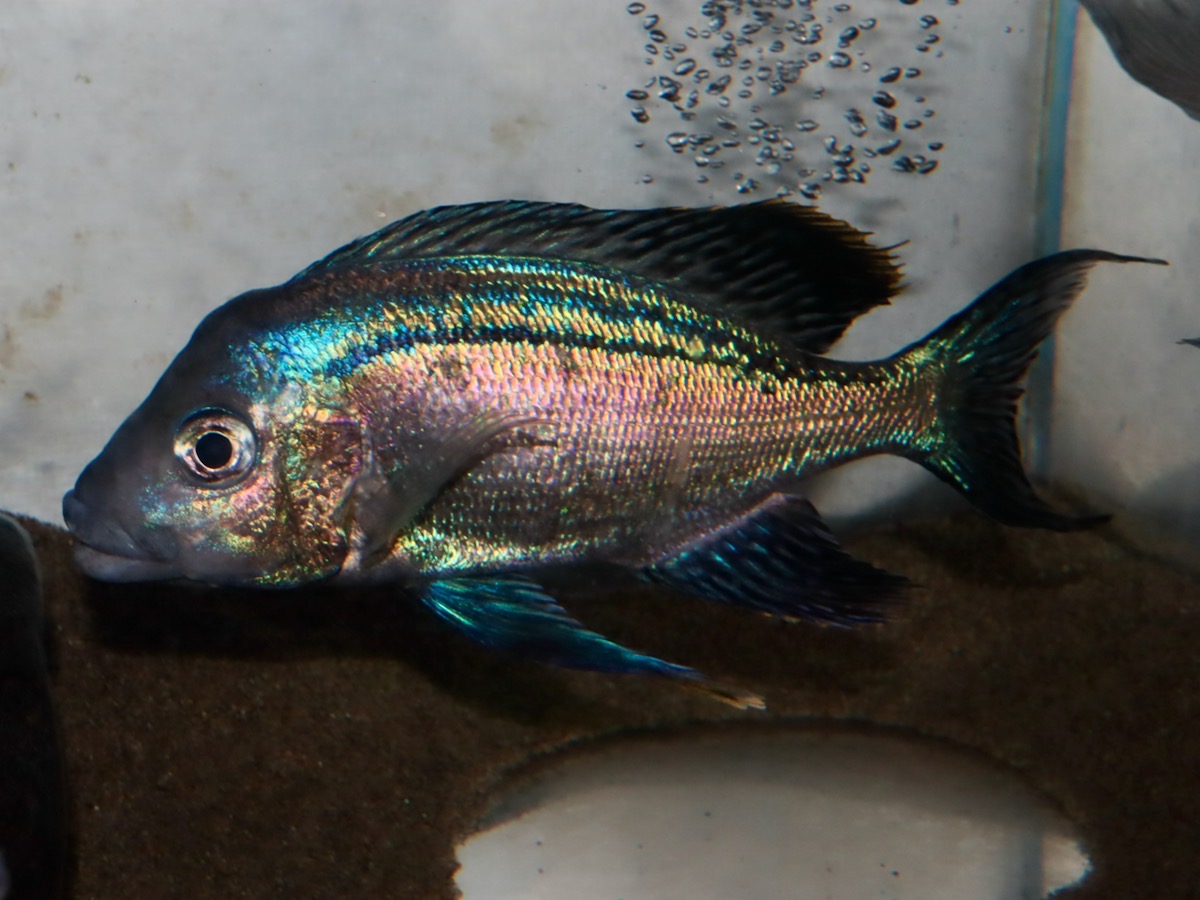
2022年4月。Apr. 2022.
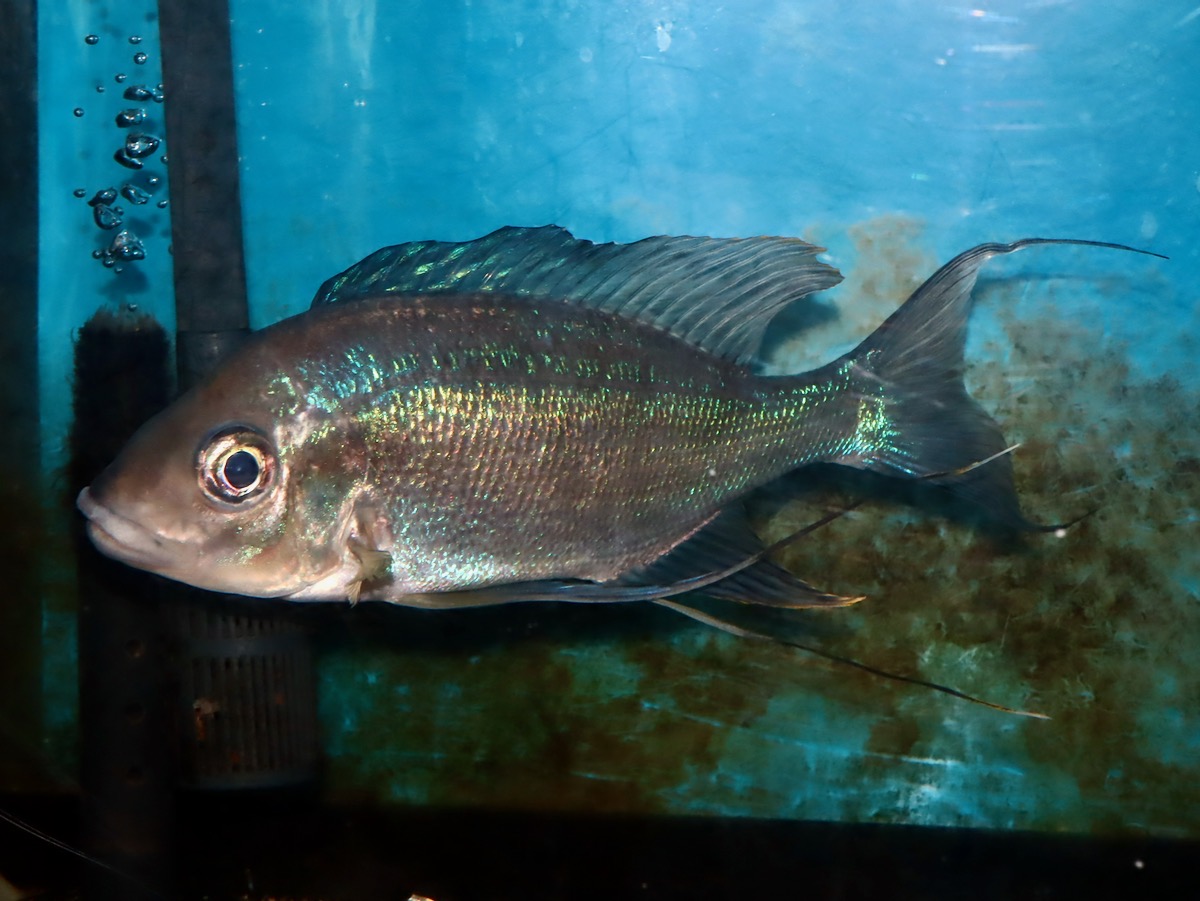
2022年10月。Apr. 2022.